
- [email protected]
- 86-773-286-5632 (Intl rates apply)


China Travel Guide
China with 3,600 years of written history, is a popular destination full of profound cultures, mysterious places, and stunning sights.
Our China guide gets you closer to top travel destinations, top things to do, and a useful travel guide. We are here to make you understand China more deeply and plan a trip easier.
- Capital: Beijing (since 1271)
- Population : 1.41 billion (2021)
- Area: 9.6 million km² (3.7 million mi²)
- Location: East Asia
Top Travel Destinations in China
China has many places worth visiting, such as Beijing and Xi’an for history and cultural experience, Guilin and Zhangjiajie for natural scenery, and Shanghai for the modern part of China.
Capital of China. Historical sites
Metropolis, and exotic culture
Visa-free, Vibrant Culture
Heaven on Earth, West Lake
Venice of the East, Classic Garden
Scenic area in China. Landscapes
Top Things to Do in China
With a vast territory and rich tourism resources, China is a paradise for tourists. No matter what kind of traveler you are, you will have a great experience when traveling in China. Here, we have listed the top 6 things to do for your China tour.
The Great Wall
The Greatest Human Feat
The Giant Panda
Say Hello to Cute Pandas
The Forbidden City
Explore the Imperial's Secret
The Terracotta Army
Meet the Ancient Soldiers
The Water Town
See Chinese Traditional Elegance
The Li River
The Most Beautiful River
Useful China Travel Tips
There are so many fantastic things for tourists to explore in China. Traveling to this vast country is not as tough as you thought. We have prepared useful travel tips to help you to plan your China trip.
Best Time to Visit China
How to plan a trip to china, how to get a china visa, customize your china tour, top attractions in china, china entry and exit requirements and procedures, china travel ideas.
China has unique natural landscapes, exotic Eastern cultures, and customs, adorable giant pandas, various Chinese foods, amazing kung fu, a unique tonal and pictographic language spoken by one-fifth of the world’s population, and many other fantastic things for you to explore.
Natural Beauty
- Top Mountains in China
- Top Hot Springs Resorts in China
- Top Rivers in China
History and Culture Experience
- How to Plan a Forbidden City Tour
- How to Experience Local Life in Beijing
- Exciting Tour Experience in Modern China
Seasons Travel
- Top Summer Destinations
- Top Autumn Destinations
- Top Winter Destinations
- Top China Ski Resorts
- Top China Hiking Routes
- Top Places to Go Rafting in China
Top Recommended China Tours
The classical China tours are designed for the first-time traveler to the top destinations while involving the top hot tourist attractions.
Classic China Tour
8 Days | Beijing - Xi'an - Shanghai
China golden triangle trip is usually chosen by the first-time traveler which includes the Must-sees in China.
Glories of China
11 days | Beijing – Xi’an – Chongqing – Yangtze – Yichang – Shanghai
Explore both ancient cultures and prosperous features and relax on the Yangtze River Cruise.
Essence and Nature Wonders
11 days | Beijing - Xi'an - Guilin/Yangshuo -Shanghai
Immerse yourself in Guilin’s karst landscape and take part in some special activities to experience local cultures.
Request a custom itinerary today and get one step closer to your personalized trip
Create Your Trip
The best of China: 14 places you won’t want to miss
Feb 21, 2024 • 5 min read
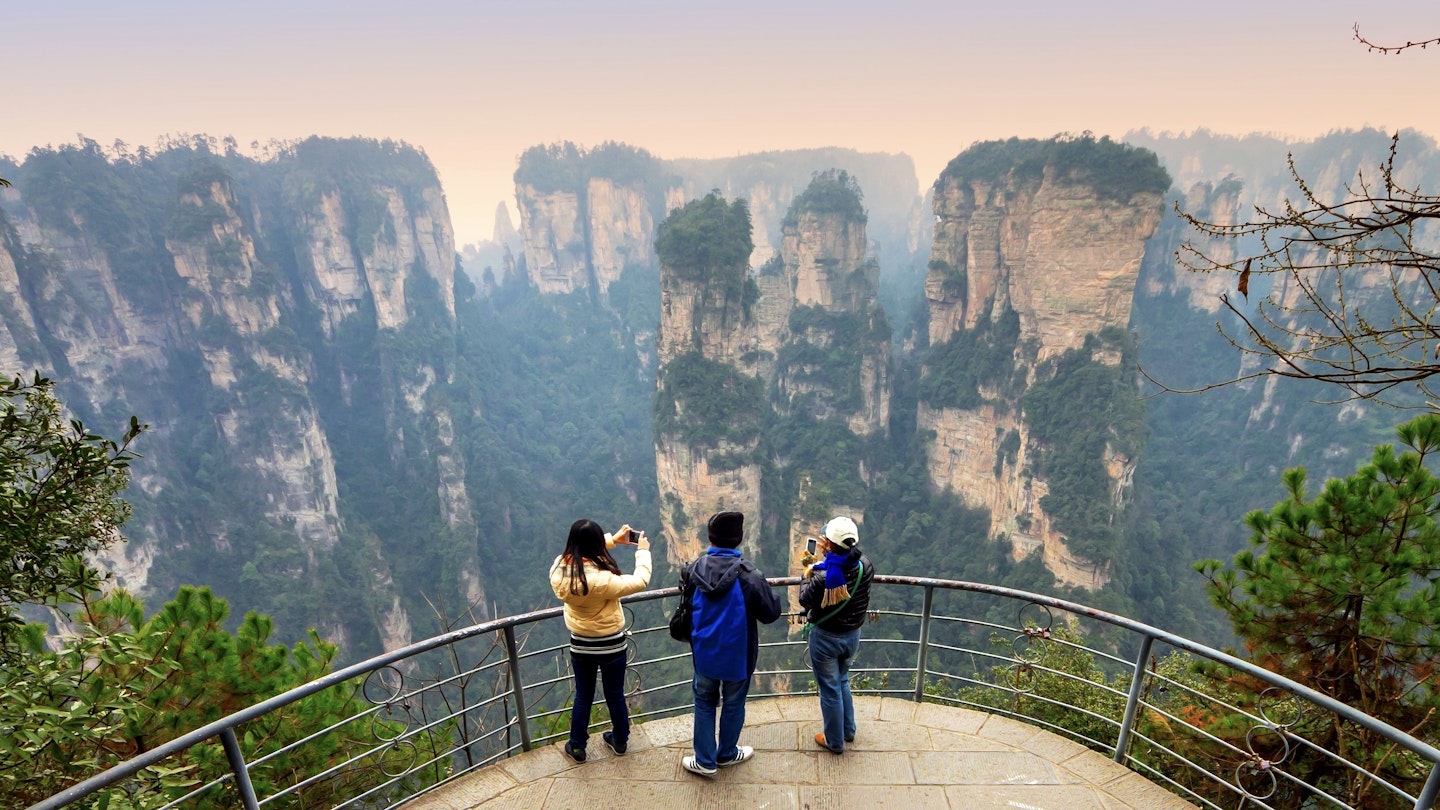
From vibrant cities to jaw-dropping natural wonders like Zhangjiajie, here are the places in China you won’t want to miss © siraphat / Shutterstock
In China , antiquity and heritage meet 21st-century innovation and lighting-fast development.
This is a country packed with highlights – so many that it might be hard to craft a manageable itinerary. Start by immersing yourself in one of China's gigantic, sprawling cities – which contain plenty of frantic energy, but hidden pockets of serenity, too. Take a break from the crush by soaking up China's natural scenery – think jagged peaks and pine forests draped in a sea of mist that look like they've been lifted straight from one of the country's masterpiece scroll paintings. As one of the world's most ancient civilizations, China also offers wonderful opportunities to explore astounding relics from its millennia of history.
Don't know where to start? Whether you dream of gilded temples, boisterous urban environments, fabulous food or the wonders of the Great Wall, here are our picks of the best places to visit in China.
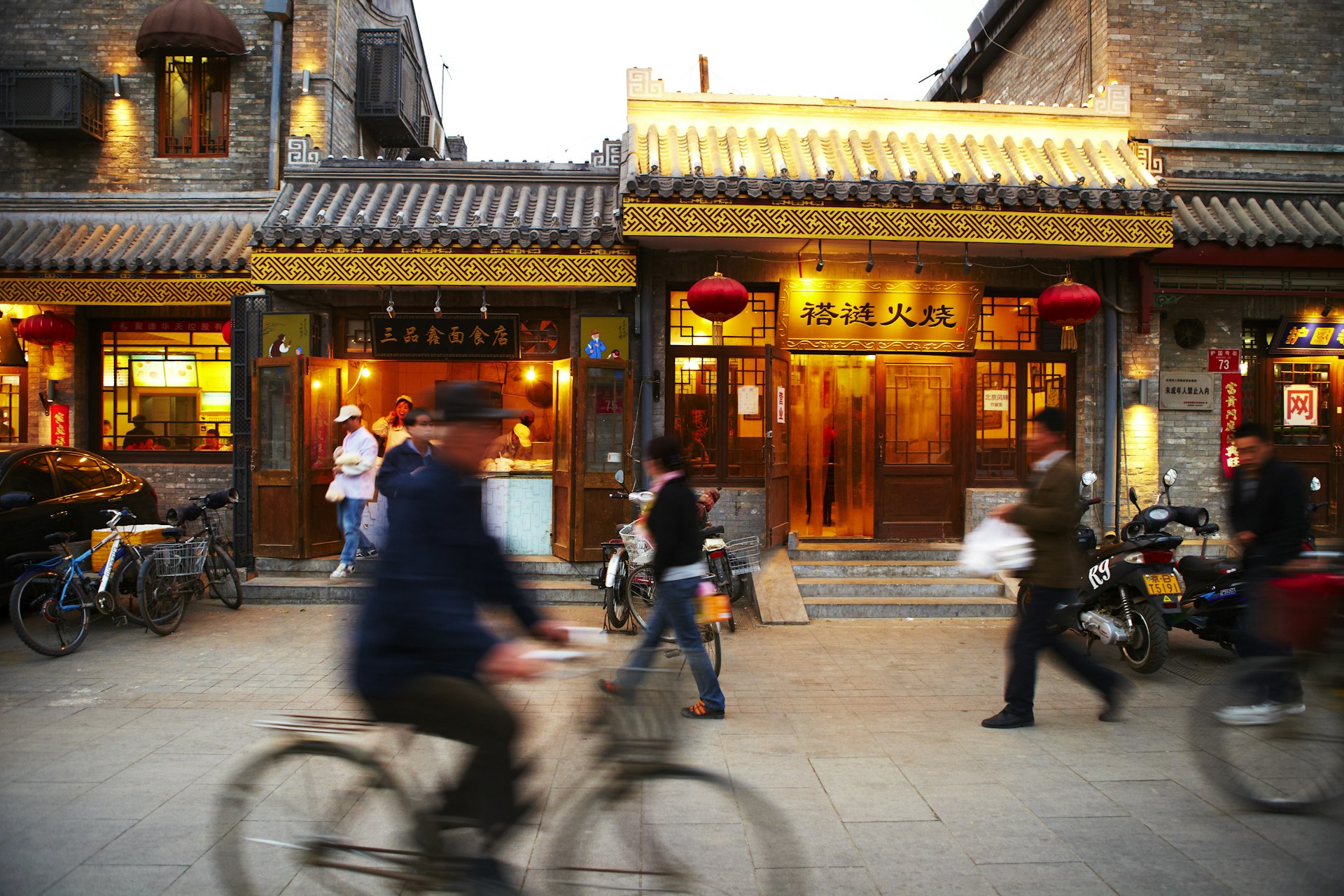
One of the world's greatest cities and China's absolute can't-miss destination, Beijing is home to many of China's big-ticket attractions: the Forbidden City, the Great Wall, Tiananmen Square , the Summer Palace and more. But its appeal goes well beyond blockbuster sights. Get lost among its labyrinth of traditional hutongs (alleyways), marvel at its cutting-edge modern architecture, feast on Peking duck and a million other dishes from across the country, check out the local indie music scene, admire Ming-dynasty ceramics, drop by a traditional teahouse or enjoy a boisterous evening sampling the local baijiu (sorghum wine).

2. Mogao Grottoes, Dunhuang
Along the ancient Silk Road, the atmospheric frontier town of Dunhuang is home to one of the world's most important collections of Buddhist art. Among more than 490 Buddhist caves in the area, the mural and statue-filled Mogao Grottoes represent perhaps the zenith of Buddhist artistry in China.

3. Tiger Leaping Gorge, Yunnan
One of China's most famous treks, this 22km (14-mile) hiking trail winds through a World Heritage-listed gorge in Yunnan that is one of Asia's most striking landscapes. Framed by spectacular snow-capped mountains and the scenic Jinshajiang River, the natural monument plunges to depths of 3900m (12,795ft), making it one of the deepest gorges in the world.
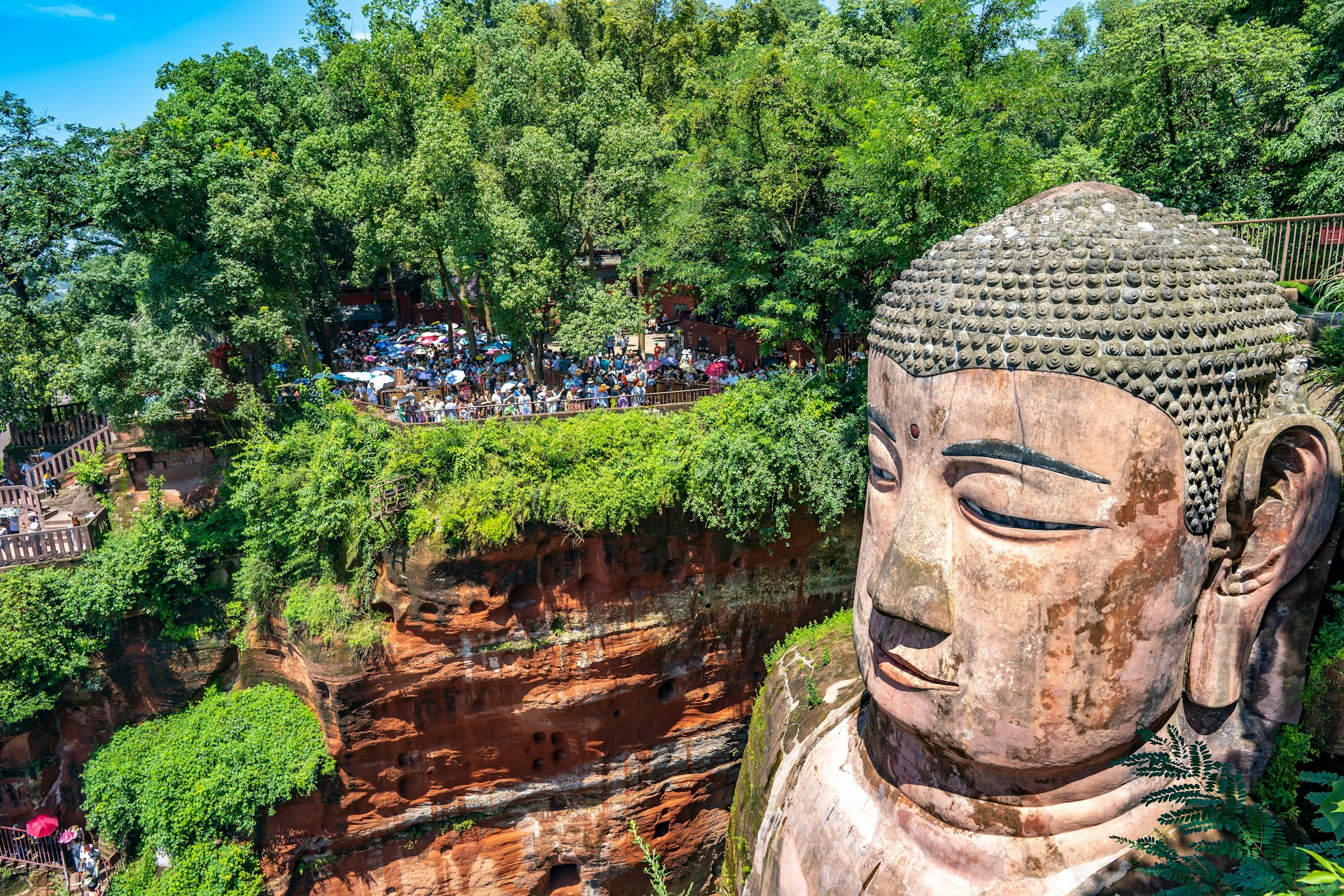
4. Le Shan, Sichuan
Standing at the confluence of two rivers, the monumental 1200-year old Buddha image at Le Shan is carved directly into the rock face. World Heritage–listed, the extraordinary monument stands 71m (233ft) tall and 28m (92ft) wide, making it the largest ancient Buddha in the world. Whether you're spiritually included or not, coming face to face with this sculpture is quite a moving experience.
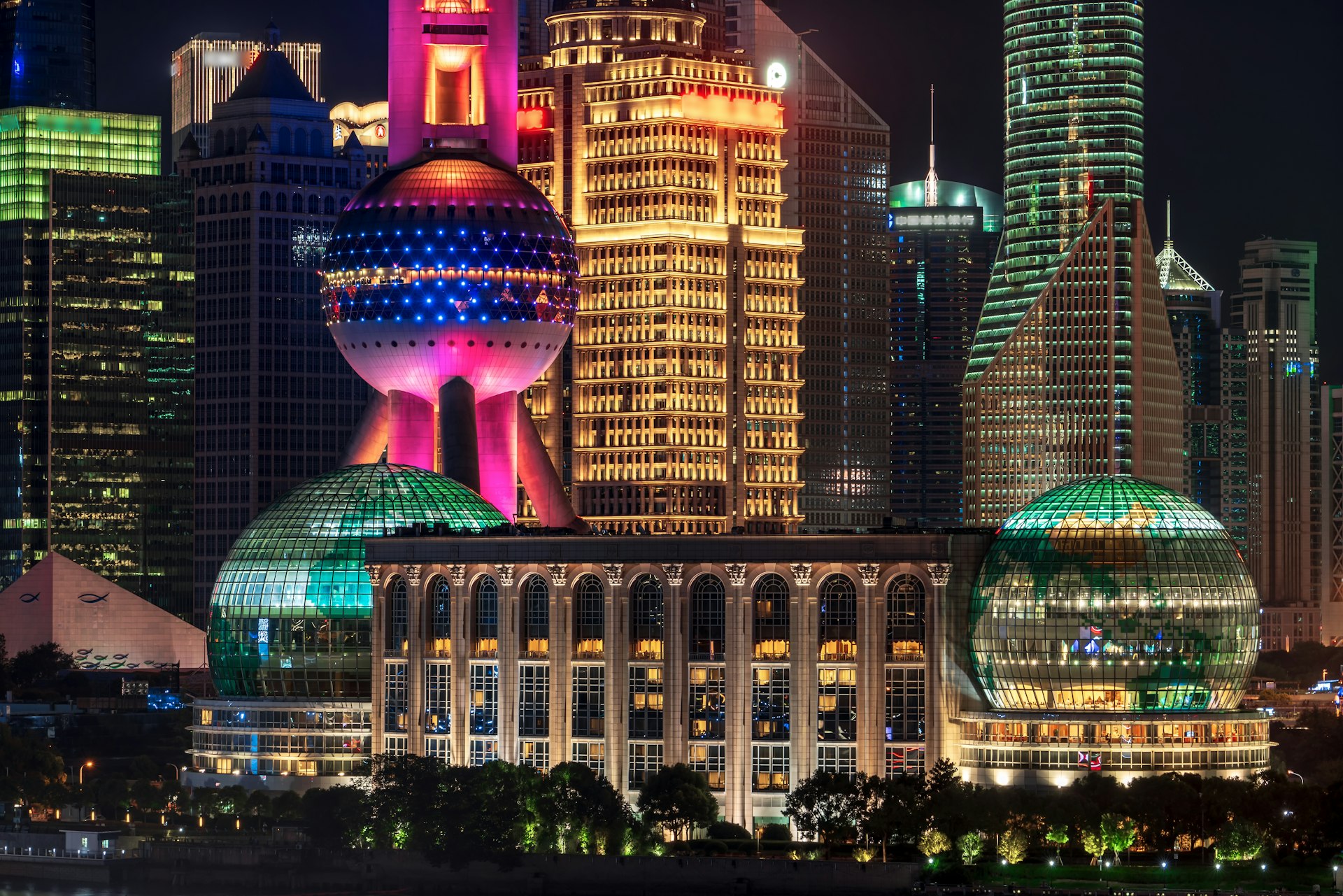
5. Shanghai
Glitzy, elegant, historic and cosmopolitan: everything you've heard about Shanghai is true. Just take a stroll through the French Concession or along the Bund , and you'll see for yourself. From the grand display of 1920s architecture to the city's sophisticated restaurants and rooftop bars to the sci-fi neon-lit skyscrapers across the bay, Shanghai is the past and future China brought to vivid life.
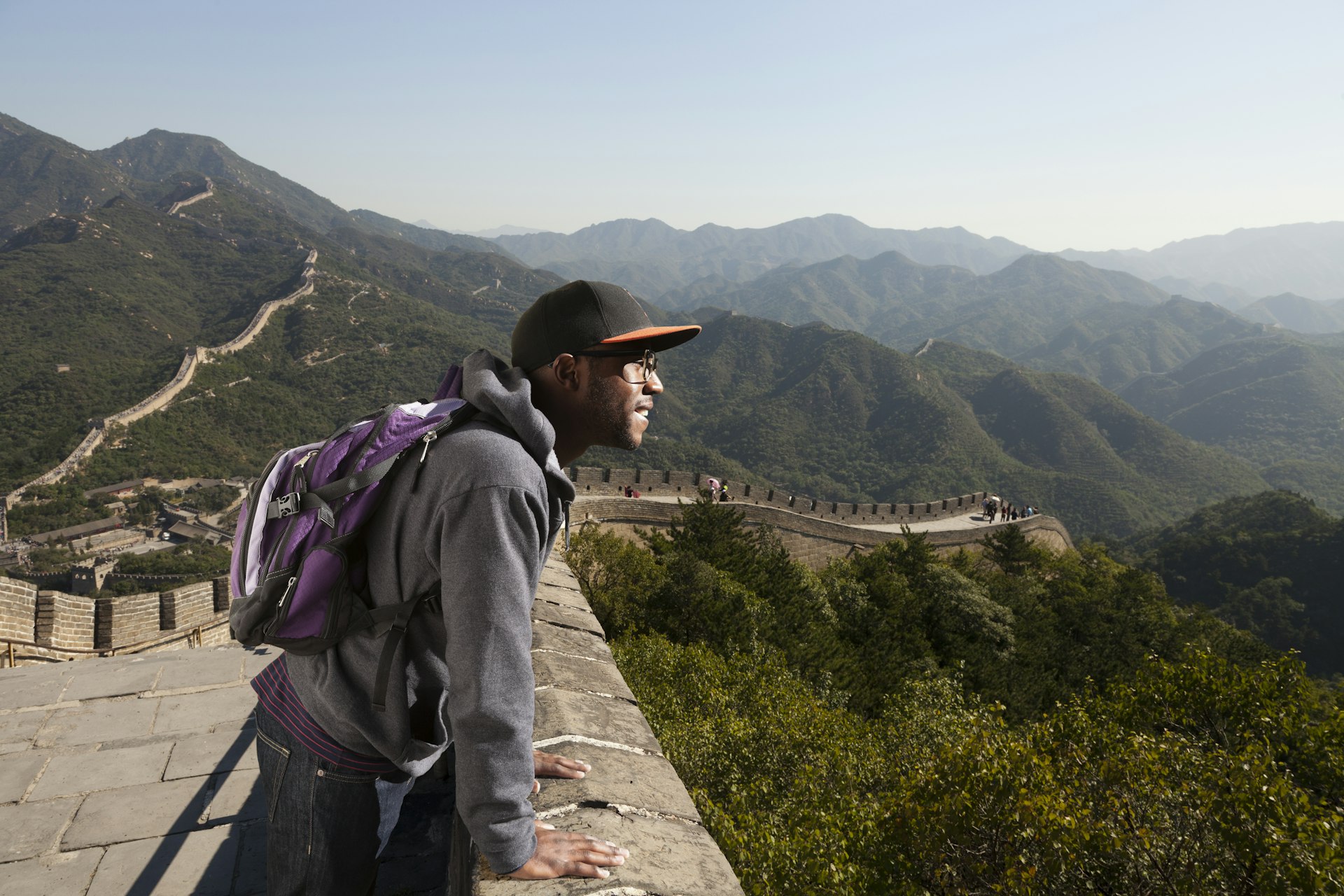
6. The Great Wall
Snaking through China's majestic mountainous terrain, the spectacular Great Wall is the nation's most iconic landmark. Built over two millennia, this awe-inspiring, 21,196km-long (13,170-mile-long) fortification is a true marvel of human accomplishment. In fact, it's not one wall but many, stretching from the east coast all the way to the far western desert. The most easily accessible stretches can be reached by car from Beijing.

With its charming teahouses, lively nightlife and fiery Sichuan food, Chengdu is one of China's most popular cities for travelers. But most folk visit here for one reason: pandas. And while you'd be very lucky to spot one in the wild, sightings are guaranteed at the Giant Panda Breeding Research Base . Other draws of this inland regional capital include temples, pavilions and museums devoted to the culture of the ancient Shu kingdom.

8. Karst peaks, Guilin
Spanning the distance from Guilin to Yangshou , the picture-perfect karst-limestone peaks offer an extraordinary backdrop to the scenic Li River and rice paddies. Grab a bicycle or board a raft to tour this beautiful countryside, passing farmers and water buffalo along the way.
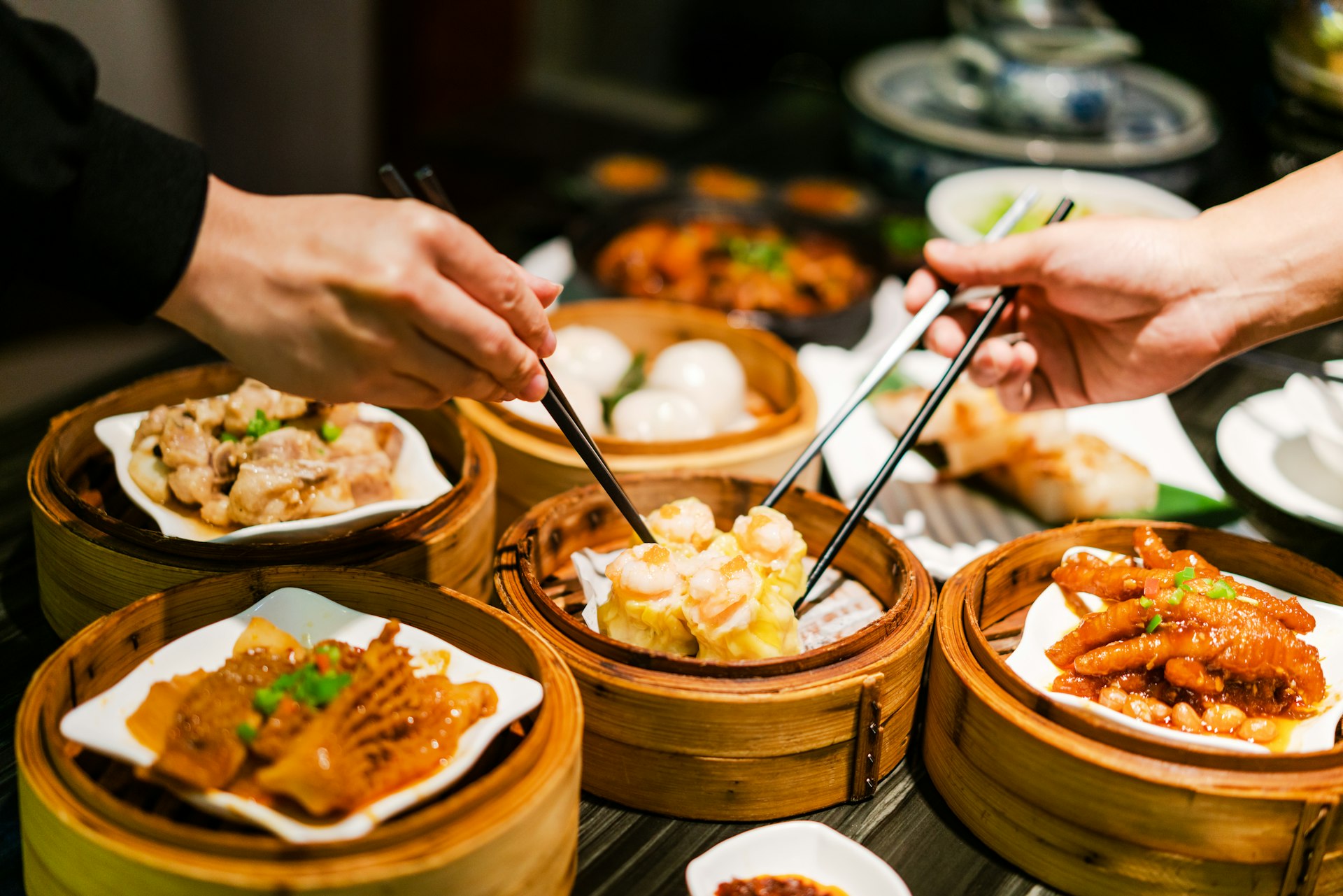
9. Guangzhou
This vibrant and dynamic megacity is one of China's most fascinating hubs. You'll find an intriguing mix of old and new in a city where skyscrapers nudge the clouds, and monks shuffle around 1500-year-old Buddhist temples. But it's the Cantonese cuisine that lures in many, with some of the finest dim sum in all of China.
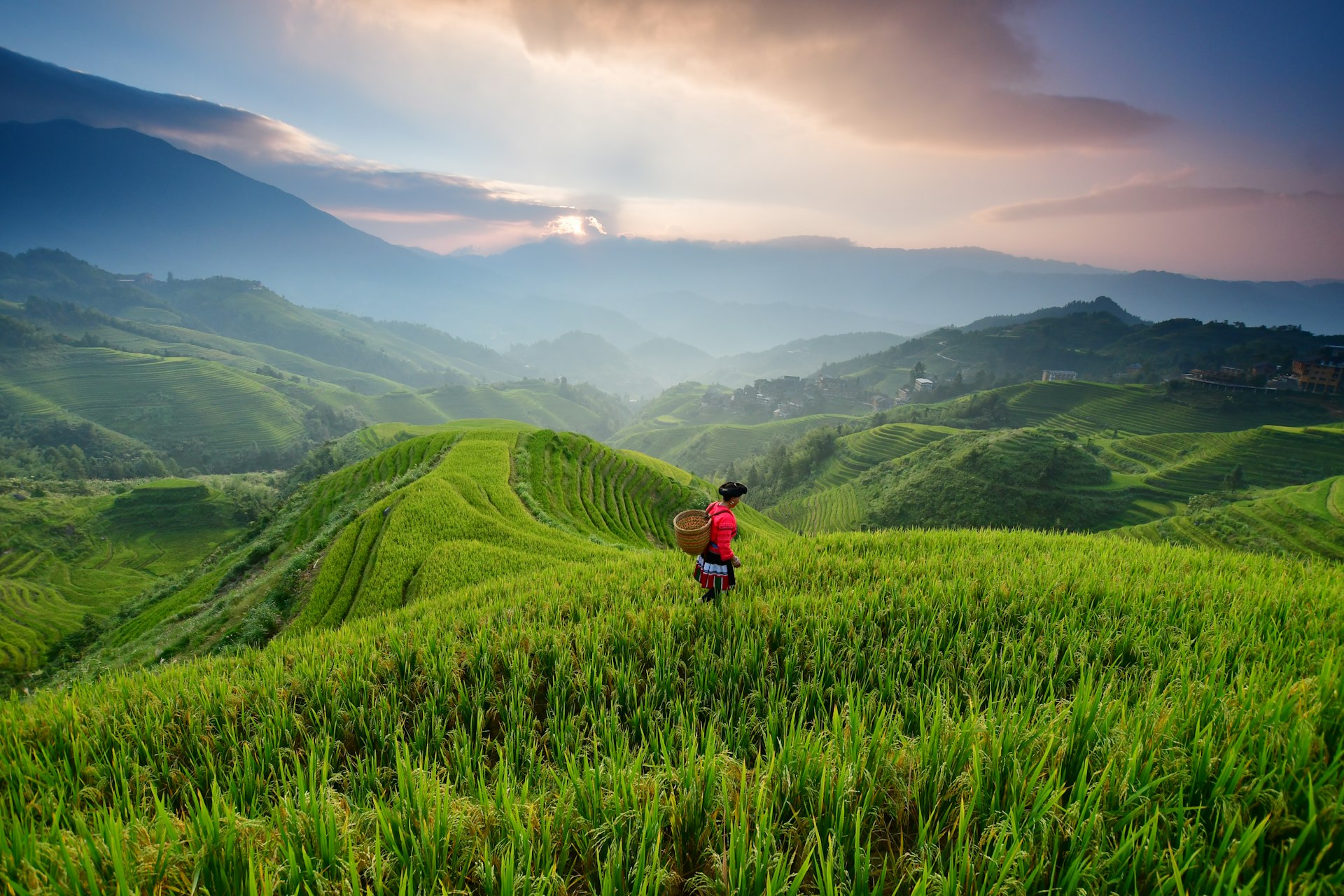
10. Longji Rice Terraces, Guangxi
You'll find rice paddies all over China – but few are as spectacular as the ones in Longji , built against a backdrop of lush mountains. Walks here lead to viewpoints overlooking sculpted, iridescent green terraces with swirling patterns resembling the contours of a giant thumbprint.
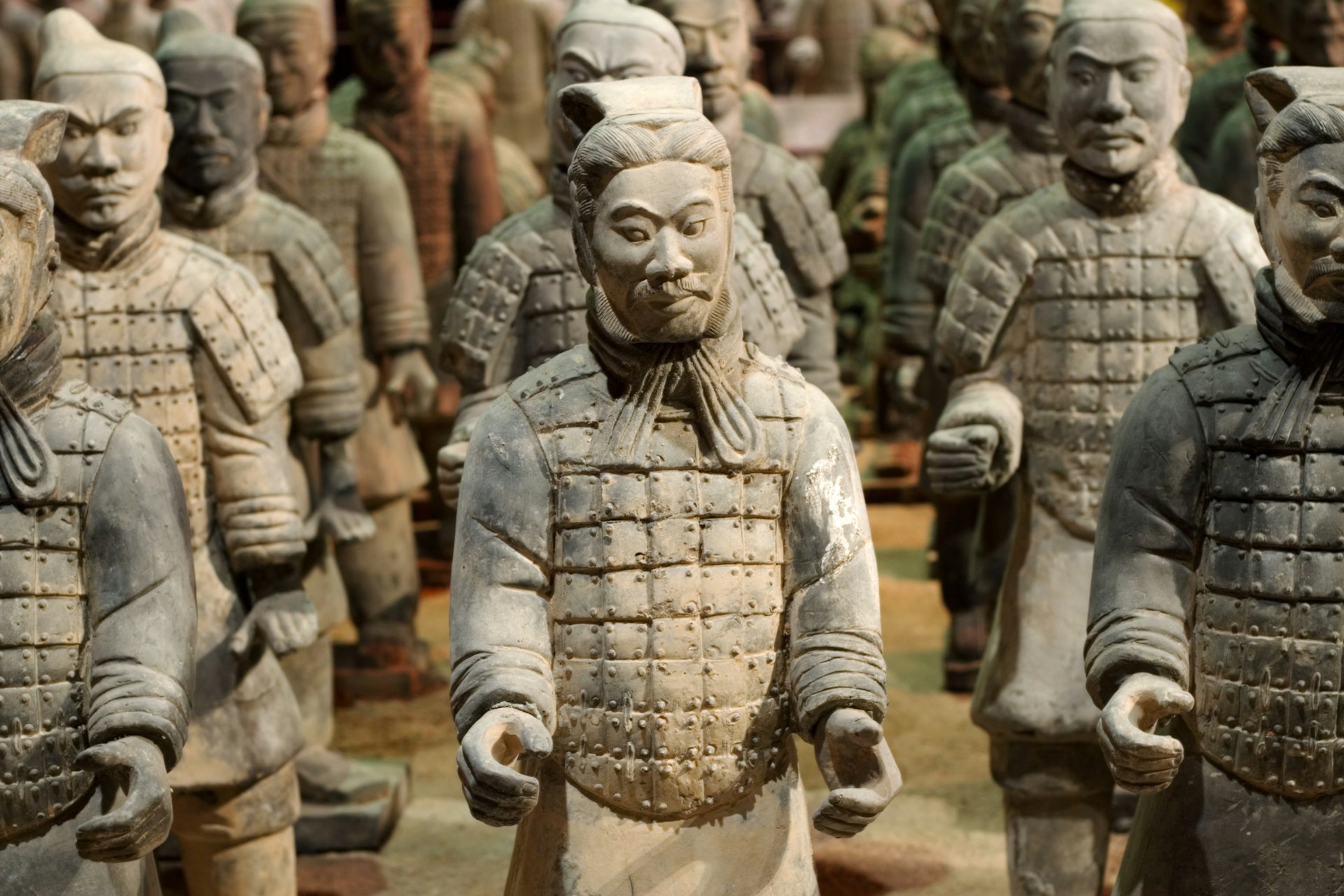
11. Terracotta Warriors, Xi'an
Unearthed in Xi'an by unsuspecting rural workers in 1974, this enigmatic army of life-sized statues remains of the world's most remarkable archaeological finds. Dating back 2200 years, they were built to protect the underground tomb of Emperor Qin Shi Huang. Needless to say, meeting the warriors face to face is an experience you'll never forget.
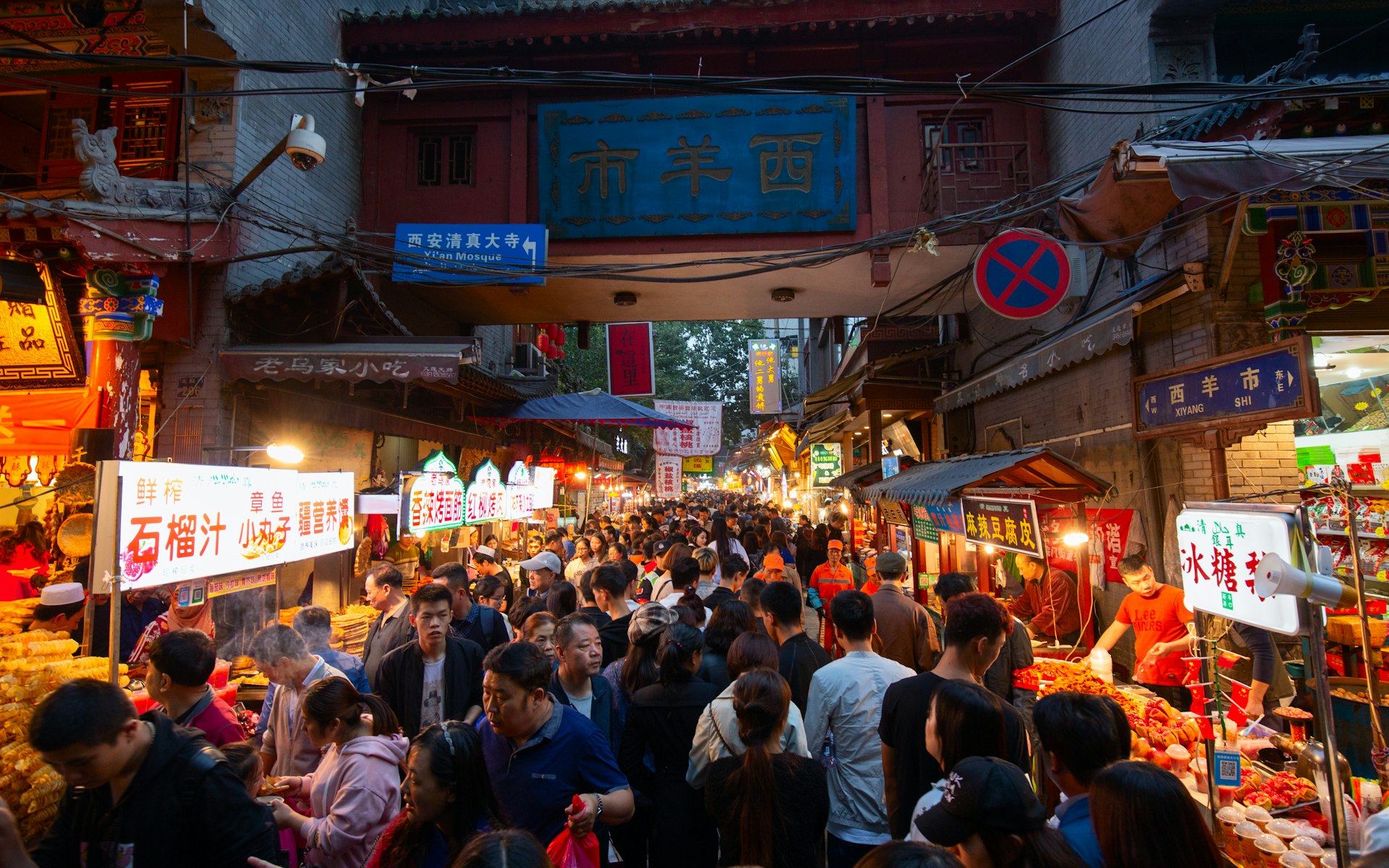
12. Xi'an
In a country where cities seemingly spring up overnight, this is one of the oldest and grandest. Known to most for its extraordinary Terracotta Warriors, Xi'an is also remarkable in its own right – notably as the beginning of the Silk Road, a trade route with a legacy that remains intact within its atmospheric Muslim Quarter .
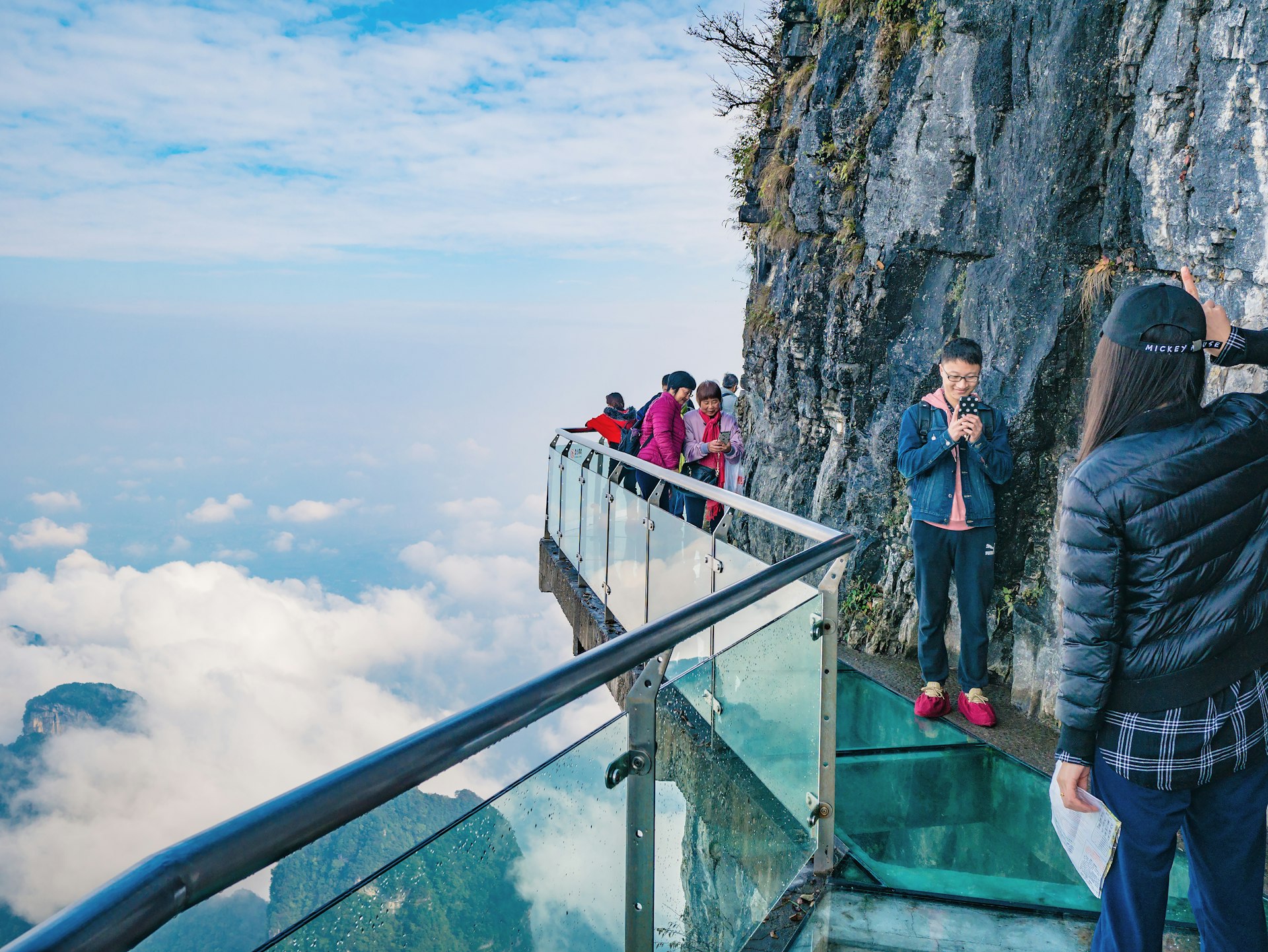
13. Zhangjiajie
Rising dramatically from the subtropical forests of northwest Hunan , the pinnacle rock formations of Zhangjiajie inspired the scenery in the film Avatar (2009). Take it all in as you walk over a vertiginous glass-bottom suspension bridge floating 300m (984ft) above ground. If that's not daring enough, you can bungee jump off it, too.
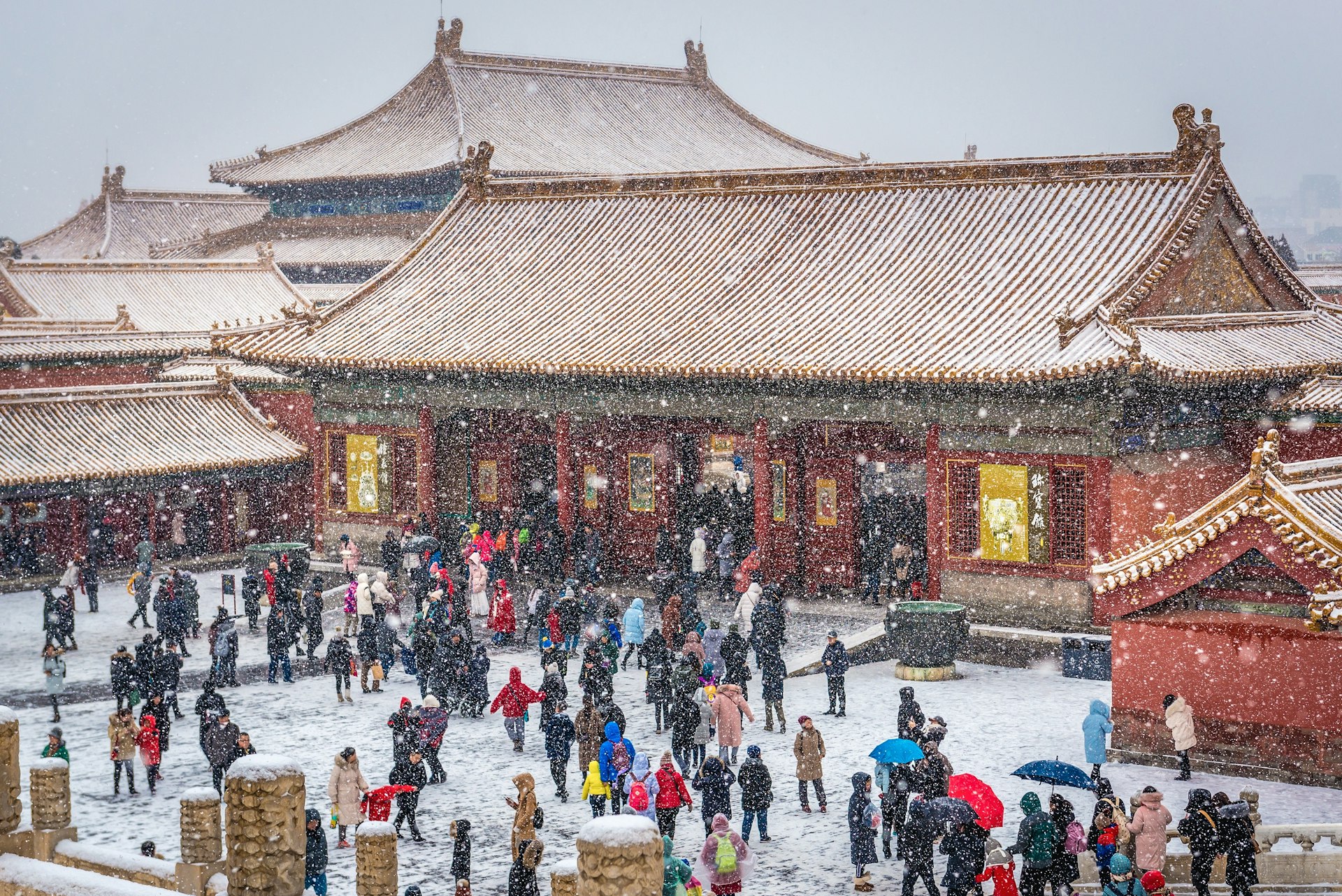
14. Forbidden City, Beijing
Among China's imperial sights, none can compare in size, grandeur or mystique to Beijing's Forbidden City . Built between 1406 and 1420, this sprawling palace was off-limits for 500 years until the overthrow of the last Qing emperor in 1911. Today, it's very much open to the public, attracting nearly 20 million visitors each year. Despite the crowds, its massive scale remains humbling.
This article was first published October 2021 and updated February 2024
Explore related stories
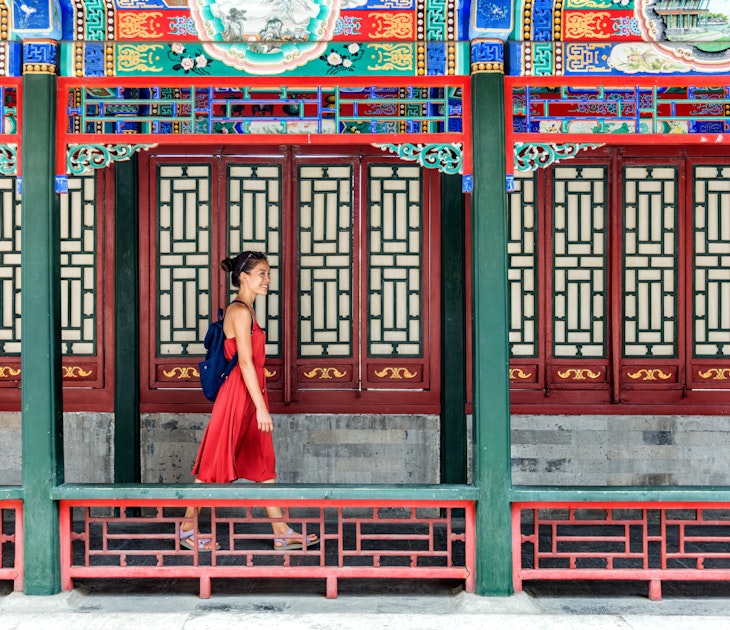
Feb 23, 2024 • 8 min read
Eat street food, explore old neighborhoods, find the less-visited parts of familiar sites and shop for (non)antiques: our guide to the best of Beijing.
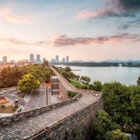
Jun 2, 2022 • 6 min read
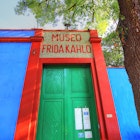
Mar 8, 2022 • 7 min read

Oct 29, 2021 • 11 min read
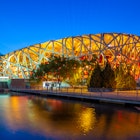
Jul 22, 2021 • 3 min read

Jan 28, 2021 • 5 min read

Oct 20, 2020 • 13 min read
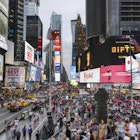
Sep 18, 2020 • 6 min read
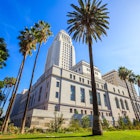
Sep 7, 2020 • 10 min read
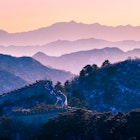
Sep 2, 2020 • 5 min read
The first timer's guide to China: where to go and what to do
Recently updated on July 24th, 2023 at 10:53 am
China is a massive country filled with ancient traditions, diverse cultures, extraordinary landscapes and enormous cities. It can be overwhelming when planning your trip to China , so we’re here to help with our China travel guide. From the best things to do, to cultural norms and what to wear, here are all the things you need to know before travelling to China.
Best places to visit in China
View this post on Instagram A post shared by @visitbeijingofficial
As the capital city of China, bustling Beijing is packed with treasures. You can go from the historic Tiananmen Square, the world’s largest public space, to the ancient hutongs, the beautiful alleyways around the traditional courtyard residences. Your China travel guide will show you around it all, and even take you on a scenic rickshaw ride!
Forbidden City
View this post on Instagram A post shared by @visitchina
We’ll take you back in time to the Ming dynasty era when we explore the UNESCO-listed Forbidden City in Beijing. You’ll walk in the path of emperors and learn how the aptly named city was a private complex for the elite imperial families for over 500 years. Your China travel guide will reveal all the ancient traditions and history of this palace complex-turned-museum and share China’s spiritual culture at the Buddhist and Taoist shrines
EXPERIENCE IT FOR YOURSELF: Classic China
Temple of Heaven
View this post on Instagram A post shared by BeautifulChina (@chinadestinations)
This stunning UNESCO-listed temple is another highlight of Beijing and we’ll take you exploring through this incredible religious complex. It’s one of the most important imperial temples in China, and one of the most remarkable examples of traditional Chinese architecture. It was designed to represent the belief that the earth is square and heaven is round.
You’ll walk in the footsteps of royalty here too. The emperors of the Ming and Qing dynasties once came to the Temple of Heaven for annual ceremonies to pray for good harvests and guidance.
Great Wall of China
Hailed as one of the world’s top bucket list experiences, you can’t miss seeing the UNESCO-listed Great Wall of China . This 21,000-kilometre engineering marvel is one of the greatest feats of the Ming Dynasty. With nearly 3,000 years of history held in these stones, it’s a truly special experience.
You’ll get to walk a part of the Great Wall, taking in the lush green valleys and the incredible wall snaking for miles into the distance. As you learn the history of the wall from your local China travel guide, you’ll come to appreciate the enormous man-power it would have taken to build these fortifications so many years ago. You’ll also get to walk the Sacred Way. Here the stone statues guard the Ming Tombs and the remains of the 13 emperors of the Ming Dynasty.
Xi’an
As the starting point of the ancient Silk Road trading route and the former capital of 13 dynasties, Xi’an packs a serious historic punch. We’ll show you around all it’s iconic relics, including the Great Mosque, one of the largest, oldest and best-preserved mosques in the country.
You can’t miss the UNESCO-listed Terracotta Army, with thousands of hand-moulded, life-sized warrior figures. We’ll take you to see this ancient wonder in Emperor Qin Shi Huang’s underground tomb.
You’ll also visit a jade factory and learn how the revered stone is considered more precious than gold in China. Cycle around the ancient City Wall of Xi’an or learn the elegant art of T’ai Chi with a Local Specialist… Whatever you do, Xi’an will be unforgettable.
If you love all things cute and cuddly, you’re in for a treat in Chengdu. It’s the hometown of the giant panda, and you’ll get to visit the incredible Chengdu Research Base of Giant Panda Breeding .
Your China travel guide will show you around this non-profit facility and share how they rescue these endangered pandas. Snap some adorable photos of these gorgeous bears, and leave knowing your visit made a difference to this groundbreaking centre.
But Chengdu isn’t just about pandas. We’ll also take you to the People’s Park to see the stunning Chinese gardens and teahouses, and enjoy a spot of people-watching as the locals enjoy games of mah-jong and relaxing neck massages. We’ll then switch up the pace with a visit to the vibrant Jinli Old Street. Here you’ll find all kinds of exquisite handicrafts including paintings and calligraphy.
You’ll even have the chance to visit the Jinsha Site Museum, where you’ll discover the ancient archaeological treasures found on the Jinsha site. These precious relics date back up to 3,000 years and display the amazing skills of the Ancient Shu people. You’ll see everything from jade and gold objects, to bronze and stone tools and ivory carvings.
Shanghai is a breathtaking experience for any visitor and your China travel guide will show you the best of this dazzling city. Famed as the Paris of the East, we’ll take you down the famous trading hub, the ‘Bund’. Here, you’ll admire the elegant French colonial buildings that have sat along the waterfront since the early 1900s.
We’ll then explore the lively markets of old Shanghai and see how the locals preserve their traditional lifestyle. For something more modern, we’ll head to the top of the 88-storey Jinmao Tower. You’ll be amazed by the spectacular views over the Shanghai skyline, the most populated city in the world.
Head back down to earth and admire the antique façades and trendy boutiques and bars of the Xintiandi district. Or, enjoy a mesmerising performance by the Shanghai Acrobatic Troupe.
Zhujiajiao Water Town
Famed as the Venice of China, this ancient water town has been around for over 1,700 years. Originating as a busy market town, today it’s one of the best-preserved ancient towns in the country. We’ll take you here to marvel at the historical buildings like spice stores, rice shops, banks and a Qing Dynasty post office.
View this post on Instagram A post shared by PRIOR (@prior)
See the charming terrace homes dotted with red lanterns and stroll over the stone bridges that cross the canals. You can even take a paddleboat ride to see the sights from the water or indulge in the town’s famous cuisine like lotus roots, braised pork leg and homemade sweets. After lunch, you might like to relax under the old willow trees and soak up the tranquillity of the town that floats.
Top things to do in China
Cruise the beautiful yangtze river.
A Yangtze river cruise is one of the most memorable experiences you can have in China. We’ll take you to some of the most extraordinary stops on the Yangtze, including the 12-storey cliff-top temple of Shibaozhai, and the mystical shrines and monasteries of Fengdu’s ‘Ghost City’.
You’ll also sail through the Three Gorges Dam, starting with the spectacular Qutang Gorge. Then it’s Wu Gorge, with its green forests and sheer cliffs, and lastly, beautiful Xiling Gorge. Hop on board a small motorboat and cruise to the enchanting Goddess Stream, a tributary of the Yangtze. Here you’ll discover lush limestone cliffs rising out of the glowing emerald water – a truly magical experience.
EXPERIENCE IT FOR YOURSELF: Best of China with Yangtze Cruise
Enjoy the Tang Dynasty Show
View this post on Instagram A post shared by CCTV (@cctv)
The Tang Dynasty show is the ultimate entertainment experience in China. It starts with a mouthwatering Tang dumpling banquet, followed by a performance of music and dance that originated centuries ago. You’ll be swept away in time with traditional music, vibrant choreography and dazzling costumes telling the incredible story of the Tang Dynasty.
Learn the art of making dumplings
You can’t miss tasting the scrumptious dumplings of China and we’ll show you how to make your own at a local restaurant. After watching a dumpling-making demonstration, including fried, steamed and boiled dumplings, you’ll get to enjoy them for lunch. Yum!
RELATED CONTENT: 6 local and immersive food experiences you can do with Trafalgar in China
Enjoy a foot massage at the Foot Reflexology Centre
Feeling a little weary after all your travel adventures? There’s no better remedy than a Chinese massage. We’ll show you where to go for a soothing foot reflexology session, where you can kick back, relax and feel your qi energy come alive.
Spend an evening at the Sichuan Opera
You’re in for a spectacular evening at the Shufeng Yayun Sichuan Opera House in Chengdu. The dazzling Sichuan opera performance features many different shows including a puppet show, fire spitting, a comedy act and the famous face changing show. With live music and traditional Chinese instruments bringing the courtyard setting to life, this will be an evening to remember.
Learn about China’s tea-making ritual s
Tea making is one of the most important traditions in China. We’ll take you to a teahouse where your China travel guide will share the history of tea-making. You’ll also get to learn how to prepare and serve authentic Chinese tea, and sample some of the warming brews yourself.
Watch the Legend of Kung Fu Show
We’ll take you to the Red Theatre in Beijing to see the Legend of Kung Fu, a show of traditional martial arts, dazzling dance and acrobatics. Performed by incredible Kung Fu artists with an average age of just 17, you’ll learn the story of a young boy who dreams of becoming a true master of Kung Fu. You’ll be amazed by the graceful moves, fearless acrobatics, and the beautiful story of a child overcoming his fears.
Learn how to cook Sichuan cuisine in Chengdu
Sichuan cuisine is famed for its rich spices and you’ll learn how to wield these bold flavours when we take you to a cooking class at the Museum of Sichuan Cuisine. Your local chef will show you the ancient kitchenware and cookbooks, then teach you how to crush chilli into powder using a historic Qing Dynasty pestle and mortar.
You’ll dive into your culinary creations with a local chef on hand every step of the way. And of course, you’ll get to enjoy your delicious meal for lunch, and leave feeling totally satisfied in both stomach and soul.
Things to know before travelling to China
China is a land of ancient traditions and customs, and it’s important to travel this incredible country with an open mind. Here are some of our top China travel tips to help you prepare for your adventure.

Apply for your Chinese visa early
Unless you’re from Japan, Singapore or Brunei, you’ll need a visa to stay in China for over 72 hours. The process for getting a tourist visa differs between countries, but you’ll likely need to visit your local Chinese consulate. Prepare for the visa process to take around a month or more.
Once you’re in China, make sure you keep a photocopy of your passport and visa everywhere you go. You’ll need it when checking in to hotels, and it’s best to have identification on you at all times.
Get camera ready
The Chinese love to take photos! China welcomes millions of international travellers every year but many people are still fascinated by new faces, so don’t be surprised if a local asks to take a photo with you. If you’re the one taking the photos, always ask permission before snapping a photo of someone. You should also never take photos of government buildings or officials.
Personal space
With a population of around 1.4 billion, China is a very crowded place. Most locals are used to having less personal space and it’s common to experience jostling or queue jumping. The best thing to do is be patient and remember it’s the cultural differences that make each country unique.

Spitting in China
In China, it isn’t considered rude to burp or spit in public. In fact, burping after eating is a sign you enjoyed the meal, and the locals prefer to spit to clear their noses instead of using tissues. You might be a bit shocked at first, but remember that the Chinese are just as confronted when visitors blow their nose in a handkerchief and put it back in their pocket!
You don’t need to tip in China
Tipping culture doesn’t exist in China, and you should never leave cash tips on the table.
Haggle at the markets – but not in stores
If you’re shopping at the local Chinese markets, you’ll need to learn the art of haggling. Save the bargaining if you’re in a shop with price tags however, as it’s considered rude.

Don’t drink the tap water
Most locals don’t drink the tap water in China and you shouldn’t either as it can make you sick. Always drink bottled water or, ideally, bring your own reusable bottle and fill it up at water filter stations. You can often find these at your hotels.
Bring toilet paper and hand sanitiser
Squat toilets are the norm in China and most bathrooms do not provide toilet paper, except for hotels and nicer restaurants. It’s a good idea to carry a roll of toilet paper or some tissues, and a bottle of hand sanitiser.
What to wear in China
When travelling in China, you can generally wear whatever you normally wear back home – with a few exceptions.

Religious sites
When visiting temples and holy sites, you should wear modest clothing that covers your shoulders and knees. You may also need to remove your shoes before entering a temple or sacred site. If you’re not sure, watch what the locals do or ask your China travel guide.
Dress for the weather
China has four distinct seasons that vary across the regions, from sweltering heat to icy snow. Check the weather forecast before your trip, and pack clothes to keep you comfortable.
Conservative clothing
While the locals in the major cities like Beijing, Shanghai and Xi’an are very fashionable and less conservative, they still generally show less skin, so it’s best to leave the short shorts at home. If you’re travelling to rural areas, it’s more important to wear modest clothing with not much skin showing.

Walking shoes
From wandering the Great Wall to exploring the big cities, you’re sure to do a lot of walking in China. It’s best to bring a comfortable pair of shoes that have already been broken in. The last thing you want is blisters!
Many of the largest cities in China, like Beijing and Shanghai, have problems with smog and air pollution. Do as the locals do and wear a face mask on days with bad air pollution.
Are you dreaming of a trip to China? Do you have any China travel tips to share? Let us know in the comments below!
Want to hear more from us?
Sign up to receive inspiring travel articles, offers & news
" * " indicates required fields
Privacy Overview
Sign up for our emails.
- 86-19138970032 (GMT+8 18:00~09:00)

- Beijing Xian Tours
- Shanghai Beijing Tours
- Hong Kong Guilin Tours
- Hangzhou Suzhou Tours
- Kunming Lijiang Tours
- Shanghai Yangtze Cruise Tours
- Chengdu Tibet Tours
- More Short Stay Tours
- China Tours in January
- China Tours in February
- China Tours in March
- China Tours in April
- China Tours in May
- China Tours in June
- China Tours in July
- China Tours in August
- China Tours in September
- China Tours in October
- China Tours in November
- China Tours in December

- High Speed Trains
- China Yangtze Cruise Tour
- Photography
- Desert Adventure
- Ethnic Villages
- Biking Tours
- Kung Fu Tours
- Heritage Sites Exploration
- China Spring Tours
- China Summer Tours
- China Autumn Tours
- China Winter Tours
Notice! 2024 available cruise routes include 4~5 days Chongqing-Yichang(most classic) and 11~12 days Chongqing-Yichang-Shanghai(limited).

- Best-value Yangtze Cruises
- Top Family-friendly Cruise Ships
- Top 3 Luxury Yangtze River Cruises
- Yangtze River Highlights
- Yangtze River Cruise Routes
- Upstream or Downstream?
- Dining & Drinking
- Accommodations
- On-board Activities
- Yangtze Cruise Booking Steps

- Inner Mongolia

- Fanjingshan
- How to Plan Your First China Tour
- How to Plan Beijing Tour
- How to Plan Xian Tour
- How to Plan Shanghai Tour
- How to Plan Guilin Tour
- How to Plan Sichuan Tour
- How to Plan Family Tour
- 2024 China Travel Ideas
- Best Time to Visit China
- What to Pack for Your China Journey
- Make Payment in China
- Updated China Travel News
- Ultimate Chinese Visa Guide
- Chinese Visa Types
- Chinese Visa Requirements
- Do I Need a Visa for China
- Chinese Visa Application
- Chinese Visa Exemptions
- 144-hour Visa Free
- Shenzhen Visa on Arrival
- Hainan 30-day Visa Free
- Embassies & Consulates
- Invitation Letter
- Useful Visa FAQs & Tips
- Entry Regulations
- Baggage Allowance
- Customs Declaration
- Exit Regulation
- How to Book Train Tickets
- How to Collect Train Tickets
- How to Cancel & Alter Train Tickets
- How to Read Train Tickets
- China High Speed Train Types
- Seats Class & How to Choose
- Friendly Facilities on the Train
- The Train Station Departure Process
- Available Food and Drinks on the Train
- Western Toilets on the Train
- Luggage Racks & Baggage Allowance
- Beijing Train Stations
- Shanghai Train Stations
- Guilin Train Stations
- Xian Train Stations
- Chengdu Train Stations
- Hong Kong West Kowloon Railway Station
- Beijing - Xian
- Beijing - Shanghai
- Guangzhou - Shanghai
- Shenzhen - Shanghai
- Chengdu - Xian
- Shanghai - Hangzhou
- Shanghai - Xian
- Chengdu - Chongqing
- Kunming - Lijiang
- Beijing Capital International
- Beijing Daxing International
- Shanghai Pudong International
- Shanghai Hongqiao International
- Guangzhou Baiyun International
- Hangzhou Xiaoshan International
- Chengdu Tianfu International
- Chengdu Shuangliu International
- Xian Xianyang International
- Shanghai - Beijing
- Hong Kong - Shanghai
- Guangzhou - Beijing
- Chengdu - Lhasa
- Shanghai - Guilin
- Shanghai - Sanya
- Travel in Spring Season
- Travel in Summer Season
- Travel in Autumn Season
- Travel in Winter Season
- Weather in January
- Weather in February
- Weather in March
- Weather in April
- Weather in May
- Weather in June
- Weather in July
- Weather in August
- Weather in September
- Weather in October
- Weather in November
- Weather in December
- Top 10 China Destinations
- Top 15 Things to Do
- China World Heritage Sites
- Top 10 Best Natural Beauties
- Top 10 Museums in China
- Top 10 Old Towns & Villages
- Five Great Mountains in China
- Top 10 Monasteries & Temples
- Top 10 Ski Resorts
- Top 10 Beautiful Lakes in China
- 7 Best Beaches in Sanya
- Top 6 Beautiful Waterfalls
- Panda Volunteering
- Having fun on Ice and Snow Festival
- About Us Who We Are Our Team Why Travel with Us Feedback & Reviews Travel Stories Travelers' Gallery Payment Guide Customer Support Contact Us
- Tour Experiences
Destinations
- Travel Guide
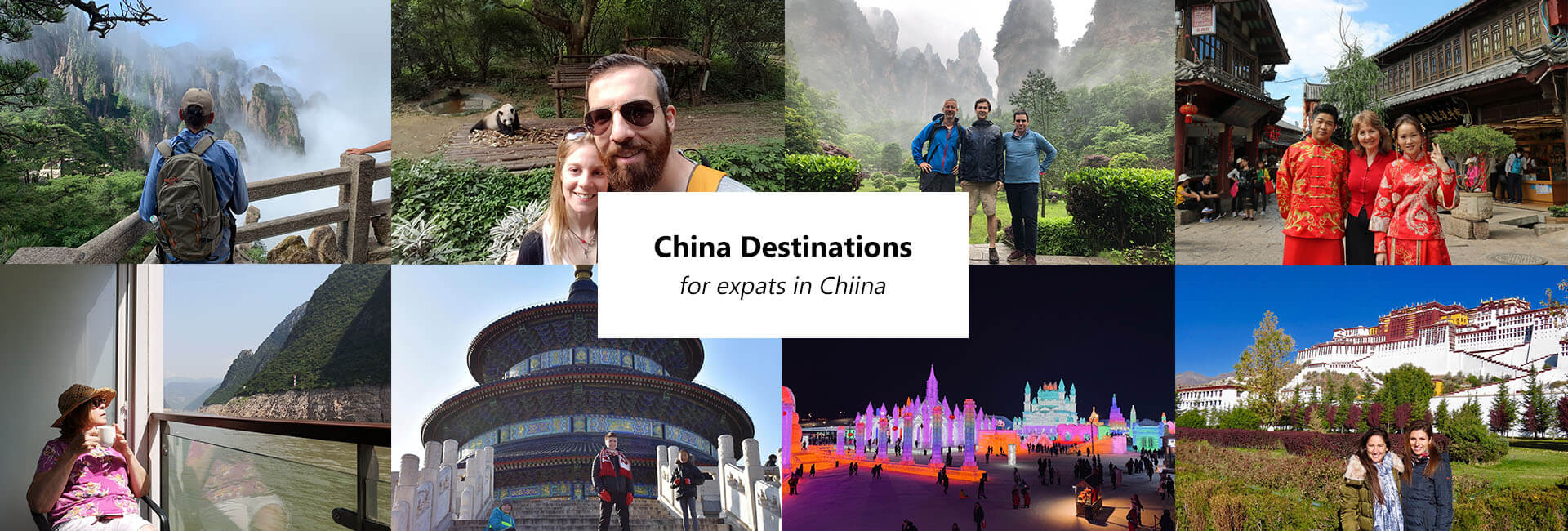
Best Places to Visit for Expats in China
No matter you are in China for business, study or permanent living, you are highly suggested to make maximize use of your weekends and holidays to explore this wonderful country. Maybe getting up close to the incredible landscapes is your preference? Are you interested in the unique culture of the Great Wall, Kung Fu and ancient army? Or do you want to take your taste buds on a trip by sampling Chinese specialties? China offers all of this and more.
Here are up-to-date lists of Best Places to Visit in China for China Expats . All are voted completely by over 20,000 foreigners in China.
China Icons
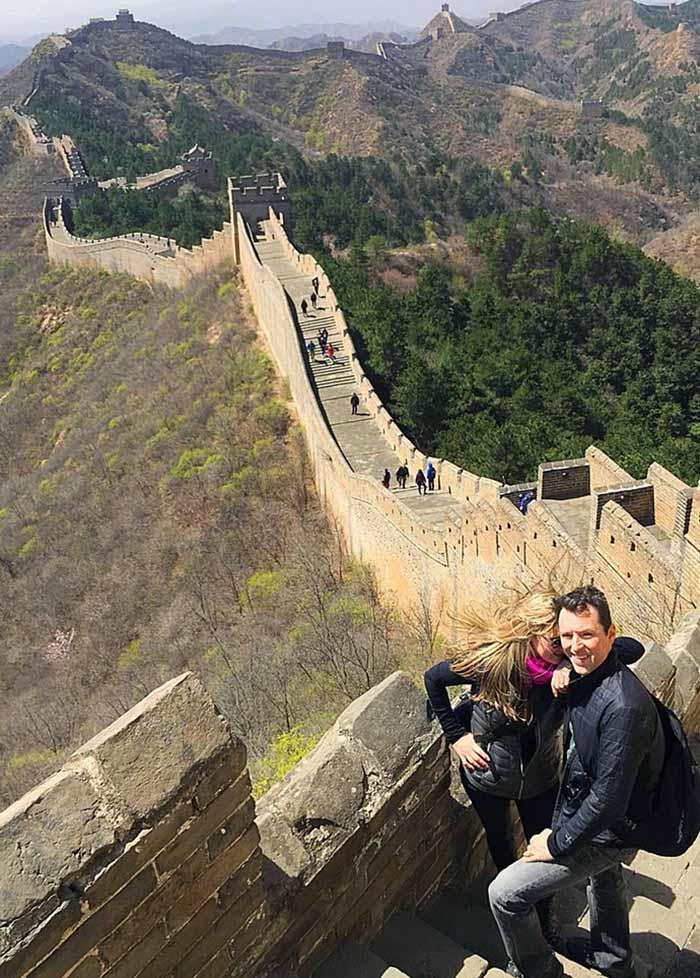
Best China Tours for Expats in China:
- ☛ 3 Days Classic Zhangjiajie Natural Wonders Tour
- ☛ 2 Days Leisure Chengdu Private Tour with Panda Visit
- ☛ 3 Days Beijing Essential Short Stay Tour
- ☛ 4 Days Jiayuguan Dunhuang Tour (Silk Road Short Break)
For Nature Lovers
Have you been yearning to nature for a long time? China has everything for you, from the majestic gorges to towering Kast Mountains, magical avatar mountains to holy snow mountains, breathtaking Yellow Mountain to beautiful Rainbow Mountains, stunning rivers to pure alpine lakes, otherworldly stone forest to spectacular waterfalls, and so on.
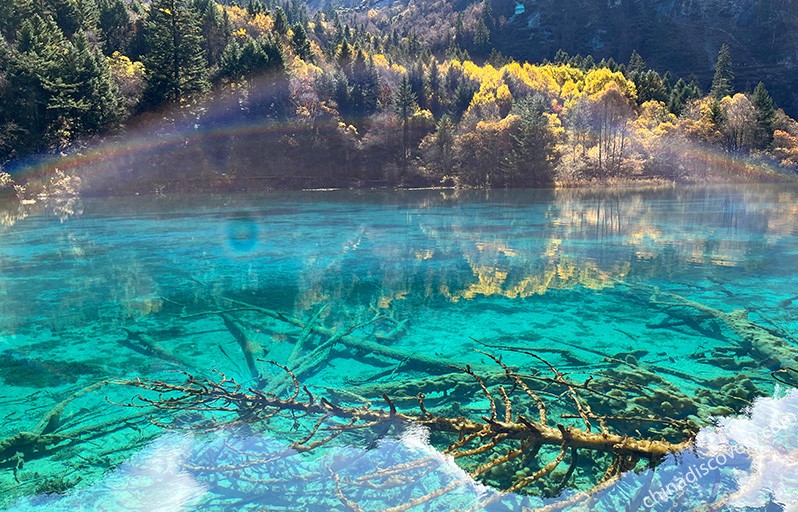
- Guilin Guilin's Scenery is the best under heaven! This ideal place always drives tourists crazy with majestic Karst Hills, emerald rivers…
- Yellow Mountain "No mountain is worth seeing after a trip to Yellow Mountain". Yellow Mountain, or called Huangshan, is the most beautiful mountain in China!
- Zhangjiajie Avatar Mountains are calling! Here in Zhangjiajie, you can get up close to thousands of magical Avatar pillars!
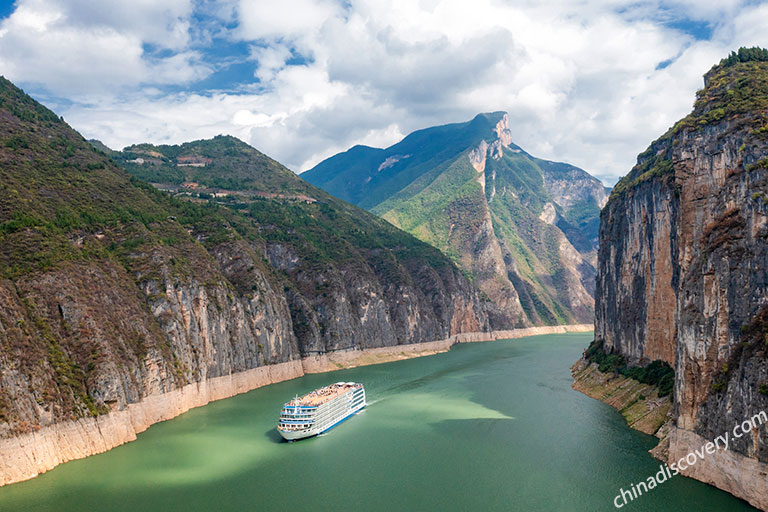
- Guizhou Guizhou has China's largest waterfall - Huangguoshu Waterfalls, a rising star among mountaineers - Fanjingshan…
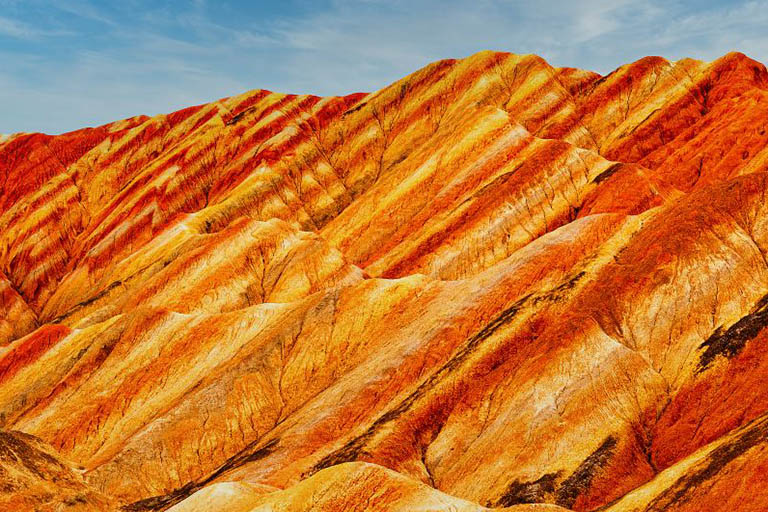
- Daocheng Yading Daocheng is praised as the Last Pure Land on Our Planet! It has superb snow mountains, ice glaciers, alpine lakes, valleys…
- Hangzhou When it comes to the most beautiful lake in China, Hangzhou West Lake usually tops the list. Mountains of tea plantations in this city are also amazing!
- Kunming Kunming, the spring city with pleasant weather all year round, is also rich in natural wonders like the stone forest, red land…
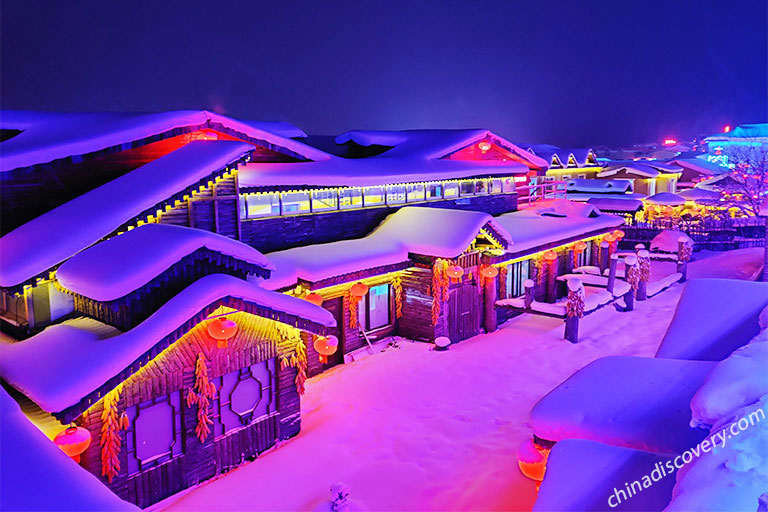
Best China Tours for Nature Lovers
- ☛ 3 Days Classic Jiuzhaigou Tour
- ☛ 4 Days Guilin Highlights Tour
- ☛ 3 Days Huangshan Highlights Leisure Tour
- ☛ 3 Days Classic Fanjingshan Tour
- ☛ 5 Days Kunming, Jianshui & Yuanyang Rice Terraces Tour
For Chinese History & Culture Fans
With as long as 5,000 years of history, China has abundant of cultural museums and heritages to explore. It is because of its long history and splendid culture that every year China attracts flocks of visitors to come and travel around. If you are also Chinese culture fans, simply visiting museums isn’t always enough. You’ll get the most satisfactions out of ruins of ancient times in front of you and visiting places that once the capital and prosperous hub in the past. Getting close to its historic cities and sites is like opening a door to trace the mysterious and splendid past. And in China, the cities below are the top picks to trace its past.
- Beijing From the world-class Great Wall to spectacular Forbidden City, Beijing, of course, always tops the travel list of Chinese culture fans.
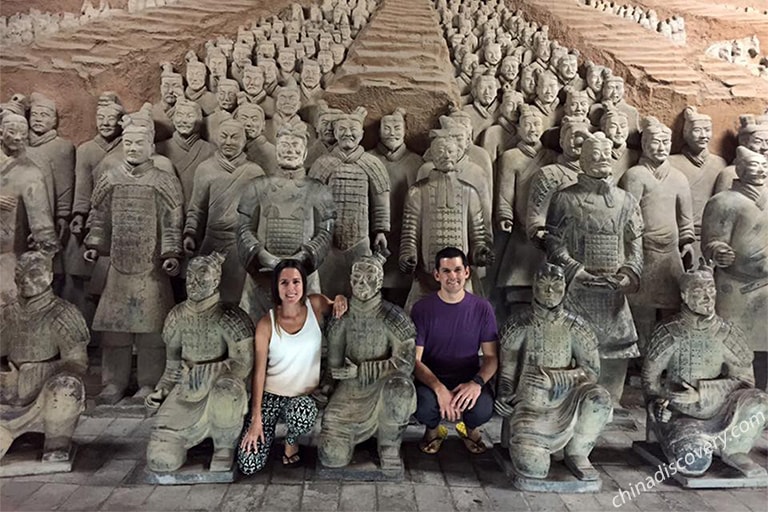
- Lijiang Lijiang Old Town is one of the four best well-preserved ancient towns in the whole China. Lijiang also has Baisha Village, Shuhe Ancient Village…
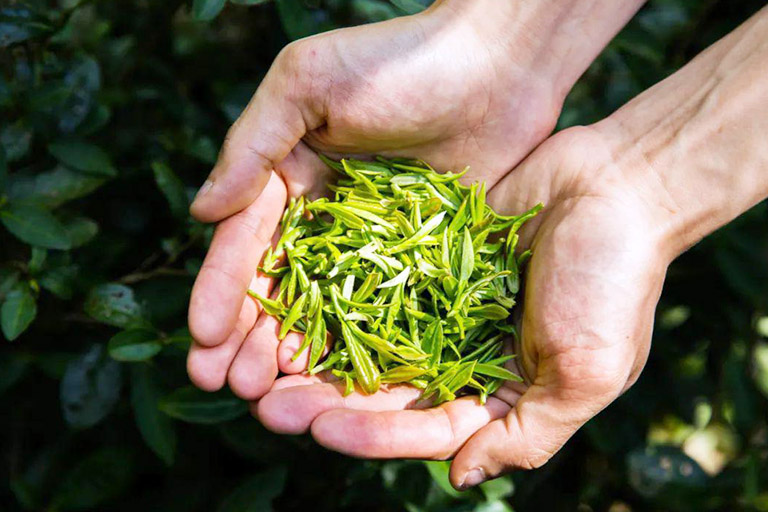
- Suzhou "Suzhou Gardens are the finest under heaven". Suzhou City has a flavor of elegance everywhere, from the classic gardens to water towns, silk factories to ancient streets…
- Foshan Fungfu Fans? Why not add Foshan, the Hometown of Marital Arts, into your trip? You can learn the stories of many martial arts masters here, including Bruce Lee!
- Shaolin Temple Shaolin Temple is the birthplace of Chinese Kung Fu that you see in many Kung Fu movies. Here, you can join the Kung Fu classes and enjoy Kung Fu shows.
- Kaili If you are curious about the minority culture in China, or want to visit some well-preserved minority villages, Kaili is one of the best choices.
- Leshan Leshan Giant Buddha is a must-visit for all Buddhist devotees. This stone Buddha is the tallest in the world!
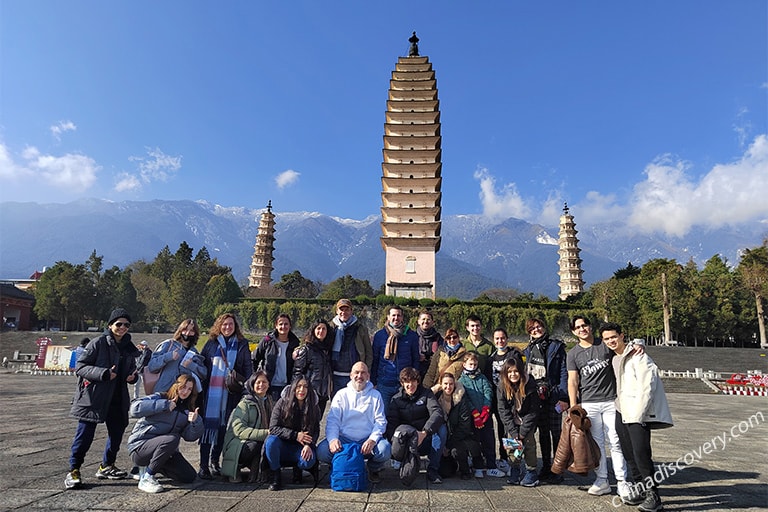
Best China Tours for Chinese History & Culture Fans
- ☛ 2 Days Beijing Layover Highlights Tour
- ☛ 3 Days Classic Xian Tour
- ☛ 3 Days Romantic Lijiang Tour with Visits to Naxi Kingdom
- ☛ 3 Days Essence of Luoyang Tour
- ☛ 3 Days Best Dunhuang Culture and Scenery Tour
- ☛ 3 Days Kaili Minority & Cultural Experience Tour with Xijiang Miao Village
For Families
If you are in China with your kids and searching for places to spend your weekends and holidays, choices are a lot. You can visit the China Icons like Great Wall and pandas, sail the picturesque Yangtze River or Li River and marvel at the Avatar Mountains in Zhangjiajie and so on.

- Xian Terracotta Warriors and Horses, Ancient City Wall, Muslim Quarter, Giant Wild Goose Pagoda , Bell Tower, Drum Tower… Everyone can have fun in Xian.
- Yangtze River The classic Yangtze River cruises take 4~5 days. If you have more days, you can have an in-depth visit of 11~15 days. Everything is perfectly arranged for your family.
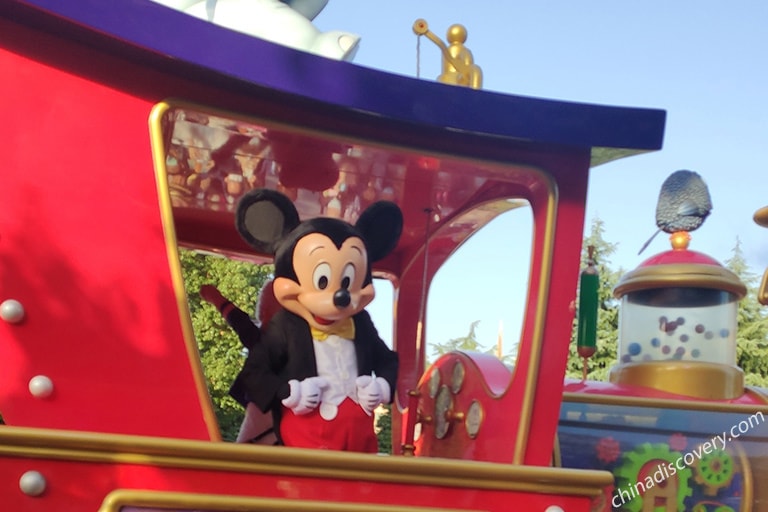
- Zhangjiajie Floating Avatar Mountains, Zhangjiajie Glass Bridge, Yellow Dragon Cave, nearby tranquil Fenghuang Ancient Town…
- Chengdu Everyone loves adorable Pandas! And in Chengdu, you can not only admire their lovely looks in a distance but also be a one-day keeper to feed them...
- Yangshuo Guilin’s scenery is the best under earth, and the landscape in Yangshuo is the best in Guilin. Yangshuo is an ideal place to take a glimpse of Chinese countryside!
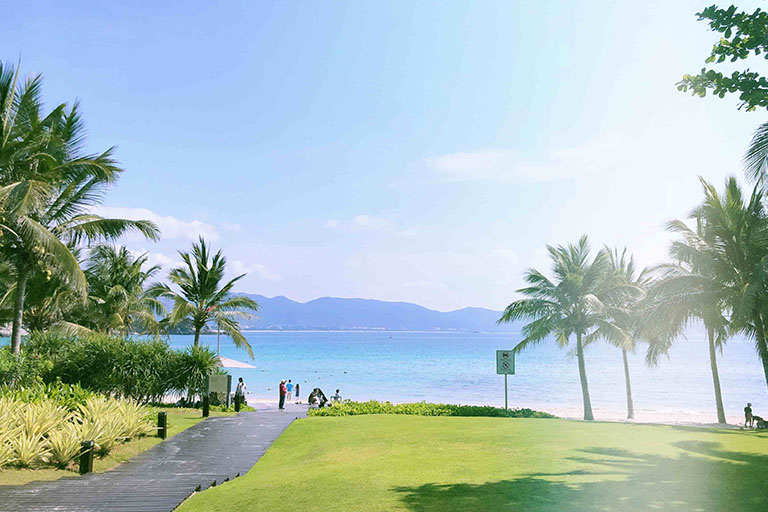
- Xiashuangbanna Featured with large groups of plants and wild animals and a strong flavor of tropical and South East Asian, Xishuangbanna is a popular tourist land for families.
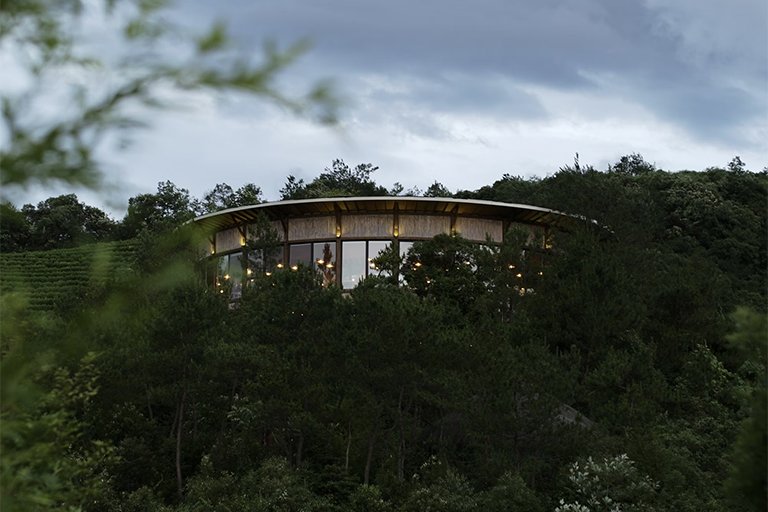
Best China Tours for Families
- ☛ 4 Days Beijing Family Tour with Kids Fun
- ☛ 2 Days Xian City Break
- ☛ 3 Days Classic Guilin Tour
- ☛ Days Best Shanghai Family Holiday Tour
For Hiking Aficionados
Looking for some amazing accesses to wonderful mountains, gorges and so on by your steps? No matter you are beginners or experienced hikers, China can perfectly fulfill your dreams. There are notable great wall, popular Yellow Mountain, adventurous Mount Kailash, little-known Yubeng and so forth for you to choose!
- Great Wall "He who has not climbed the Great Wall is not a true man"! There are top 7 sections of great walls are calling, including Mutianyu, Jinshaling, Badaling, Simatai, etc.

- Tiger Leaping Gorge The Tiger Leaping Gorge hiking trail is one of the most famous routes in the world! It is a totally natural one winding through the hillside and cliffs high above a gorgeous gorge.
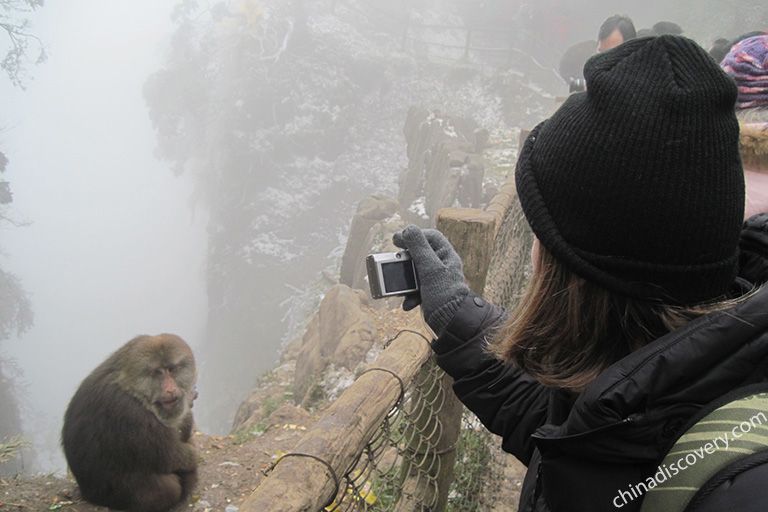
- Mount Siguniang The beautiful Mount Siguniang provides diverse of hiking opportunities, from leisure hiking to top professional hiking to the summits of Snow Mountains.
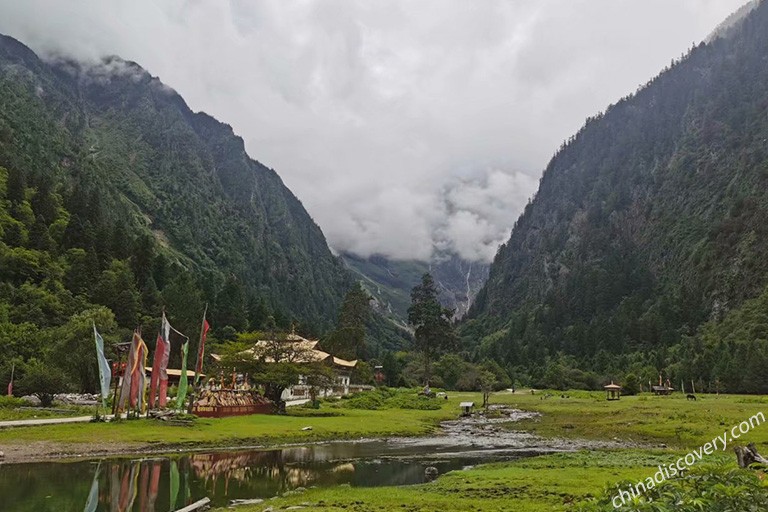
Best China Tours for Hiking Aficionados
- ☛ 2 Days Mutianyu and Jinshanling Great Wall Hiking
- ☛ 3 Days Tiger Leaping Gorge Hiking Tour
- ☛ 2 Days Mount Emei Leisure Hiking Tour from Chengdu
- ☛ 3 Days Xian Mount Huashan Leisure Tour
For Foodies
Every city in China offers diverse delicious dining options. You can of course treat your taste mud with excellent dishes in the city you are living or working. However, if you want some authentic tastes of specialties of different regions, you can head to Chengdu for Sichuan Cuisine dishes like Kung Pao Chicken, to Chongqing for Nine-grid hot pot, to Shunde for excellent Cantonese Cuisine, to Xian for various kinds of cooked wheaten food…
- Chengdu Chengdu is the capital of Sichuan, the province where many notable dishes like including Mapo Tofu, Twice Cooked Pork and Gong Bao (yes Kung Pow) Chicken originate.
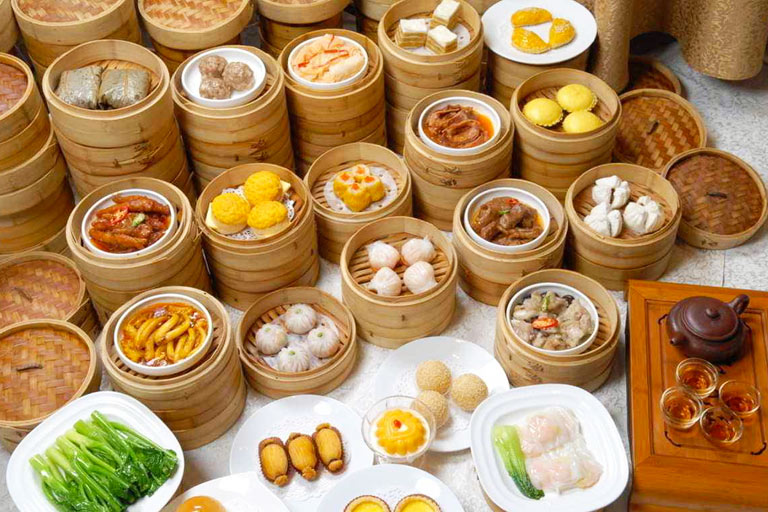
- Beijing Everyone knows Beijing Roast Duck! Instant-boiled Mutton is also delicious. You may also like the unique Fermented Mung Bean Juice, Rolling Donkey, Pea Flour Cake…

- Chongqing The hot pot meals in Chongqing, the Hot Pot City in China, are considered to the best and most beloved. You can throw almost any ingredient into the hotpot.
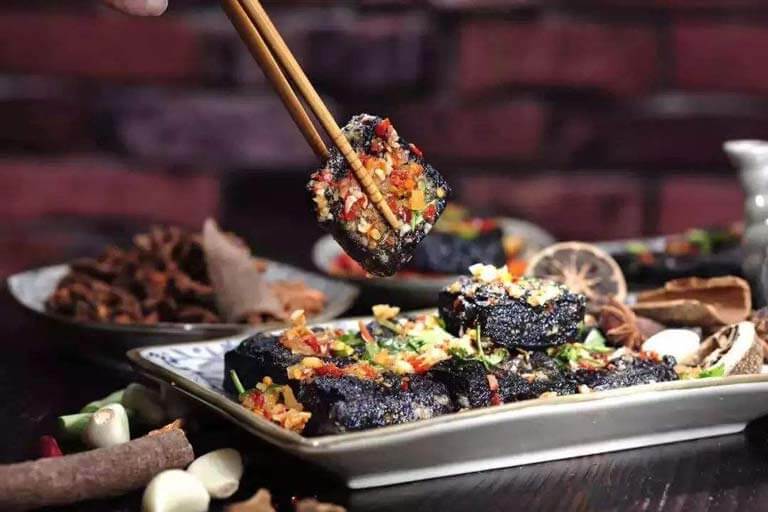
Best China Tours for Foodies
- ☛ 2 Days Best Chengdu Food Tour with City Sightseeing
- ☛ 5 Days Brilliant Lingnan Culture & Food Tour
- ☛ 4 Days Beijing Food Hunting Tour
For Photography Enthusiasts
Photography is a great way to record the beautiful China and forever keep your memories during your travels in China. No matter you are professional photospheres with superb photographic "guns" or shutterbugs who just want some interesting Instagram images, China never let you down. From the sprawling mountains to the scenic beaches, idyllic rice terraces to never-ending meadows, China is full of great places to press your shutter.
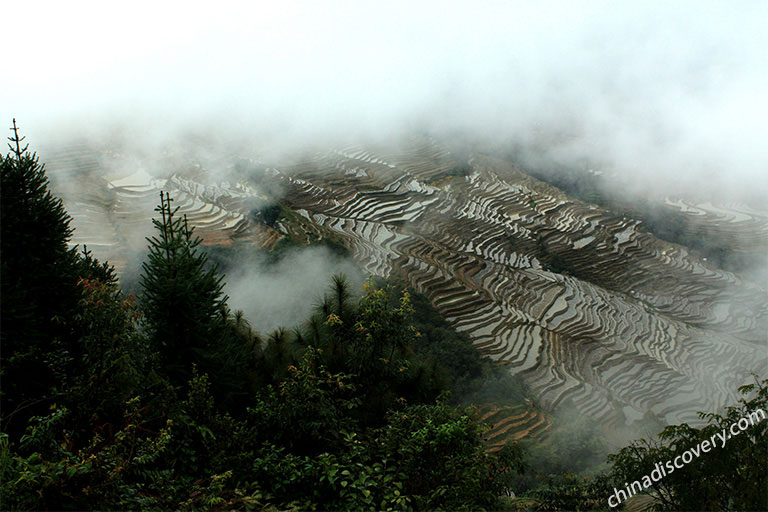
- Longji Rice Terraces Longji Rice Terraces in Guilin is not only famous for its huge size and traditional minority culture, but also unique terraces in amazing shapes of moons, phoenixes, dragons...
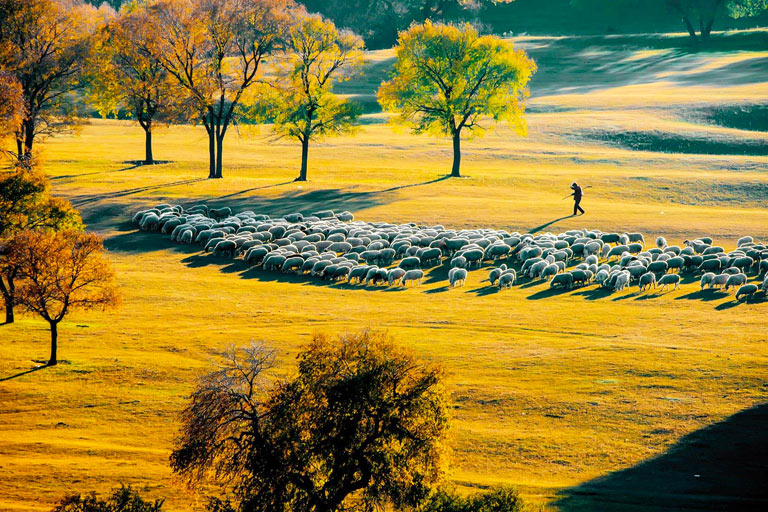
Best China Tours for Photography Enthusiasts
- ☛ 4 Days Xiapu Mudflat Photography Tour
- ☛ 4 Days Yuanyang Rice Terrace Awesome Photography Tour
For Modern Charms Philatelists
Looking forward to visit the modern cities to experience the rapid development of China or to feel the most state-of-the-art high-techs? There are also a lot of recommendations in China.
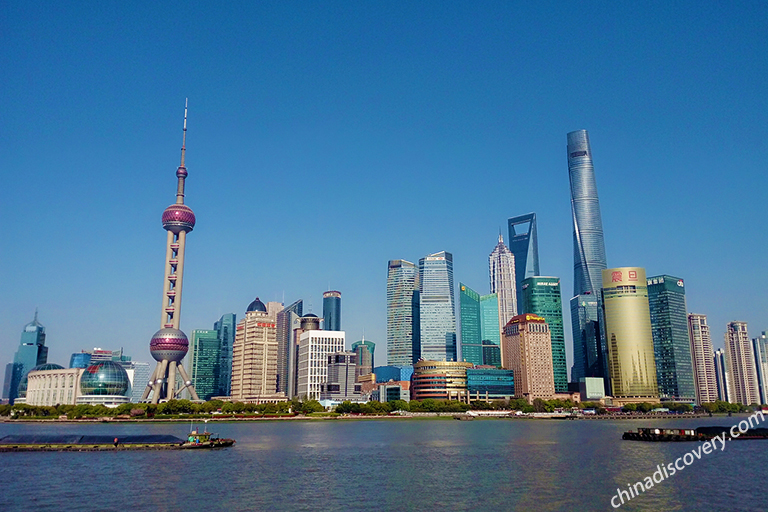
- Hong Kong From high-end shopping malls to colorful recreation venues, luxury cruises to stunning skyline, every corner in Hong Kong gives you perfect explanations about modern.
- Shenzhen Shenzhen is regarded as an incubator for cutting-edge design, a rule-breaking tech hub and a bastion of next-gen urbanism. High-tech stories usually starts here!
- Guangzhou Guangzhou is at the forefront of modern living, but is not that crazy as Shanghai and Shenzhen. Shopping and dining sprees there are great!
Best China Tours for Modern Charms Philatelists
- ☛ 3 Days Shanghai Past and Present Contrast Tour
- ☛ 2 Days Essence of Hong Kong Tour
- ☛ 2 Days Shenzhen Short Stay Tour with All Essences
Helpful China Expats Travel Guide
- Weekend Trips from Beijing
- Weekend Trips from Shanghai
- Shanghai Day Tours 2024
- Weekend Trips from Chengdu
- Weekend Trips from Guangzhou
- Weekend Trips from Shenzhen
- Weekend Trips from Hangzhou
- Weekend Trips from Suzhou
- China Expats Travel Tips
Recommended China Tours for Expats 2024
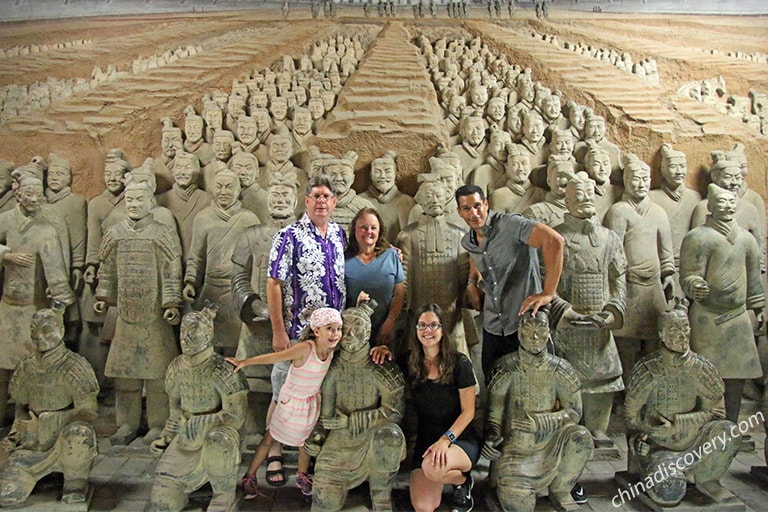
This is the most popular China tour to Beijing, Xian and Shanghai to visit the most iconic China attractions - Great Wall, Terracotta Warriors, The Bund, etc., and explore great of both China’s past and present.
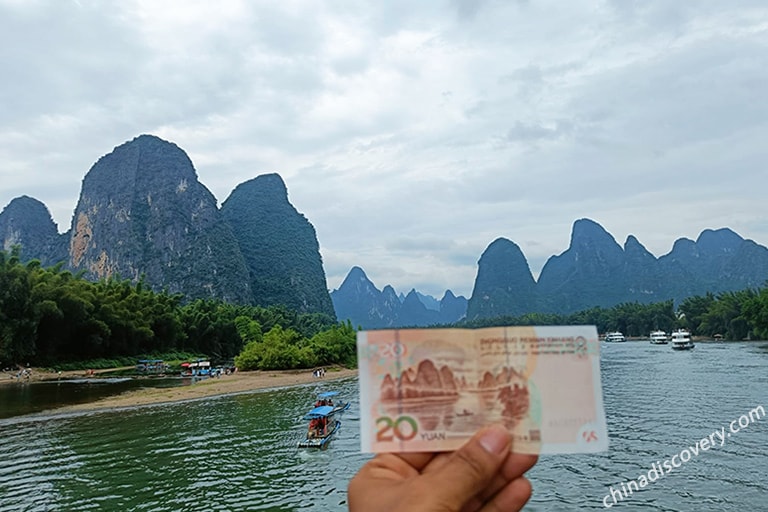
With the Golden Triangle plus the fabulous Karst and countryside scenery of Guilin, this tour leads you to top 4 destinations anyone cannot miss out in China especially for the first-timers.
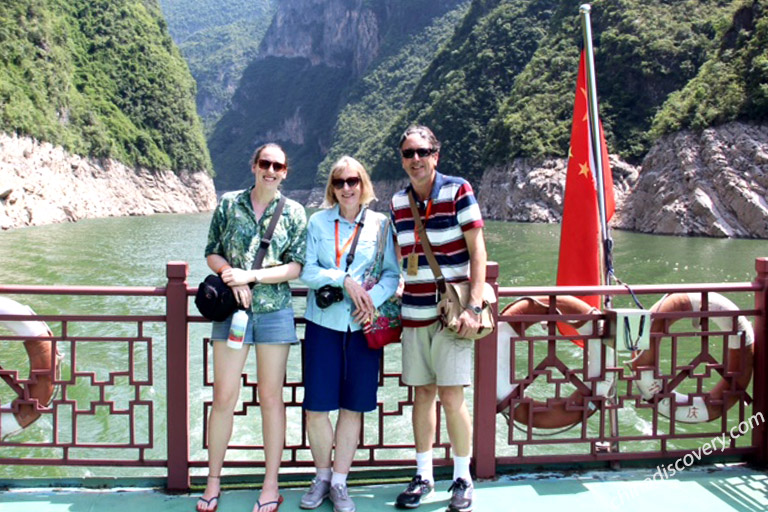
Travel from north to south China, meet stunning nature and culture, urban and countryside scenery with relaxing cruise experience on the beautiful Yangtze River.
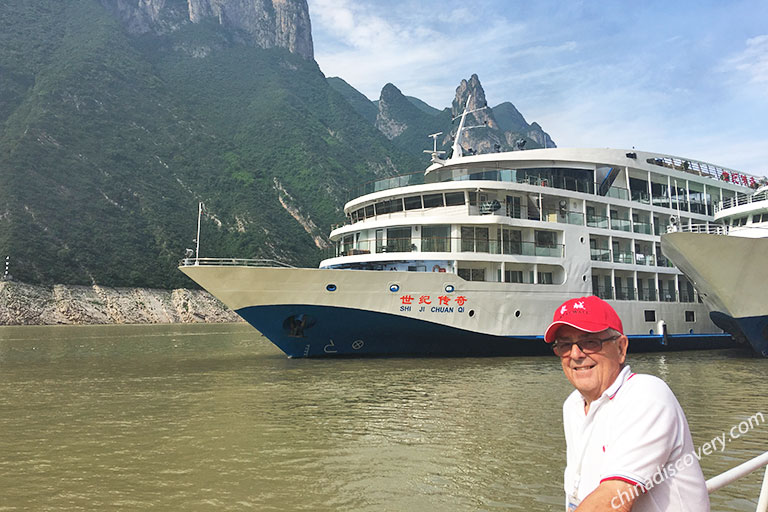
Coverinng top highlights in China to please your eyes, ease your spirit, witness grand and beautiful landscape in special ways.
Start planning your tailor-made holiday to China by contacting one of our specialists. Once inquired, you’ll get a response within 0.5~23.5 hours.

Have a question? Get answers from our travel experts or guests
- Your Question:
- Your Email:
- Affordable and valuable price
- 100% tailor-made packages
- Highly rated customers reviews
- Efficient customer support
China Tours
- Top 10 China Tours
- Classic China Tours
- China Tours from Beijing
- China Tours from Shanghai
- China Tours from Hong Kong
- China Tours from Chengdu
- Short China Trips
- Customize China Tour
- China Panda Tours
- Family Tour with Kids
- High-Speed Train Tour
- Silk Road Travel
- Yangtze River Cruise
- Hiking & Trekking Tours
- Photography Tours
- China Minority Travel
- Beijing Shanghai Tours
- Shanghai Yangtze Tours
- Chengdu Jiuzhaigou Tours
- Chengdu Lhasa Tours
- Suzhou Hangzhou Tours
- Guilin & Yangshuo
- Zhangjiajie
“Very good experience”
“WONDERFUL 25 DAYS IN CHINA - PRIVATE TOUR”
“Awesome China tour from northeast to southwest”
Any questions, please email us at: [email protected] or call us at: 86-19138970032 (Monday-Friday 9 a.m. to 6 p.m. GMT+8)
- Terms & Condition
- Privacy Policy
- Customer Support
Copyright © 2011-2024. All rights reserved.
Cookie policy
We use cookies to give you the best experience on our website. Continue using our website means you agree with our cookie policy. For more info, please read here .

TRAVEL to CHINA – Tips and Information Guide for 2024
Everything you need to know about planning travel to China in our comprehensive destination guide.
From hiking the Great Wall of China to conquering your fear of heights at the highest glass bridge in the world, these are just some of the reasons why you should travel to China.
China is one of the most amazing countries in the world that is deservedly on nearly every traveller’s bucket list.
There aren’t that many countries that possess such various geographical climates, rich biodiversity, stunning landscapes and culture that persisted as the result of over 4,000 years of accumulated historical heritage.
Whether you want to roam its markets or its mountains and jungles, China has something to offer for everyone.
This country boasts in the diversity in its cuisine in addition to that of its languages, people, climate regions and biodiversity.
When you visit China you will be thoroughly amazed that the diet and culinary options vary from region to region.
This in itself gives you more than enough reason to visit China from one end to the other.
So if you’re planning your trip to China and you want your trip to be packed with experiences, new sights, and exotic cuisine while being vastly different from any other previous trip you’ve taken, then our China travel guide should make the planning as fun as the travel experience itself!
China Travel Guide
Before heading towards China, check out some basic information you might need:
General Information
- Capital: Beijing
- Other Main Cities: Shanghai, Guangzhou, Urumqi, Shenzen, Chengdu, Xian
- Currency: Renminbi
- Language: Standard Chinese, Mongolian, Uyghur, Tibetan and Zhuang
- Population: 1,403,500,365
- Area: 9,596,961 sq.m2
- Electricity Voltage: 220V
- Electricity Sockets: Type A, C and I
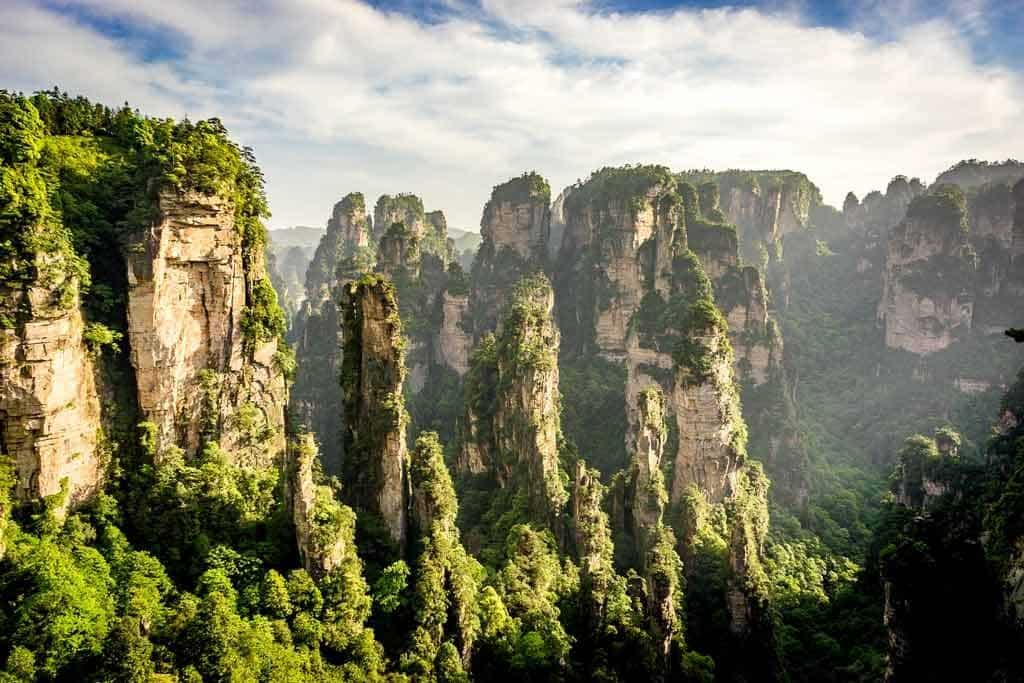
Top 5 Places to Visit in China
- Mount Huangshan – the UNESCO World Heritage is one of the most scenic highlights in the world. The impressive landscape features daunting peaks, thick forests composed of oddly-shaped pine trees and dense clouds covering the sky. It’s a perfect weekend trip if you want to see the most notable peaks and viewpoints of the Yellow Mountains .
- Suzhou – another UNESCO World Heritage site, a town nicknamed the ‘Venice of the East.’ If you’re visiting Shanghai, don’t miss the opportunity to pay a visit to this water town. The canals, gardens, narrow alleyways, picturesque pagodas and bridges make it a perfect day trip for some relaxation time.
- Hangzhou – one of the seven ancient capitals of China and one of its Four Garden Cities. It’s known for the West Lake and stunning and well-preserved nature. The lake area consists of about 60+ cultural sites and spots to enjoy its nature . You can book a guided cruise tour that combines the best of natural sites but also incorporates this city’s rich history.
- Guilin – this site has well-deserved its reputation for being one of the biggest natural gems in the world. The oddly-shaped hills (Karst Mountains), mysterious caves and its riverside decorated with the tall bamboo trees, paints a scenery unique to China.
- Beijing – C hina’s capital that is home to over 21 million people is not only the political center of the country but also has other impressive cultural and historical highlights that are not to be missed! Those include one of the World’s most recognizable landmark, the Great Wall of China and, equally as fascinating Forbidden City – today, a declared UNESCO World Heritage which was home to the rulers of the famous Ming and Qing dynasties.
Top 5 Travel Experiences in China
- Hiking the Great Wall of China – There are many sections of the wall that you can hike. We recommend the Jinshanling section, as most agrees it not only has the most beautiful scenery but is also the most accessible. The Chinese government has invested a lot into the infrastructure of this section, vastly improving the paths, cableway, roads and adding new hiking routes and even, organizing a shuttle bus. You can even camp on the Great Wall of China if you want!
- Walk Over the Zhangjiajie Glass Bridge – This is the longest and highest glass bridge in the World. It will be not only a memorable but also an adrenaline-inducing experience. This area is incredibly special, especially because of the Avatar Mountains and all the beautiful nature in this national park.
- Visit the Panda Reserve in Chengdu – if you’re an animal lover then you won’t regret taking the time to explore the reserve. The Chinese consider pandas sacred animals, and they are doing everything they can to ensure that we will be able to remove pandas from the endangered animals’ list. This gorgeous reserve is a testament to their dedication . Check out our post on how to spend 3 days in Chengdu .
- Mogao Caves , Dunhuang – More popularly known as the Caves of a Thousand Buddhas, these are a series of caves (492 caves) where ancient Buddhist carvings, manuscripts and murals from the 14th century can be found. This place is well worth the time, energy and money you’d need to see it. The world-class experts will guide you through over 41,800 meters of Buddhist history.
- Visit the Forbidden City – This UNESCO World Heritage Site in Beijing is incredibly important for the history and culture of the Chinese people. It is a wonderful example of traditional Chinese architecture, it’s home to the famous Palace Museum and it is the largest ancient palatial structure in the whole world!
Best Time To Visit China
When considering when to plan your trip to China one of the most important things to keep in mind are the season and the weather.
Some people plan their trips around certain events. While others plan around the seasons/weather.
When NOT to Visit China
When organizing your trip to China, a good starting point is to first decide when NOT to go!
A good rule of thumb is to avoid every public Chinese holiday ! But that might prove a little bit trickier than you’d expect since some follow the lunar calendar and are different year to year.
And it sounds counterintuitive to avoid China at certain times. But during public holidays China turns into an entirely different country for a traveller.
This is because transportation tickets are more expensive. Booking a train ticket will prove to be almost an impossible feat and all tourist sites will be overcrowded.
Not to mention that a lot of places will be closed for a couple of days or even a week. So you might miss an opportunity to visit locals’ favorite small eateries or some traditional venues.
So for visitors who really want to take their time and enjoy China’s main highlights, this would definitely be the worst time to visit.
Avoid the Spring Festival (more known as Chinese New Year/ Chunjie) – mid to late January to mid-February.
This is the most important holiday and you can expect to see millions of Chinese traveling all over the country.
It’s known to be the biggest annual mass migration in the world.
You should also avoid visiting China during the Golden Week or the week of National Day.
It’s from the 1st – 7th of October. And while the number of people that participate is lower than during the Spring Festival, there are still a lot of people moving and a lot of places closed to the public.
A lot of Chinese travelers also go abroad during this time so you can expect ticket prices for Japan and Thailand to go up.
If you want to visit during those dates, then just make sure to book well in advance and keep in mind that you will be paying more for everything – from accommodation to street food.
Other popular events are the Lantern Festival and the Dragon Boat Festival .
Those events should not interfere with your travel but expect slightly larger crowds at certain sites.
When to Visit China
So now that we tackled when NOT to visit China, what is the best time to visit China?
China occupies a landmass with various climates spanning all over the country.
The best times for a visit are generally in spring (March-May) and autumn (September–November).
If you’re having trouble deciding when to visit, a useful trick is to also divide China by regions and seasons.
As we said, spring is a great time to travel pretty much all over China.
But in the north, it might be colder during early spring or late fall. But the weather should still be manageable.
The exception is Tibet . This is because it is closed to foreign visitors for two months every spring.
From April to June, you can visit just about anywhere.
The best times to visit some places in northern China, Hainan or Tiber are during mid-summer.
Some destinations are almost unbearably hot during summer and if you are sensitive to high temperatures, you should keep that in mind.
The places that we would avoid during the summer are:
- Nanjing (Jiangsu)
- Wuhan (Hubei)
- Chongqing (Sichuan)
- Inner Mongolia
Other Travels Seasons
The factor that you should include when planning when to visit is the rainy season.
From April to August if you’re planning to visit southern China, your flight just might be delayed or even cancelled due to bad weather conditions.
At this time of year, it’s best to travel via high-speed trains – they’re rarely delays, fast and comfortable.
As with many other places in the world, in July and August students are on a school break and many families use that time to go on a summer vacation.
Prices will be higher in summer and you should plan well in advance.
Autumn is ideal if you want to visit spots that otherwise experience unbearably high temperatures in summer.
We would suggest during autumn that you plan to visit the Great Wall, Hong Kong and Xinjiang.
To see the incredible feat of mankind, the Great Wall, surrounded and bathed in autumn colours, is a visual experience like no other.
If you’re thinking to book your trip during your winter holidays you will be rewarded with fewer crowds and cheaper prices if you can withstand the cold.
During winter you can visit the Harbin Ice Festival (24th of December to 25th of February).
The snow and the scale of ice sculptures that are illuminated at night are an amazing sight to see.
The necessity of warm clothing can never be overemphasized as the temperatures drop during night low as -24 °C and are hardly ever over zero during the day.
A less known fact is that Tibet is great for winter traveling.
During the high season, there is a limited time how much you can spend at the Potala Palace . But you can spend as long as you wish during winter.
The capital of Tibet, Lhasa, also has warmer winters than Beijing.
If that’s not a good enough reason to travel to Tibet during winter, we will also mention that it’s definitely a more economical option and permits to enter the region are easier to get.
You will get a more authentic experience during winter because that’s also when many pilgrims arrive in Tibet.
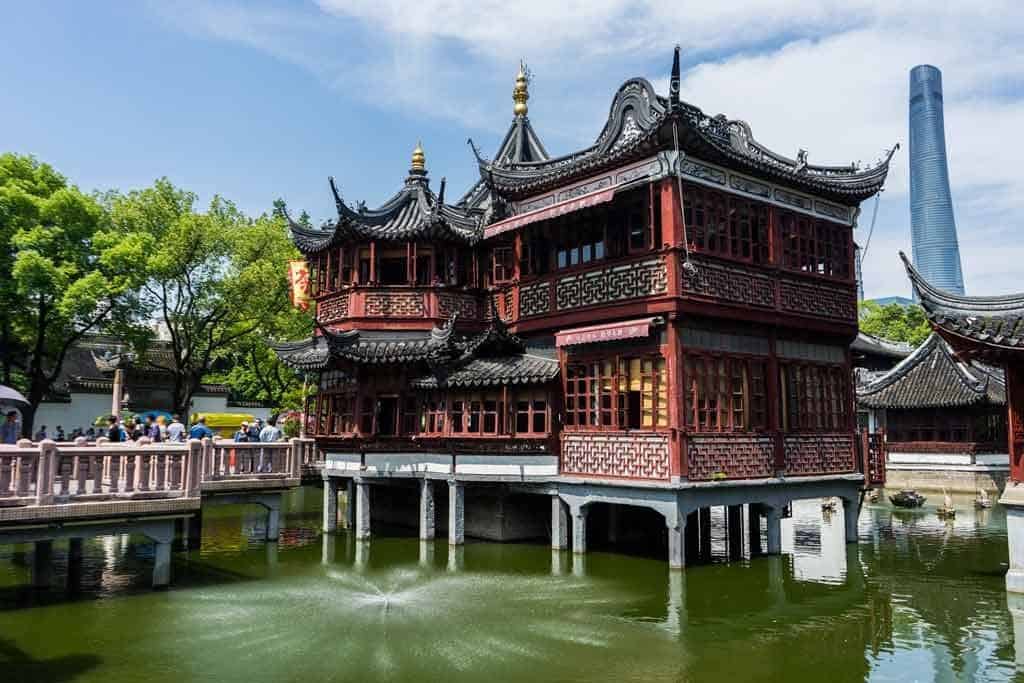
Food In China
- Beijing Duck – This dish is a must when you’re in Beijing, the birthplace of this iconic dish. The sweet and savory duck is served with spring onions, cucumbers, pancakes and other different sides (every restaurant has its own spin on this Chinese classic).
- Hot Pot – This can be an amazing choice or an utter disaster if you do not understand the Chinese spices and ingredients. It’s a pick your own destiny. First, choose the soup for your pot. This dish is all about the spice, but if your counterpart can’t handle the spice as well as you, you can split the pot into two. After choosing from a wide array of vegetables and meats you walk over to the sauce bar. The sauce bar offers barbecue sauce, freshly cut herbs, sesames and pastes, meats and vinegar. Ask a local to guide you through the process and help with their suggestions.
- Hong Shao Rou – This means red braised pork belly. It’s a dish that originated in Shanghai and is popular all across China. It’s cooked with garlic, chilli peppers, rice wine, ginger, soy sauce, sugar and deeply aromatic spices.
- Dumplings – These can be eaten at any time of the day. They are usually dipped in soy sauce or vinegar with garlic. Dumplings are a staple of Chinese cuisine and there are many variations to cater to all tastes. The dumpling dough can be based on potatoes, flour or bread and the filling can be made from almost anything – various meats, fish, vegetables or cheese.
- Chow Mein – This is a dish made popular by the locals of Northern China, which today has reached global fame. It’s a dish made out of thin noodles (bean and cornflour dough) and is accompanied by sliced meats, Chinese vegetables and an egg.
Travel Itineraries Suggestions for China
China is vast. As the 3rd largest country in the world, China has much to offer by way of travel experience.
But trying to see the entire country can be daunting.
Here is a suggested 12-day itinerary to give you the best chance to see the highlights in the least amount of time we’d recommend when you visit China.
Beijing (3-4 Days)
Perhaps the biggest reason why people go to China is to see the Great Wall of China.
Our main piece of advice is to skip the Badaling , which is the busiest section of the wall.
Visit a part of the wall that is unrestored but still tourist-friendly, such as Jinshanling, Huanghuacheng or Gubeikou .
The easiest section to visit would be to take a bus to Mutianyu .
There you won’t have the wall to yourself. But you will have successfully avoided most of the crowds and will see beautiful views.
The second day, go and roam Beijing’s hutongs.
These are a network of alleyways and courtyard houses that make up Beijing.
There are day tours that usually include the Wudaoying Hutong , Houhai Lake, the Lama Temple and the Bell and Drum Towers .
B ut if you have the time, the best way is to simply let yourself get lost.
If you have a budget set aside for activities, hutong tours are interesting as you’d get to learn more about history and culture.
On your third day, make sure to go and see the Tiananmen Square that carries a portrait of Mao right over the entrance to the Forbidden City.
The Forbidden City is huge and you could spend a full day there.
But for most travellers, even two hours is enough to see all the highlights before starting to feel overwhelmed.
For the rest of the day, go to Jingshan Park and enjoy the views of Beijing and the Forbidden City!
Xi’an (2 Days)
Rent a bike at one of the main gates of the wall and do a round trip tour around the ancient wall.
When you get off the wall, take some time to explore the art district near the South Gate .
The area is brimming with small shops and souvenirs.
This stunning neighborhood is a joy to photograph.
Take one afternoon to go roaming around the Huimin Jie Muslim market.
From bargaining for interesting souvenirs to bring back to your loved ones to eating some of the most delicious and cheapest street food you’ll ever have.
Also, you are only a day trip away from Xi’an are the terracotta warriors.
You can see rows upon rows of life-sized terracotta warriors.
Jiuzhaigou and Huanglong (2 Days)
Hiking through Jiuzhaigou is one of the most beautiful trails you’ll encounter. It is full of crystal lakes and rivers that will mesmerise you.
The waters are so crystal clear that they reflect the sky.
The next day visit Huanglong , known for its calcite deposit pools.
These vibrantly colored pools are why Chinese have nicknamed the Huanglong – “fairyland.”
Songpan (1 Day)
If you’re a fan of horses then definitely don’t miss out on a horse trek across the Tibetan plateau.
You will be able to travel with a local guide that will show you parts of China that most visitors don’t get to see.
Chengdu (2 days)
A bus ride to Chengdu is four to six hours (there are flight options available too). This will leave you just enough time in the afternoon to explore teahouses and the city’s scenic gardens.
For dinner, you should go and get the traditional eating experience – the hot pot (from Chongqing and Sichuan).
The next day you might want to take the two-hour trip to see the largest Buddha in the world.
There are many tourist buses that operate on a daily basis.
One of the highlights of Chengdu is their Panda Reserve .
Morning visits are the best because that’s when the pandas are most active.
They also have a baby area, where you can observe cubs play with toys and roll around.
Shanghai (2-3 days)
To visit Shanghai, try to have at least two full days available to give this city justice.
Some of Shanghai’s highlights are: the Bund, the Yu Yuan Gardens , the French Concession and Jing’an Temple .
A lot of visitors claim that the best soup dumpling eatery is outside the Yu Yuan Gardens. Just follow the queue.
To see the ever-rising skyscrapers expand before you in every direction you look, just go up to one of Shanghai’s buildings.
The usual go-to observatory spots are the Shanghai World Financial Center and the Jin Mao Tower .
Visa Requirements For China
If you are travelling to China you will have to apply for a visa from the Chinese embassy or their consulate.
This is unless you are a citizen from one of the visa-exempt countries.
An important side note : Hong Kong and Macau, have their own independent border control policy.
This means that they have their own visa requirements for which you have to apply separately from your Chinese visa.
There are only seventeen countries that are allowed to travel without a previously issued visa to China.
The countries that are exempt from visa are :
Stay up to 90 days:
- Bosnia and Herzegovina
Stay up to 60 days:
Stay up to 30 days
- Seychelles
- United Arab Emirates
Stay up to 15 days:
For further information and up-to-date changes, click here .
READ MORE: Our experience with getting a Chinese visa in Vietnam .
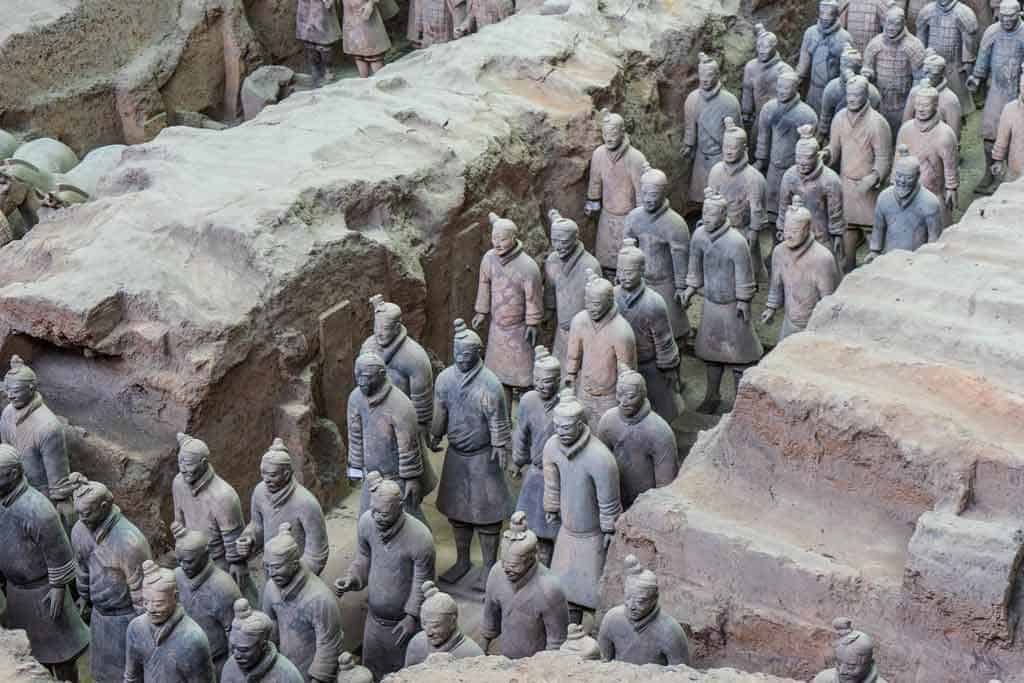
How to Travel to China
There are plenty of ways to travel to China. Whether you prefer to travel by air, land or sea you will find many options and rates for your travel into the country.
Flying is the fastest and most convenient way to travel from most countries in the world to China.
China air transport hubs are:
The biggest and most used airlines are:
- China Eastern Airlines
- China Southern Airlines
- Hainan Airlines
International flights connect China with major cities all around the world. Further, Chinese domestic flights connect all major cities within the country.
The only two cities in China that have two airports are Shanghai (Hongqiao International Airport and Pudong International Airport) and Beijing (Nanyuan Airport and Capital International Airport).
So be mindful of that when booking your flight.
There are eighteen cities in China that offer 72-hour visa-free transit so visitors can have a short stay in the most popular cities. Just note that these also tend to be the most expensive ones too.
From Europe:
Getting to China from Europe could be tricky and it most likely requires transfers.
That being said, you can still get to China from many European cities, such as Amsterdam, Milan, Rome, Brussels, Paris, Frankfurt, Manchester, Madrid, London, Zurich, Barcelona and Helsinki.
From the US:
It is possible to catch a direct flight from the US to China.
Most flights originate in San Francisco, Seattle, Detroit, Los Angeles, Seattle or Chicago and terminate in either Beijing or Shanghai.
Of course, pricing and availability vary. And you can expect the flights to be operated by one of the three big companies: Delta, American or United Airlines.
There are a variety of ways and border crossings when you want to visit china overland.
Travelling by train and vehicle are the most common.
The most usual way to get from Europe to China via train is to hop on the Trans-Siberian railway.
The Trans-Siberian train is a lot easier to arrange when it comes to booking a ticket or organizing your visas. And it is significantly faster.
The Trans-Siberian route, from Moscow – Beijing, is just one train. So in terms of being pragmatic and budget-friendly, this is the option we would recommend.
But that said, there’s another possible route: the Silk route via Kazakhstan.
Here you have the following options :
- London – Moscow
- Moscow – Astana or Almaty (Kazakhstan). This is the direct route for China
- Moscow – Bishkek (Kyrgyzstan)
- Moscow – Tashkent (Uzbekistan), if you wish to start from Uzbekistan
- Tashkent – Samarkand – Bukhara and Urgench for Khiva, these trains link Tashkent with three cities in Uzbekistan
- Tashkent – Almaty
- Almaty/ Astana – Ürümqi, which is the next step to China
- Ürümqi – Xian – Beijing
Train tickets are more expensive than traveling by air and transit times are longer too.
But i f you do want to spend some time in Uzbekistan, Kyrgyzstan or Kazakhstan then taking this route is a nice way to do sightseeing.
If you’re coming from USA/Canada, the easiest way would be to book your ticket to Moscow and then decide whether you want to take the Silk or the Trans-Siberian route.
We do not suggest driving because you could only drive to China, not inside the country.
International driver’s licenses are not valid in China.
So even if your starting point is from one of the neighbouring countries, it’s less hassle to book a train or hop on an airplane.
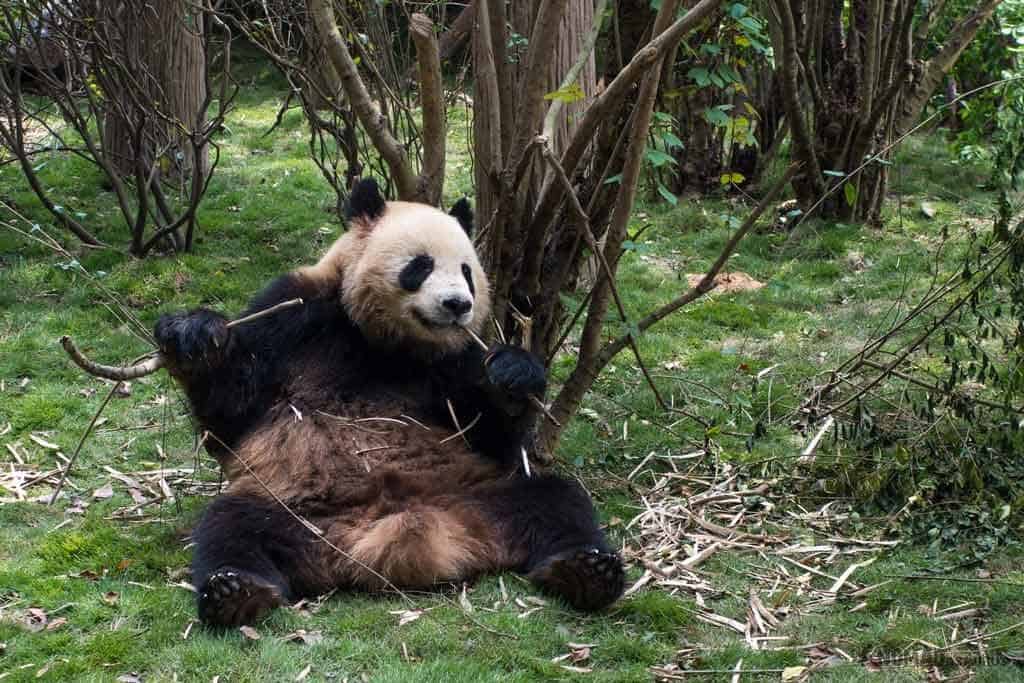
China Travel Tips
If you’re not from China or eastern Asia, you could find the culture and way of interacting to be quite strange.
The way of expressing emotions and opinions is quite different in China as compared to Western cultures.
But that’s just the beauty of cultural variety.
Besides that, there are certain things that you should pay attention to in order to have a good time in China.
And there are also things that you should know so that you will be respectful towards the locals.
Here are some tips we have for you during your stay in China:
- Don’t be afraid of raised voices! A lot of the time you will encounter Chinese people talking very loudly. In most cultures that would signalize that a heated discussion is about to turn into a brawl. But actually, Chinese people can tend to just talk loudly and passionately.
- Be sure to have Travel Insurance for the duration of your trip. One incident can cause a major impact on your wallet – not to mention your travel plans.
- Don’t tip. This might go against your personal beliefs, but Chinese don’t tip and neither should you. This will only confuse them or some may even find it insulting.
- Buy a VPN. There are a lot of useful websites that are not accessible in China (like Facebook or Google!) We recommend ExpressVPN. Use this link to get 30 days free when you sign up.
- The preferred method of payment is cash. Most places only accept cash unless you are visiting upscale hotels and restaurants.
- Use the Yuan currency only. The Hong Kong dollar or US dollar won’t be accepted.
- Install Pleco – the best app for Chinese language for travellers.
- Haggle. When merchants see that you are not a native Chinese, they will almost always rise the market price. It’s not unusual to haggle. Some merchants even respect you more if you do.
- Bring toilet paper and hand sanitizer. In a lot of toilets in China, you won’t always find these essentials.
- If in need of help, turn to the youth. Statistics have shown that a majority of Chinese under the age of 25 speak conversational English.
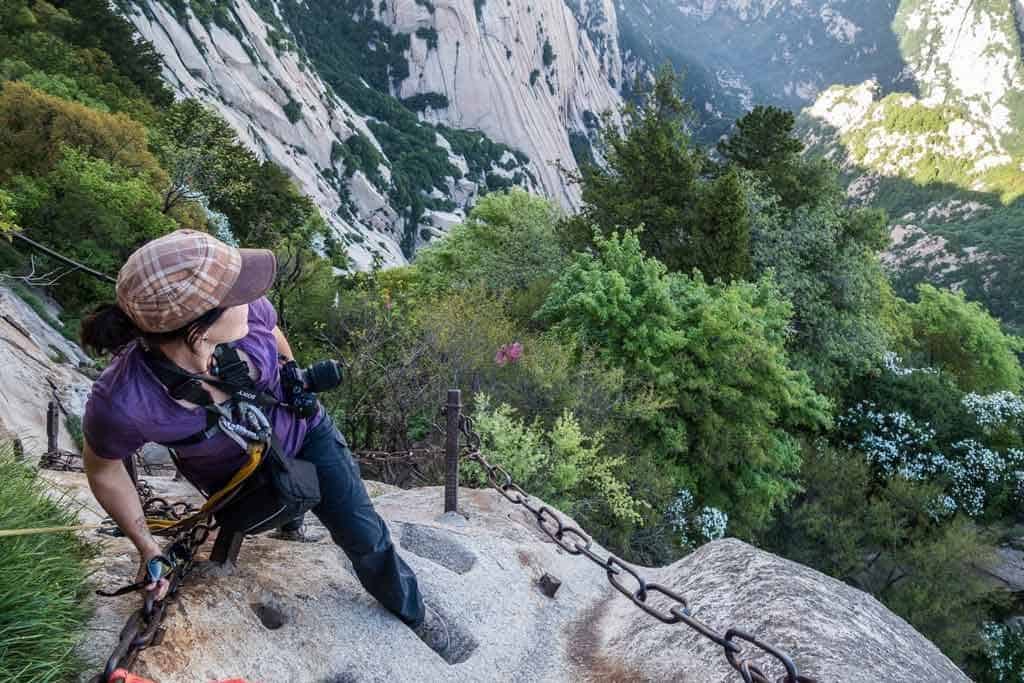
Budget for Travelling in China
China is a huge country and prices vary significantly depending on what region and what time of the year you’re visiting.
Since you’re probably interested in the range of prices of certain things you’ll definitely spend money on, we’ve decided to help.
Here’s a list of some essential expenses and their general cost range as you travel to metropolitan areas:
- Accommodation : $4 – $400+
- Food : $0.50 – $45+
- Drinks : $0.40 – $15
- Domestic/Local Transportation : $0.30 – $30
- Tours : $15 – $600+
When it comes to accommodation, the cheapest form is hostels.
In less touristy areas you can find mixed dorm beds from $4 USD per night.
Even in major cities, like Beijing and Shanghai, the prices start from $3 USD per night!
As for food, the best way to save money is to eat street food or visit a food court at a shopping mall.
The street food in China is not only cheap but also incredibly good. Even the wealthiest love to indulge in street food.
A filling meal from a street vendor would cost you up to $5 USD. But it’s usually less than that.
For transport costs, you can rent a bike, which is around $3 USD, depending on how much terrain you want to cover.
If you don’t have a budget for cultural activities, you’ll be relieved to know that there are many museums that don’t charge admission!
Flashpacker
There are a lot of mid-range accommodation options, from private rooms in hostels to private rooms in shared Airbnb and hotels.
Private rooms in hostels cost a little bit more than two beds in a mixed dorm room (around $8 USD per night) or a private room in an Airbnb (from $20 USD per night).
Mid-range hotel prices start from around $30 USD per night.
Eating out in local restaurants usually costs from $10-15 USD per meal.
The cost of an average alcoholic beverage in a bar would be around $8-10 USD.
Transport costs, such as taxi, could cost from $9 USD, of course depending on the time of the day (night fare is more expensive) and the distance you will cover.
But always ask for the price in advance before getting into the taxi!
Double rooms in a luxury hotel or a private home booked through Airbnb start from around 120$ USD per night.
Eating out at the most excellent restaurants (hotel restaurants or local ones) will cost you from $45 USD per meal.
There is an array of cultural activities available to all tastes and depending on your interest – whether it’d be visiting the Chinese national opera or the hottest night club – prices vary.
If you’re used to travelling in luxury through other countries, you can expect that China not only delivers the luxury to which you’re accustomed but also costs considerably lower when compared to other countries.
You could treat yourself to one of the most luxurious tours, such as a Zhujiajiao Water Village Tour from Shanghai.
Transportation In And Around China
China is a huge country and if you plan to travel around it – you’ll need some help.
Keep in mind that renting a car won’t be an option, since no international driver’s licence is valid in China!
Here are all the other ways to travel in cities and between them:
Chinese airlines are safe and comfortable.
There are over 1,200 routes and nearly 1,000 are domestic routes.
The most popular airports for domestic travel are in Shanghai, Guangzhou and Beijing.
Besides Macau and Hong Kong, there are over 200 airports in China that connect over a hundred internal cities and eighty foreign cities.
The most popular and reliable airlines are:
- Eastern Airlines
- Air China Limited
- Shandong Airlines
- Southern Airlines
- Shanghai Airlines
- Xiamen Airlines
- Shenzhen Airlines
- Sichuan Airlines
Public buses are generally crowded, but very affordable.
Try to avoid peak hours, as traffic jams occur in large and populous cities quite often.
The buses generally run from 6:30 in the morning to 7:30 in the evening.
In some cities they run through the night.
When you board the bus, at the front door there will be a coin box where you are expected to pay for your fare.
However, some buses have a ticket conductor that oftentimes charges according to how much distance you will cover.
The Intercity Long-Distance Bus
The intercity long-distance bus is another increasingly popular option attributed to the development and extension of highways.
All cities have coach stations which are located at the city’s railway station.
The long-distance buses operate between almost all Chinese cities.
The run time is usually from early morning to late in the evening, and for longer distances – there are fewer services throughout the day.
The buses usually have a toilet, TV, air-conditioning and some might even have a sleeping berth if it’s an overnight trip.
Mini-buses operate to try and alleviate the pressure of bus transportation.
The tickets are a bit higher in price and they’re determined by the distance you take.
Still, it is best to avoid peak hours which are from 7 am–9 am and 5 pm–7 pm.
Pay close attention to your belongings as pickpockets operate most during rush hour.
Tour buses usually feature a Chinese character ‘游’ in front of the bus number.
Tour buses are commonly seen in major Chinese cities where there are many famous highlights.
They have a predetermined scenic route and usually have a tour guide on board to share interesting bits of history and fun facts.
Trolleybus/Electric Buses
From 2010, trolleybuses have joined the public transit system in 14 Chinese cities.
All trolleybus systems in China hail from after the 1950s except in Shanghai.
Shanghai’s trolleybus system was opened in 1914 and is still operating – making it the oldest operating trolleybus system in the world.
Traveling by railway is the main means of transportation in China and its network is one of the biggest in the world.
The mileage of operating railways adds up to 124,000 kilometres and the number of passengers has surpassed 2.5 billion.
Out of the 124,000 kilometres of railway, the 22,000 kilometres are utilized by the high-speed railways.
The Chinese railway connects almost every place in China – even the most remote ones – and is the backbone of the Chinese traffic network.
The domestic trains are divided into five categories:
- High-speed/bullet trains
- Fast trains
- Tourist trains
- Express trains
- Normal trains
The High Speed/Bullet Train
This remarkable train, on average, operates fast as 250-300 km/h.
The price of tickets depends whether you want to buy first, second or business class as well as if they have a VIP category.
Some overnight trains offer soft and luxury soft sleeper options.
Many trains sell standing room tickets which cost the same as second class tickets.
The facilities are similar to those of an airplane.
The seats can be adjusted and you have use of a foldable table. Further, electrical sockets and meals and snack services are provided at a price.
This website will help with booking tickets and schedules.
The major cities have metro systems either already in operation, in planning stages or under construction.
The underground transit is developing at rapid speeds.
This is because one of the priorities to make China a greener country is to reduce the pollution of its cities and improve the quality of living.
Chinese metro systems are immaculate. They transfer large amounts of people, are very frequent and nearly always on time.
This contributes to diminishing the traffic jams and above ground transit.
The Shanghai Metro is the longest metro system in the world.
Taxi is a very convenient mode of transport and surprisingly not too expensive.
In major cities, all vehicles have a meter.
If you’re situated in a smaller town, ask at your hotel for a price estimate.
And if you’re thinking of covering a long distance, it’s possible to negotiate a deal.
Taxis are available at nearly all times and everywhere.
Chinese taxi drivers have a reputation of being very honourable. But it is always good practice to exercise caution.
China has over 110 thousand kilometres of navigable streams, lakes, rivers and canals.
The Grand Canal is 1794 kilometres long. It connects seventeen cities (from Beijing to Hangzhou) and five rivers (Huaihe, Qintang, Haihe, Yangtze and Huanghe.)
Since so many railways and highways have been built in recent years, waterway transport has diminished.
But there are still ways to move around the country via waterway – especially the Yangtze cruise (Baidi to Yichang), Beijing-Hangzhou Grand Canal and the Li River cruise (Guilin – Yangshuo).
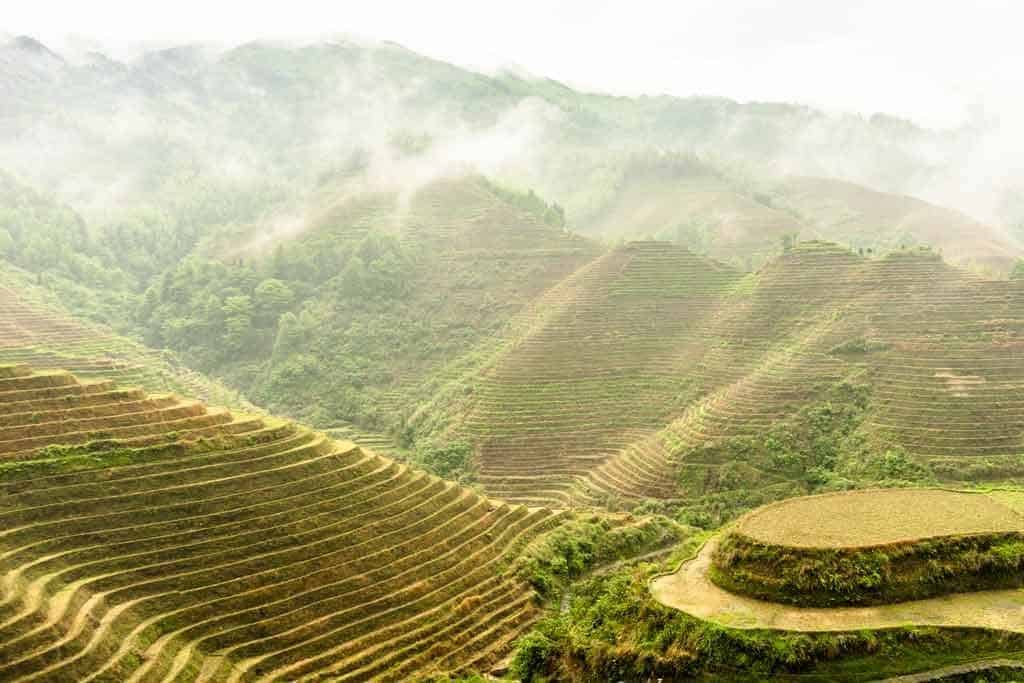
Accommodation in China
There is a lot of variety and options when it comes to accommodation in China.
On one hand, you can stay in a very cheap hostel (which doesn’t mean that it lacks quality!).
But China is also full of luxurious hotels and villas.
When picking a place to stay, you should be aware of the fact that, in the Chinese language, there are different words for hotel and they indicate the status of the place.
- Dajiudian – “Big wine shop” – luxury accommodation
- Shan Zhuang – “Mountain resort” – accommodation in the countryside
- Binguan & fandian – a general term for a hotel and can mean anything from an average hotel to a smart hotel.
- Kèzhàn – Basic guesthouse
- Zhāodàisuŏ – Hostel
- Lǚguăn/ lǚshè – inn
- Zhùsù – accommodation
China is one of the best places in the world when it comes to the number of affordable accommodation options!
The network of hostels in China is ever-expanding and most of them are affiliated with the International Youth Hostel Association.
They tend to have clean and modern facilities, nicely designed social spaces, friendly and English speaking staff and fast Wi-Fi.
Getting around China is challenging if you don’t speak the language, but the staff from hostels usually are willing to help you on your way.
They will gladly write the places that you need to visit or a couple of useful phrases to ease day to day communication.
Also, even booking a private room in a hostel is considerably cheaper when compared to European countries.
The quality of hostels is good and the prices tend to be very low.
If you’re in Shanghai, staying at the Mingtown Nanjing Road Youth Hostel will cost around $9 per night.
The dorms have 6 beds and male and female dorms are separate.
A deluxe private room in Beijing’s Chinese Box Courtyard Hostel costs around $50 and breakfast is included in the price.
The hostel also has a couple of free thematic nights, such as the free vegetarian dumpling party or the professional and traditional Chinese Kongfu tea course!
When it comes to cheap hotels, you will usually find these located near bus or train stations.
Chinese locals usually rent beds and not rooms, so doubling up with strangers isn’t uncommon, especially as a means of saving money.
But foreigners are not allowed to share a room with Chinese people.
Instead, they have to rent a whole room. But usually, you will be able to negotiate a good price.
If you’re an avid camper, just know that it is only possible to camp in Hong Kong.
There are free campsites all over the New Territories and in the beautiful nature of Qinghai, Gansu, Inner Mongolia, Xinjiang, Yunnan, Sichuan and Tibet.
But just know that to camp, you would have to obtain a government-issued permit.
Hong Kong, Macau and few southwestern provinces have a number of privately owned guesthouses.
They range in size and quality, from tents to family mansions.
A double room in one of these guesthouses is usually cheaper than in a hotel.
There is at least one mid-range hotel in every town in China.
But the quality of the hotel is hard to predict from the price itself.
An old hotel with faulty bathrooms and washed out sheets could charge you the same as a newly opened establishment.
The general rule is to always try to book the newer place.
In more isolated places, you should be able to find a double room for $20 USD per night. But in bigger cities from $40 USD per night.
One thing you can always rely on when staying in a Chinese hotel is that you will be left with a pair of plastic or paper slippers and a vacuum flask of hot water that can be refilled by the staff!
If you’re in Chengdu, the Chengdu Rising Butterfly Hotel is one of the best options.
Either a business twin room or a queen room costs a little over $50. And in some cases, breakfast is included in the price.
The Holiday Inn Express Yizhuang in Beijing will be a great experience.
The price of a standard room with free breakfast for two is usually around $70. But you can often find discounts and pay around $40!
Luxury hotels are situated in larger cities and offer the same level of service as any four or five-star hotel anywhere else in the world.
They have the same facilities that are to be expected: gyms, swimming pools and business centers.
The price of a double room will be from $120 upwards and an additional 15% service charge will be added.
The Niccolo Chengdu hotel is one of the most popular of its kind.
The very luxurious hotel will offer an incredible experience that will satisfy any type of guest – all for the price of $150 per night!
The Upper House in Hong Kong is the epitome of glamour and it’s especially great for business travel.
It has the largest hotel rooms in Hong Kong, along with ocean views and an amazing location.
The prices start at around $400, but the largest penthouse costs over $2000!
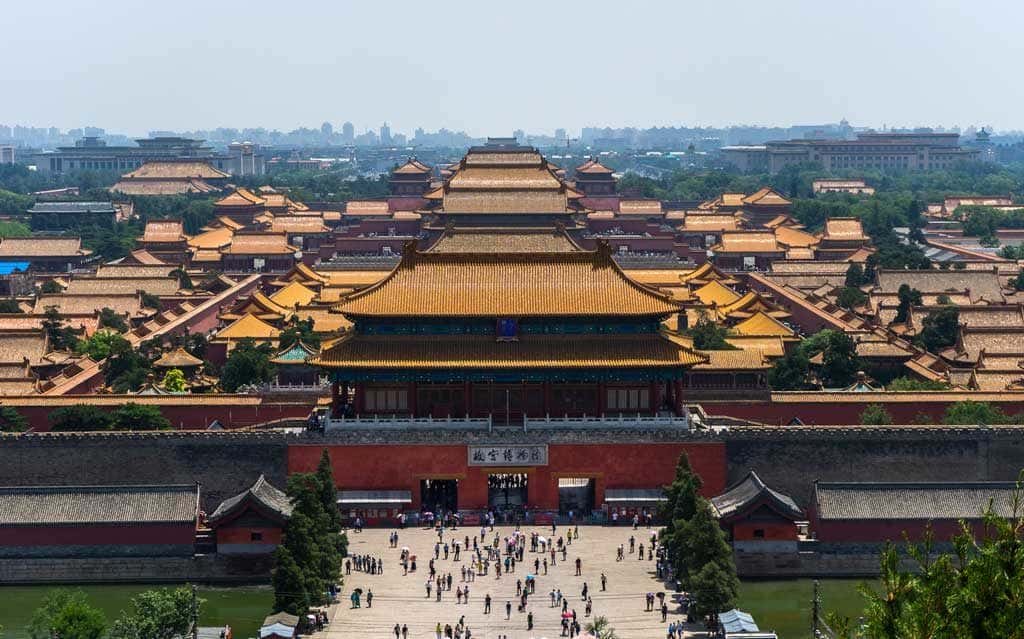
Safety While Travelling in China
China is regarded as a pretty safe and non-violent country.
If there is unrest it’s typically contained within certain areas.
Petty Crime
The biggest dangers are petty crimes such as pickpocketing – which with administering precaution is preventable.
Travellers are targets for pickpockets and thieves.
These thieves usually operate near train and bus stations, hard-seat train carriages, intercity but also long-distance buses (especially take precaution if you’re boarding the sleeper bus) and public toilets.
It is not advisable for women to travel solo.
Always check your restaurant bill to make sure you are not being charged extra for hidden expenses and avoid paying by credit card so you can make sure they won’t add any extra charges.
Safety in Taxis
The most widespread scam are the taxi scams at the Beijing Airport.
Always queue at the taxi rank and insist that the driver uses his meter.
Avoid pedicabs and motorized three-wheelers. Many times these drivers will agree on an initially negotiated price and then after you arrive at the destination they insist on a different sum, which sometimes can even be 10x the initial agreement.
Traffic Accidents
One of the dangers when traveling in China are the high numbers of traffic accidents.
The World Health Organization (WHO) made an estimate that there are approximately 600 vehicular deaths per day.
When taking a long-distance bus you’ll find that there are no seatbelts. Even taxis outside of major cities oftentimes don’t have rear seatbelts fitted.
The biggest danger is crossing the street no matter how ridiculous it sounds.
In China there are a large number of electric cars and hoverboards that run silently and you probably wouldn’t even hear them until it’s too late.
The red lights in China don’t mean much for Chinese drivers as they often run through them. So even the green figure signaling that it’s safe to cross doesn’t always mean that.
Medical System In China
The healthcare system in China is a mix of public and private services.
Major cities such as Beijing and Shanghai have hospitals with world-class care and specialist services.
Rural regions sometimes lack even the very basic healthcare services.
Sometimes healthcare options are limited to only types of traditional medicine such as acupressure, herbal remedies and acupuncture.
You should always travel with travel insurance ! A comprehensive travel medical insurance is mandatory for visitors.
If you are treated at a private hospital the price difference between a private and a public hospital is significant.
If you’re suffering serious health issues and at the time of medical assistance you’re in one of the more remote areas, you will have to organize an expensive airlift.
Preparation is key to easy and safe travels.
Make sure that your policy includes medical evacuation, translation service and private hospitals to ensure maximum comfort.
Packing List For Travel To China
While there is always a variety of packing options depending on the season and length of travel, these are the travel essentials we recommend for your trip to China.
Note: This list is intended for trips during spring and summer.
Clothing And Wardrobe For Men And Women
- 3x Comfortable, long pants
- 5x Short-sleeved shirts
- 2x Long-sleeved shirts
- 1x Wool sweater
- 1x Windbreaker/rain jacket
- 1x Fleece jacket
- 1x Flip flops
- 1x Adventure sandals
- 1x Waterproof shoes
- 1x Hiking shoes
- Undergarments
- Breathable socks
Miscellaneous Items
- Extra SD memory card
- A cellphone (make sure to have an offline Translator App, phrasebook, copies of needed travel documents and ids, currency converter, copy of your insurance card/policy and emergency contact info)
- Portable battery
- Power adapter
- Sunhat with a wide brim and a chin strap
- Insect repellent
- Toilet paper
- Hand sanitizer
- Guide book and a map
- Pocket knife
- Book with everyday phrases in Chinese
- Reusable water bottle
Check Out Our China Travel Blogs
Surviving the world’s most dangerous hike – mt huashan, the 10 best things to do in hangzhou, china (2024 guide), 26 awesome things to do in beijing, china (2024 guide), the perfect 3 days in taipei itinerary [2024 guide], 3 days in chengdu, china – the perfect itinerary, tianducheng – china’s strange city of paris, mount cangshan – hiking high in dali, falling in love with shaxi, china, the ‘real’ china – the ancient village of chengyang, the tibetan overland route from shangri la to chengdu, the gruesome world of harbin’s siberian tiger park, enchanting beauty and sustainability in yangshuo, china.
Tour Guides in China — a Guide to Chinese Guides!
China has tens of thousands of trained and licensed tour guides. Some of them may also be teachers, librarians, etc., working as guides part time, but all of them must pass a strict examination to be qualified to work as a tour guide. Hiring a tour guide can cost varying amounts, but you can expect to be paying $100–$200 per day.
Classes of Guides
China's tour guides are categorized into three classes . Class 1 can work directly with foreign tour operators. Tour guides working at this class are usually more experienced. English language is most often their primary foreign language. They work according to pre-arranged schedules arranged by the employer with the client.
If you're visiting less-developed areas , such as along the Silk Road, in Tibet, or in parts of Sichuan and Yunnan you will want an experienced guide with a good level of spoken English. However, in such areas, a guide with good English is more difficut to find than in Beijing or Shanghai. Zhangjiajie , for example, is becoming a very popular destination, but is another place where tour guides' English may not meet your needs.
Tour Guide or Not Tour Guide? (Do I Really Need a guide?)
Yes! Your trip to China should be a trip of a lifetime, so why risk any chance of disappointment? You may want to contrast Traveling Independently in China — How It Differs from in the West .
Travelers who journey with China Highlights will always get a skilled, resourceful, experienced, and sympathetic guide, with the comprehensive local knowledge you need to ensure you get the most out of your trip.
Group Guide or Private Guide?
That is the question. But perhaps the real question is: "How do I maximise the potential of my time, considering the money I'm going to spend on what should be a trip of a lifetime?" We hope we can help you answer this "sixty-four-thousand dollar question" here.
If you're active, walk faster than average, or just get bored easily, you may find yourself frustrated with a group tour.
Conversely, if you have any disability, need to walk slower, eat slower, visit the toilet more, or sleep later, then keeping up with a group can be an ordeal. You may also want to stay longer in a particular place to go deeper and discover more.
On a private tour you can go at your own pace.

More of What You Want — Less of What You Don't!
Tour guides conducting package tours have to treat the group as a 'herd'. This means you have to compromise for the sake of the group. With a group guide and tour you just have to take what is in the package. Your needs and requirements are secondary (if that!) to those of the group.
What if you're not feeling well and want an easier day, plainer food, or you'd like to stay longer for more photos at a view point? On a group tour you must plough on or get left behind and miss out on what you paid for.
On a private tour with a resourceful and experienced local private guide, your schedule can be adjusted to suit your circumstances and needs, so you make the best of your time and enjoy your China experience more.
Private means your choices count.
With a private tour, your guide is focused specifically on you and only you. You choose every aspect of your trip. That means a trip you can really look forward to and look back upon as time and money well spent.
What a Good Guide Should Be (What a China Highlights Guide Is)
- A security guard to keep you safe — their primary objective is keeping you safe and making sure you're comfortable and 'looked-after'.
- Your own barometer! Resourceful flexible and adaptable - to your requirements — Your guide may change an itinerary around if the weather is not suitable for an attraction. For example, if it's raining in the morning, your guide may move your museum visit forward, allowing you to do your outdoors thing later during better weather.
- Your translator and interpreter
- Your Michelin Gourmet guide!
- Your mobile database — Each guide has in-depth local knowledge as well as at least 4 years' training.
- Your personal fixer — There to make your trip as great and comfortable as possible.
- A treasure hunter! You'll see and experience things with a good locally based China Highlights guide that you'll miss with group tours and guides.
" In general, our guides in China gave us a more personal feeling. By the end of our time with them, it felt like we were just spending time with friends, rather than being a client. This was especially true with LeLe in Guilin, David in Zhangjiajie and Candy in Shanghai and Suzhou. We really missed them after we left and kept in touch over WeChat. We really got the sense that they were there to make sure our needs and safety were met, even in the evenings. In some of the locations, we had them book evening shows and they were more than willing to make sure we got to the venue and if need be, would even wait until after the show to make sure we could get back to our hotel. Since we are somewhat experienced travelers, we tended to do some exploring on our own at night and they made sure we knew our way around, whether it be using the subways or wandering the night markets."
— Victor and Mary Ann Cognato, China Highlights customers
Touring China with Our Guides
A China Highlights guide is there to ensure your satisfaction.
Our expertise is focused and in-depth — China is all we do.
A guide who speaks your nominated language will meet you at the airport, deliver you to your hotel and accompany you on your tour in that city. You will usually have a different guide in each city with in-depth knowledge of the area.
- 13-Day A Broad Taste of China
- 9-Day Beyond the Golden Triangle
- 2-Week China Essence and Panda Tour
- 14-Day China Natural Wonders Discovery
- 15 Best Places to Visit in China (2024)
- Best (& Worst) Times to Visit China, Travel Tips (2024/2025)
- How to Plan a 10-Day Itinerary in China (Best 5 Options)
- 8 Days in China: Top 15 Tours and Itineraries (2024/2025)
- China Weather in January 2024: Enjoy Less-Crowded Traveling
- China Weather in February 2024: Places to Go, Costs, and Crowds
- China Weather in March 2024: Destinations, Crowds, and Costs
- China Weather in April 2024: Where to Go (Smart Pre-Season Pick)
- China Weather in May 2024: Where to Go, Crowds, and Costs
- China Weather in June 2024: How to Benefit from the Rainy Season
- China Weather in July 2024: How to Avoid Heat and Crowds
- China Weather in August 2024: Weather Tips & Where to Go
- China Weather in September 2024: Weather Tips & Where to Go
- China Weather in October 2024: Where to Go, Crowds, and Costs
- China Weather in November 2024: Places to Go & Crowds
- China Weather in December 2024: Places to Go and Crowds
Get Inspired with Some Popular Itineraries
More travel ideas and inspiration, sign up to our newsletter.
Be the first to receive exciting updates, exclusive promotions, and valuable travel tips from our team of experts.
Why China Highlights
Where can we take you today.
- Southeast Asia
- Japan, South Korea
- India, Nepal, Bhutan, and Sri lanka
- Central Asia
- Middle East
- African Safari
- Travel Agents
- Loyalty & Referral Program
- Privacy Policy
Address: Building 6, Chuangyi Business Park, 70 Qilidian Road, Guilin, Guangxi, 541004, China
Nomadic Matt's Travel Site
Travel Better, Cheaper, Longer
China Travel Guide
Last Updated: September 1, 2023

China is a country filled with micro-cultures, languages, cuisines, and ethnicities. Rapid change has attracted curious people from around the globe and there is a thriving expat scene for anyone looking to teach overseas.
While I dislike the pollution of many of the big cities, the countryside, the food, people, and the history you’ll discover here will leave you in awe and forever changed. This is a country with layers where everything is filled with meaning and history.
This travel guide to China can help you plan your visit to this gigantic country (there’s over a billion people here covering 9.5 million square kilometers) with advice on things to do, how to get around, stay safe, save money, and much, much more!
Table of Contents
- Things to See and Do
- Typical Costs
- Suggested Budget
- Money Saving Tips
- Where To Stay
- How to Get Around
- How to Stay Safe
- Best Places to Book Your Trip
- Related Blogs on China
Click Here for City Guides
Top 5 things to see and do in china.
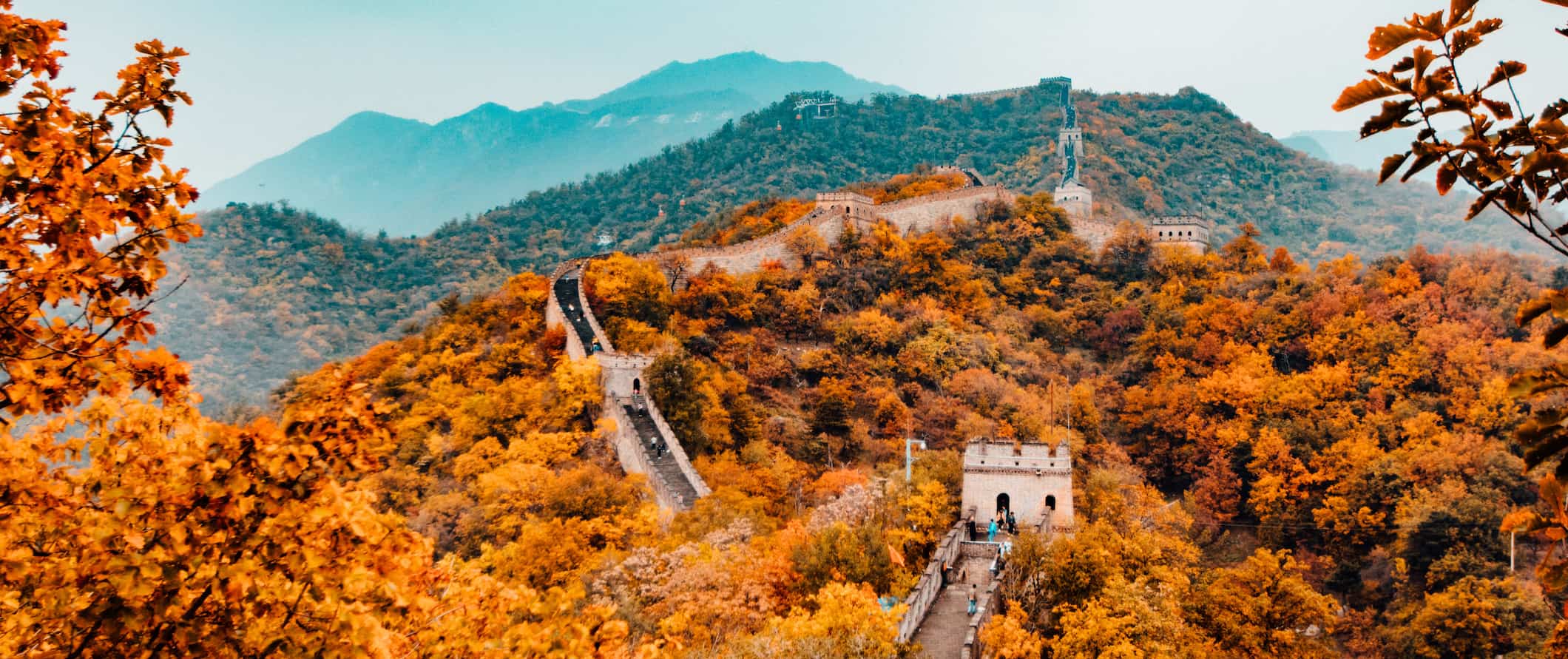
1. Visit Hong Kong
Hong Kong is bustling metropolis that combines high rise buildings with traditional street markets and temples. You have a large expat population, good shopping, fantastic nightlife, and delicious food. It’s one of my favorite cities in the world and I never get tired of visiting!
2. Explore Shanghai
One of China’s largest, busiest, and most visited cities, Shanghai is like visiting the future — fast trains, lights everywhere, efficient organization, and a cosmopolitan vibe. I love Shanghai. To get a sense of historical China, head to the Old City and see the YuYuan Gardens. For some of the best shopping in China, head to Nanjing Road.
3. Wander Beijing
Visit Tian’anmen Square, the Forbidden City, countless shopping malls, the Temple of Heaven, Summer Palace, and of course, the Great Wall. There’s nothing like Beijing in the world, and, though horribly polluted and with awful air quality, it’s still a city you have to visit in order to understand modern China and its dynamism.
4. The Great Wall of China
Stretching over 21,000 kilometers, the Great Wall offers both busy tourist sections as well as secluded ruins (you can even camp beside it in some areas). If you’re on a budget, you can take the public bus to the wall near Beijing. The bus is 12 CNY and admission to the wall is 40 CNY (45 CNY in the summer).
5. See Xi’An
Xi’an is one of the ancient capitals of China and home to the famed Terracotta Army (which is over 2,000 years old), city wall, and architecture of the Muslim quarters. Those three things are pretty much why everyone comes here but there’s also an incredible hike on Mount Hua if you’re looking for adventure.
Other Things to See and Do in China
1. tian’anmen square.
You’ve no doubt seen it in films and on TV, but it is hard to get an idea of the sheer size of this square until you’re standing square in the middle of it. There’s plenty to see here including the Tiananmen Tower, the Great Hall of the People, the People’s Heroes Monument, the National Museum and Mao Zedong’s mausoleum. While you are allowed to take photos in the square itself, you cannot use your camera in the mausoleum.
2. Gorge on food
China is a food lover’s paradise. Eating here will certainly put your take-out back home into perspective. In such a huge country, it’s no surprise that different areas have different culinary delights. It’s entirely possible to enjoy the four styles of Chinese cooking (Cantonese, Beijing, Shanghai, and Sichuan) while on your trip. For spicy food, head to Sichuan or Hunnan in Central China (be sure to try the hot pot while you’re there).
You’ll find more salty items like dried meats and pickled vegetables in the north (where fresh produce is less common) while in cities like Beijing, Hong Kong, and Shanghai you can pretty much find everything!
There are plenty of options for vegetarians in China as well, and even vegans can get by without too much difficulty.
3. Cruise the Li River
For a true sense of natural beauty, cruise down the Li River. The river is 272 miles long and has dozens of places to explore along the way. Some of the best photography spots can be found in Xiaolong, Laozhai Hill, and the karst mountains near Guilin. For tours, prices start at 500 CNY per person, depending on how long (or luxurious) of a cruise you want.
4. Visit the Forbidden City
This famous attraction in Beijing was the imperial palace from the time of the Ming Dynasty to the Qing Dynasty (1420-1912 CE). The “city” covers over 175 acres and is a UNESCO World Heritage Site, welcoming over 16 million visitors each year. Today, the Palace Museum holds artifacts from both dynasties and is a great place to learn about China’s history. The buildings, which cover over 180 acres, have been heavily renovated over the years but it’s still an epic complex worth visiting.
5. Travel (part of) the Silk Road
Dating back over 2,000 years, this unofficial route is a must-see for visitors looking to get off the main tourist trail. There is no “official” road to follow, but you can trace your way along the traditional route as far and wide as you’d like (the Silk Road originally spanned from Chang’an to Romend, Italy). Its total length was over 3,800 kilometers (2,400 miles), half of which was within Chinese territory. Be sure to see the Mogao Caves in Dunhuang, the ancient city of Turpan, and the Rainbow Mountains near Zhangye.
6. Explore Tibet
Also known as “the Roof of the World”, this area is perfect for adventurous travelers that are looking for unique attraction. Explore the snowy mountains, exotic customs, and Buddhism. Tibet has had tumultuous past, so during your visit, it’s wise not to bring up the Dali Lama. The region was annexed by China in the 1950s, forcing the Dalai Lama and his government into exile. Some 400,000 Tibetans were killed directly or indirectly by the occupation, with other estimates placing that number over 1 million. Avoid talking about the history and politics of the region as is it understandably a very sensitive subject for both sides. You’ll need a special permit to visit the region as well.
7. Potala Palace
This Tibetan palace was home to the Dalai Lamas up until 1959, when he was forced to flee or be killed. Established as a holy site in the 7th century, the many halls, temples, and courtyards have been constructed from wood and stone. The current building, which is now a UNESCO World Heritage Site, dates to the 17th-century and has poured copper in its foundation to stabilize it against earthquakes.
8. Take in the Karst mountains
Illustrated on the back of the 20 yuan banknote, these mountains are a stunning sight to see in person. They’re huge! You can take a boat trip down the Li River, and enjoy the breathtaking views of the mountains. You can also rent a bicycle to explore the quieter backroads and take in the picturesque landscape. Prices begin around 20 CNY for a half day. Guilin is a great hopping-off place for this.
9. The Mogao Grottos of Dunhuang
Also known as the Thousand Buddha Caves, these grottos are home to the largest, best-preserved, and richest Buddhist art in the world—the first cave was carved here in 366 AD. There are almost 500 individual temples here and it’s one of the main stops on the Silk Road if you are tracing the footsteps of Marco Polo.
10. Take a free walking tour
All of the major cities in the country offer various types of walking tours, many of which are free and last a few hours. If you want to learn about the history of China’s major cities, this is a great way to start! Whenever I land in a new city, this is how I kick off my trip as it helps me get the lay of the land. Free walking tours are available in Beijing, Shanghai, Hong Kong, Xi’an, and many other cities around the country. Just Google “free walking tour in X” to find the companies that are available during your visit. Just be sure to tip your guide at the end (that’s how they get paid!).
11. Let loose in Macau
Macau is considered the “Las Vegas of Asia” and is a fun destination for anyone looking to splash out. Macau started as a Portuguese colony and remained one for over 300 years so the city has an interesting mix of Chinese and Portuguese cultures. Like Hong Kong, Macau is a “Special Administrative Region” which means it has a lot of autonomy from the mainland government It is also home to the highest bungee jump in the world, boasting a plunge of a whopping 233 meters (764 ft)! I don’t love the city as much as I do Hong Kong but you’ll find a lot of good food and architecture here. If you’re not here to gamble, you only really need one night here!
12. Visit the Pandas in Chengdu
Pandas are an endangered species and rare to see in the wild. If you want to get your fix while in China, head to the Panda Research Base in Chengdu. If you get there early you can beat the crowds and watch the pandas relax, eat, and sleep (that’s all they really do — but it’s still worth seeing!). Admission is 55 CNY per person.
13. Take a class
Calligraphy classes, cooking classes, tea ceremonies — you can find all sorts of amazing, culturally-enriching classes and lessons in all of the major cities in China. Some last an hour, some last multiple days, but no matter what you’re interested in you can find a class to teach you something new! Expect to pay between 300-900 CNY for a calligraphy class while cooking classes start at around 300 CNY per person. You’ll find the most options in Beijing, Shanghai, and Hong Kong. Viator.com is a great resource for finding classes near you. You can also use cookly.me to find cooking classes and prices all around the country as well.
China Travel Costs
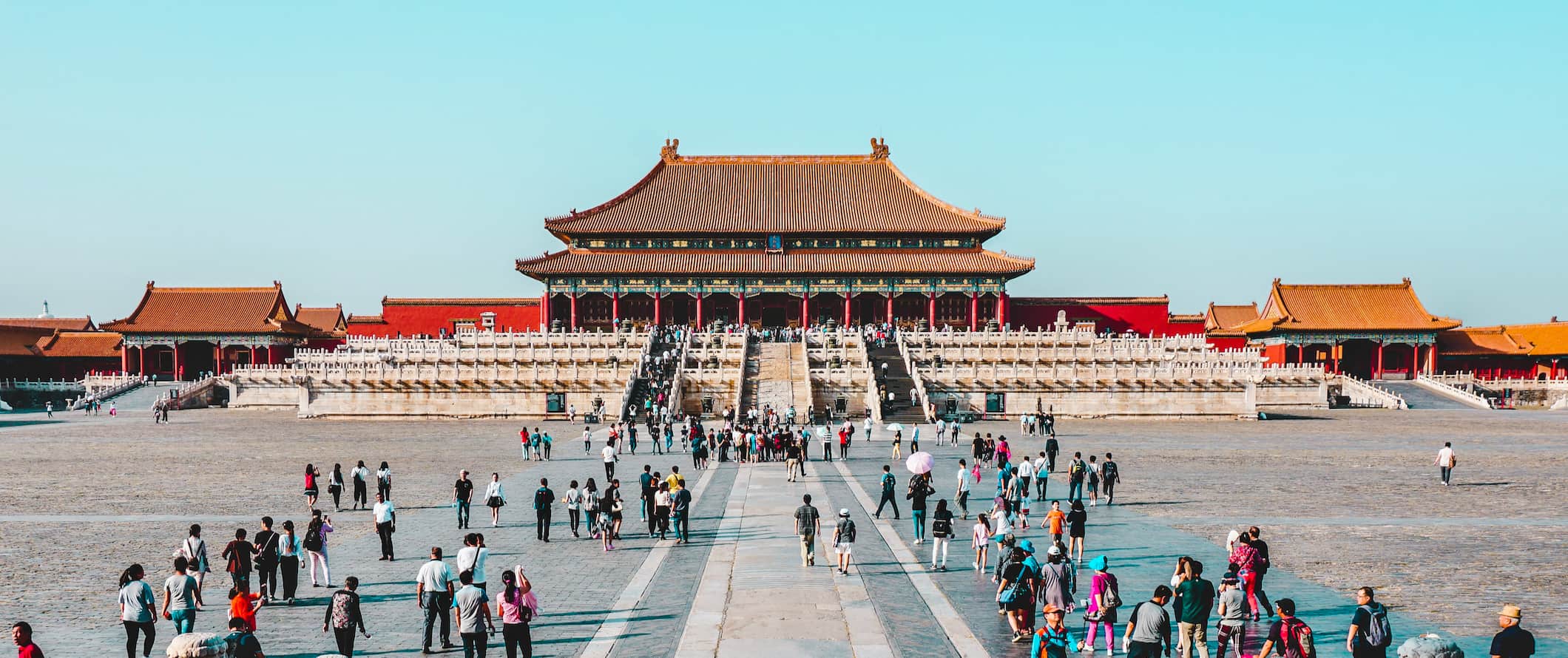
Accommodation – Prices start at around 30 CNY for an 8-10 bed dorm in many of the smaller cities. Expect to pay closer to 85 CNY in Hong Kong and Beijing. For a private room, prices begin around 110 CNY though expect to pay almost double that in the larger cities. Hostels here are generally well equipped and have free Wi-Fi, drinking water, lockers, and even warm blankets in the winter! Hostels in cities will have western-style toilets, though in more remote parts of the country you may find squat toilets more common.
Budget hotels begin around 75 CNY per night for basic accommodations, with higher prices in Hong Kong. Budget hotels will usually include heat or AC, your own bathroom, a kettle, and TV (though you’ll only get Chinese stations). Keep in mind that any hotels offering free breakfast will likely be serving a Chinese breakfast (dumplings, rice congee, vegetables, etc.).
Airbnb is plentiful in China and can be found in all the major cities though it’s much less common in rural areas. Prices range from 175-750 CNY depending on the city and the type of apartment.
There are plenty of campgrounds around the country. Expect to pay around 20 CNY per night for a basic plot. Wild camping is a grey area; it’s both legal and illegal at the same time to allow local authorities the final say. I would avoid wild camping and stick to official campgrounds as to avoid any problems.
Food – Food in China is cheap. I mean, really cheap. A meal from a street vendor usually goes for around 7-14 CNY. For this, you might get noodles, rice, pork buns, or soup. A full meal in a sit-down restaurant will cost between 15-54 CNY plus the fee for a bowl of rice and clean bowls (yes, these cost extra!), which is often around 4 CNY. If you stick to the local food, you’ll find it hard to go broke. You could spend less than 70 CNY for an entire day’s worth of food.
In western China, southwestern China, and the interior, food is much cheaper than in the big cities and you can eat for under 35 CNY per day — about half the costs of the big cities as long as you stick to street food/local restaurants.
For Western food, you can expect to pay much higher prices for food that will be a disappointment compared to home — especially if you’re outside of the more Westernized cities like Hong Kong. A western-style sandwich or fast food meal can run about 40 CNY and a cup of coffee can be similarly-priced to back home — sometimes more!
Vegetarians and even vegans will be able to get by relatively easily in the cities with a little planning as China’s history with Buddhism has made the country quite veg-friendly.
Since food is so cheap, there’s no need to self-cater or cook your own meals. You are better off eating the street food and at the restaurants. Moreover, many hostels don’t have kitchen facilities for you to use even if you did go grocery shopping. Therefore, self-catering is not something I recommend. The food is cheap and plentiful, so enjoy it! If you will be buying your own groceries, expect to spend between 250-400 CNY depending on your diet.
Activities – In general, sights are affordable in China — even popular attractions such as the Great Wall or the Forbidden City are under 68 CNY. While the Great Wall never kept out invaders, it’s beautiful and is only 45 CNY, the Forbidden City is 60 CNY (40 CNY if you visit between November and March). Smaller temples, activities, and sights are much more reasonably priced and cost under 20 CNY.
While attractions and temples are less than 70 CNY, prices for hikes and outdoor activities tend to be more expensive, often costing around 200 CNY. For example, a trip to the Jade Dragon Snow Mountain costs around 200 CNY, a visit to the Jiuzhai Valley is also 200 CNY (as much as 2,000 CNY if you want to go as part of a tour) and a three-day pass to the Wuyi Mountains in Fujian province is 140 CNY while admission to the Yellow Mountains in Anhui province is 190 CNY. You’ll still need to pay for transportation to these places as well.
Backpacking China Suggested Budgets
How much does it cost to visit China? Here are some suggested budgets you can use to help you plan, based on your individual style of traveling. Keep in mind that if you’re staying in cities like Hong Kong, Beijing, or Shanghai you should expect to spend at least 20% more.
On a backpacker’s budget, you should plan to spend between 215-285 ($30-50 USD) per day. This is a suggested budget assuming you’re staying in a hostel dorm, eating fast food occasionally but mainly cooking your own meals, using public transportation, and participating in basic activities like visiting museums.
On a mid-range budget of 645-1,000 CNY ($90-140 USD) per day, you can stay in budget hotels, take buses between destinations, eat fast food, and do more excursions.
For a luxury budget of 1,500 CNY ($210 USD) per day, you can afford to stay in nice hotels, take the high-speed train, do some guided tours, and eat out for every meal.
You can use the chart below to get some idea of how much you need to budget daily, depending on your travel style. Keep in mind these are daily averages — some days you’ll spend more, some days you’ll spend less (you might spend less every day). We just want to give you a general idea of how to make your budget. Prices are in USD.
China Travel Guide: Money-Saving Tips
Given the size of China as well as its general affordability thanks to cheap food and accommodation, there are plenty of ways to save money when you visit here. Here are some of the best ways to save money during your next trip:
- Use sleeper trains – Use sleeper trains (doorless compartments with bunks) to travel overnight since distances between cities can be quite large. Spending a night on the train will save you paying an extra night of accommodation. Lower bunks are less expensive, so purchase a few days in advance to take advantage of these savings. Some stations have ticket offices for foreigners if you need help navigating your options.
- Ask for Xiao Pan – If eating alone, ask for “xiao pan”. These are small portions and work out at 70% of the size and price of a normal dish.
- Hard Seats – Travel on the “hard seats” on trains or buses. These are the cheapest and most basic seats but are not “hard” as the name would lead you to believe (they’re just regular seats).
- Take a walking tour – Free walking tours are available in most Chinese cities. They generally last a couple of hours and are a great way to get the lay of the land and learn some of the local history.
- Avoid Golden Week – Golden Week is the busiest holiday of the year and is a time when the entire country is off. Held at the start of October, prices will rise, transportation is booked out weeks in advance, and the large cities are essentially gridlocked. Avoid visiting during this time. (Or, at the very least, avoid the big cities!)
- Stick to public transportation – You can get pretty much anywhere in all the major cities by bus or subway — and it’s super affordable. Do as the locals do if you want to save money.
- Buy water jugs – Instead of buying bottled water every day (as the tap water is not potable), bring a reusable water bottle and buy the biggest jugs you can find. They are only around 15 CNY and will last weeks. If you’re not staying that long, get your fellow travelers to chip in. You’ll save money and prevent more single-use plastic from ending up in a landfill. Conversely, bring a LifeStraw or SteriPen to purify your own water.
Where To Stay in China
Hostels are common all across China. Here are my recommended places to stay in the country:
- Hong Kong Hostel (Hong Kong)
- Kelly’s Courtyard (Beijing)
How to Get Around China

While most cities in China are great to discover on foot, the pollution can be quite hard on the body for extended periods. Be sure to check the air quality every morning before heading out.
Bus – Buses are generally cheaper than trains when it comes to intercity travel so they are your best bet for short distances (anything under 8-10 hours). For example, the 9-hour ride from Beijing to Anshan is around 220 CNY while the train is between going to be at least 350 CNY (and the train only saves you 90 minutes). The two-hour bus ride from Beijing to Tianjin is around 80 CNY while the trip from Shanghai to Hangzhou is 3 hours and costs around 120 CY.
Train – For long-distance travel around the country, trains are an affordable and often unique choice. On a high-speed train, the ticket from Beijing to Shanghai is around 555 CNY for 2nd class, around 935 CNY for 1st class, and around 1,800 CNY for a VIP seat. The journey takes around 4.5 hours.
For the full-day train that takes between 14-22 hours, a soft sleeper ticket is 525 CNY while a superior sleeper is 880 CNY. You can also get a regular hard sleeper seat for just 180 CNY but 22 hours in a seat is asking a lot!
The 5-6 journey ride from Beijing to Xi’an will cost 515 CNY for a second-class seat, 825 CNY for a first-class seat, and 1,630 CNY for a VIP ticket.
For overnight trains, keep in mind that the lower bunk is usually cheaper as it is closer to the noise. Top bunks will be more expensive, though they occasionally have very little space to offer (even though you pay more); it is not uncommon to be unable to sit all the way up. But you do get more privacy, which is worth it in my opinion!
Flying – There are plenty of regional carriers in China when it comes to flights. In fact, there are over 30 domestic airlines in the country! Some of the larger ones are Air China, China Eastern, China Southern, and Southwest Airlines. Just keep in mind that many flights rarely leave on time, so be mindful of your connections when booking!
Round-trip flights from Beijing to Shanghai can cost as little as 1,150 CNY for the two-hour journey.
From Beijing to Hong Kong will cost at least 900 CNY and take just under four hours. Xi’an to Shanghai will cost at least 950 CNY and take just over two hours. Beijing to Taipei will cost around 1,600 CNY and take just over three hours.
Car Rental – China does not recognize the International Driving Permit, making it virtually impossible to rent a car here unless you apply for a Chinese license. I don’t advise renting a car here.
When to Go to China
Since China is such a large country, climate and temperature change drastically from region to region. Sub-tropical Hong Kong is going to have much different weather than the steppes of Inner Mongolia or the mountain ranges of Tibet and Western China.
Summers in China (June-August) is the peak time to visit, though it also the hottest time. Temperatures will soar into the 30s (87-92 F) and can get quite humid. The pollution and air quality can also be ongoing concerns during this time. Expect inflated prices and larger crowds during these months.
September-October is a great time to visit China, as long as you can dodge the hectic Golden Week holiday in early October. The weather will cool to just under 20C (68 F), which is much more pleasant for hiking and exploring.
Traveling to China in the winter is rare, unless you’re heading to Hong Kong where the weather is still pleasant at 20C (68 F). Places like the Great Wall are occasionally closed due to weather, and regions like Tibet can drop to -13 C (9F) overnight. That being said, China has a fun winter festival called the Harbin Ice and Snow Festival where you’ll find huge, record-breaking ice sculptures.
How to Stay Safe in China
China is quite safe for travelers owing to its heavy crack down on crime and the fact that it is a full-on surveillance state. However, there are still a few things you’ll want to keep in mind to stay safe during your visit.
For starters, watch what you eat. Sanitation standards are not exactly the most stringent here, so always use hand sanitizer before you eat and make sure you only go to restaurants that appear clean. Street food — while delicious — can also cause some upset so be prepared. You may need some time to adjust to the local cuisine upon arrival.
Petty theft is rare, though you should still take precautions. Don’t flash your valuables or leave them in unsecured pockets. Most petty thefts occur when travelers don’t pay attention to their things. Don’t be one of those travelers!
As a tourist, you’ll also likely get ripped off here and there. Expect to see inflated prices often, so be sure to ask your hostel/hotel staff for price estimates in advance if you need to go to a market. While commercial supermarkets and shops won’t be an issue, local markets and small stores might try to fleece you. Be firm and barter hard when you have to.
As for scams, they are unfortunately common here. The most common is when someone approaches you and asks to practice their English with you (they are usually a “student.” You’ll head to a café, have some tea and food, and then you’ll be stuck with the bill. As a general rule, if folks ask you to practice English with them just politely decline.
Traffic in China can also be a bit of challenge. Pedestrians don’t have the right of way, so always look both ways before crossing. When in doubt, stick to the locals and follow their lead. They know what to do!
China cracks down on drug use very hard, dishing out hard labor and death penalties to anyone caught with large amounts of drugs. You may also get extorted by the police for a bribe if you’re caught with drugs, so it’s generally a good idea to avoid all drugs while you’re here.
When you’re here, you’ll also want to avoid talking politics — especially when it comes to regions like Tibet and Hong Kong. Information about these regions is highly censored and political discussions are highly monitored online. Play it safe and avoid talking politics.
Lastly, try to avoid using illegal taxis. Marked taxis will use a meter and have set prices, so stick to them (or use the ride-sharing app DiDi). When looking for a cab you’ll likely get approached by illegal taxis. Avoid them if you can unless you’re comfortable negotiating a fare and taking an illegal ride (which I don’t recommend).
Worried about travel scams? Read about these 14 major travel scams to avoid .
The most important piece of advice I can offer is to purchase good travel insurance. Travel insurance will protect you against illness, injury, theft, and cancellations. It’s comprehensive protection in case anything goes wrong. I never go on a trip without it as I’ve had to use it many times in the past. You can use the widget below to find the policy right for you:
China Travel Guide: The Best Booking Resources
These are my favorite companies to use when I travel. They consistently have the best deals, offer world-class customer service and great value, and overall, are better than their competitors. They are the companies I use the most and are always the starting point in my search for travel deals.
- Skyscanner – Skyscanner is my favorite flight search engine. They search small websites and budget airlines that larger search sites tend to miss. They are hands down the number one place to start.
- Hostelworld – This is the best hostel accommodation site out there with the largest inventory, best search interface, and widest availability.
- Booking.com – The best all around booking site that constantly provides the cheapest and lowest rates. They have the widest selection of budget accommodation. In all my tests, they’ve always had the cheapest rates out of all the booking websites.
- Get Your Guide – Get Your Guide is a huge online marketplace for tours and excursions. They have tons of tour options available in cities all around the world, including everything from cooking classes, walking tours, street art lessons, and more!
- SafetyWing – Safety Wing offers convenient and affordable plans tailored to digital nomads and long-term travelers. They have cheap monthly plans, great customer service, and an easy-to-use claims process that makes it perfect for those on the road.
- LifeStraw – My go-to company for reusable water bottles with built-in filters so you can ensure your drinking water is always clean and safe.
- Unbound Merino – They make lightweight, durable, easy-to-clean travel clothing.
- Top Travel Credit Cards – Points are the best way to cut down travel expenses. Here’s my favorite point earning credit cards so you can get free travel!
China Travel Guide: Related Articles
Want more info? Check out all the articles I’ve written on China travel and continue planning your trip:
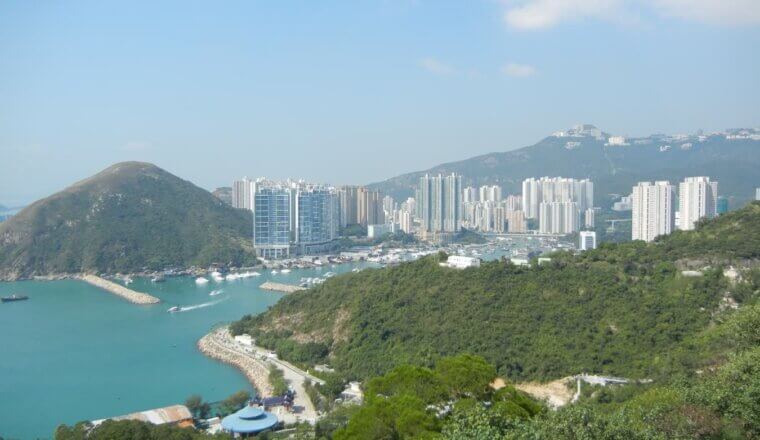
The 23 Best Things to Do in Hong Kong
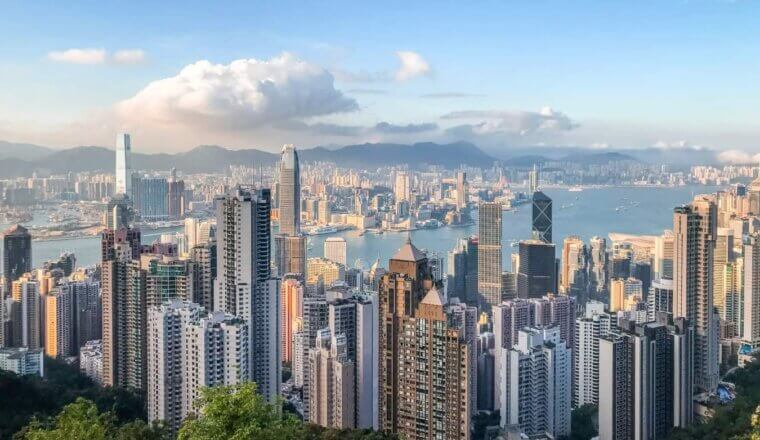
Hong Kong Itinerary: What to Do in 4 (or More) Days
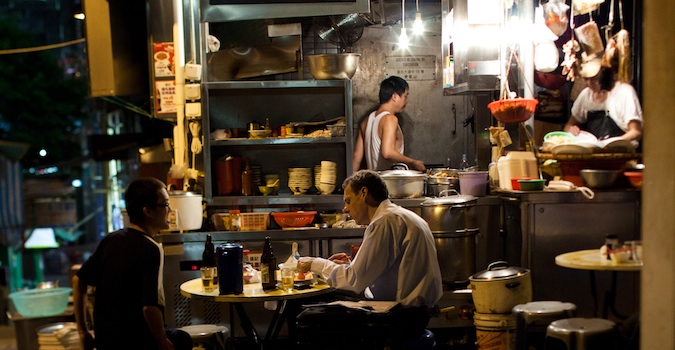
My Favorite Restaurants in Hong Kong
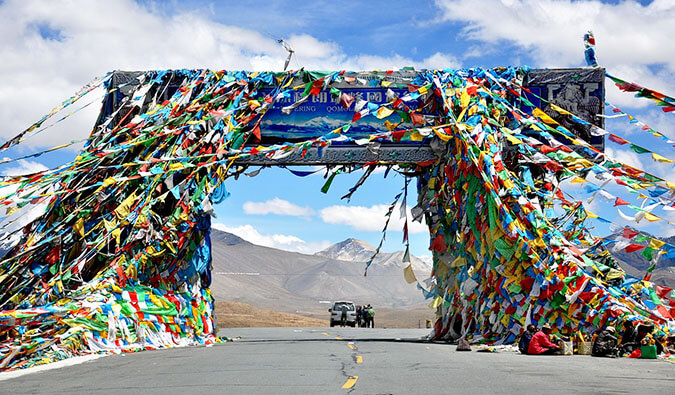
What Hitchhiking Solo as a Female in China Taught Me
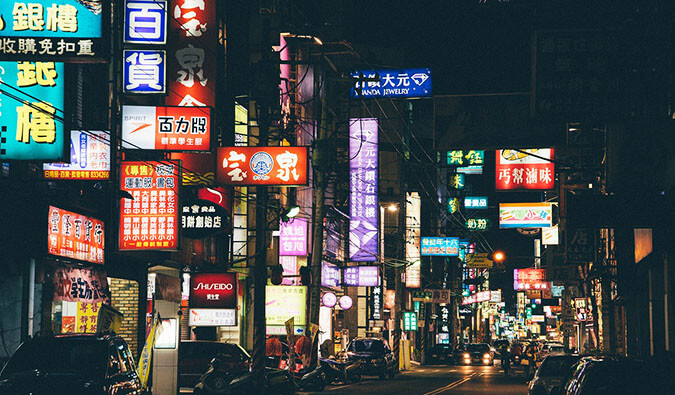
7 Lessons Learned from 3 Months in China
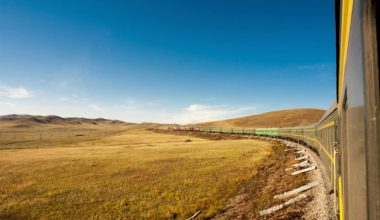
How to Travel the Trans-Siberian Railway
Get my best stuff sent straight to you, pin it on pinterest.
- Transportation
- Booking Resources
- Related Blogs
Travel Guide China
Book your individual trip , stress-free with local travel experts
- roughguides.com
- Travel guide
- Itineraries
- Local Experts
- Travel Advice
- Accommodation
Plan your tailor-made trip with a local expert
Book securely with money-back guarantee
Travel stress-free with local assistance and 24/7 support
Dr. Meiborg Christa Maria & Kiessling Andreas
We are very satisfied with the tour - Tour gudie, driver and the agency (Wendy). Always felt safe and well protected! Thank you!
Splendidly diverse in its geographic, ethnic, culinary and social make-up, China is a nation on the march. Developing at a rate unmatched in human history, already huge cities are adding sprawling suburbs and cutting-edge architecture on a day-by-day basis, even as an ever-expanding web of high-speed rail ties the country together.
Where to go in China
Outdoor activities in china, shopping in china, martial arts, tailor-made travel itineraries for china, created by local experts.

8 days / from 2208 USD
Sichuan Specialities: Chengdu, Temples and Pandas
Discover the Buddhist history and the natural wonders of Sichuan. From bustling Chengdu and its giant pandas, to the national parks and lake districts of Sichuan Province, to the giant Buddha statue at Leshan, this trip is perfect for those who want to discover this culturally rich part of China.

5 days / from 838 USD
Family Time in Guilin and Yangshuo
This 5-day family trip is a magnificent opportunity to experience the beautiful outdoor settings of Guilin and Yangshuo. Walk, cycle and raft through awe-inspiring scenery, including dramatic limestone karst mountains, and learn about the everyday lives of the Zhuang and Yao ethnic groups.

8 days / from 1962 USD
Sichuan Family Adventure
Sichuan is home to a rich and vibrant culture, stunning scenery and wildlife, and delicious cuisine. Spend time with Chengdu's giant pandas, trek around Mount Qingcheng, stand in awe of the world’s largest Buddha at Leshan, and much more, all with this exciting trip, which is perfect for families!
Nevertheless, this apparent modernity is based on a civilization that has remained intact, continually recycling itself, for over four millennia. Chinese script reached perfection during the Han dynasty (220 BC–220 AD), and those stone lions standing sentinel outside sleek new skyscrapers first appeared as temple guardians over three thousand years ago. Indeed, it is the tension and contrasts between change and continuity that make modern China so fascinating.
The first thing that strikes visitors to the country is the extraordinary density of its population. In much of China, villages, towns and cities seem to sprawl endlessly into one another along the grey arteries of busy expressways. Move to the far south or west of the country, however, and the population thins out as it begins to vary: indeed, large areas are inhabited not by the “Chinese”, but by scores of distinct ethnic minorities, ranging from animist hill tribes to urban Muslims. Here, the landscape begins to dominate: green paddy fields and misty hilltops in the southwest, the scorched, epic vistas of the old Silk Road in the northwest, and the magisterial mountains of Tibet.
While travel around the country itself is the easiest it has ever been, it would be wrong to pretend that it is an entirely simple matter to penetrate modern China. The main tourist highlights – the Great Wall, the Forbidden City, the Terracotta Army and the Yangzi gorges – are relatively few considering the vast size of the country, and much of China’s historic architecture has been deliberately destroyed in the rush to modernize. Added to this are the frustrations of travelling in a land where few people speak English, the writing system is alien and foreigners are sometimes viewed as exotic objects of intense curiosity – though overall you’ll find that the Chinese, despite a reputation for curtness, are generally hospitable and friendly.
- With an area of 9.6 million square kilometres, China is the fourth-largest country in the world and the most populous nation on earth, with around 1.35 billion people. Of these, 92 percent are of the Han ethnic group, with the remainder comprising about sixty minorities such as Mongols, Uyghurs and Tibetans.
- The main religions are Buddhism, Taoism and Christianity, though the country is officially atheist.
- China’s longest river is the Yangzi (6275km) and the highest peak is Qomolongma – Mount Everest (8850m) – on the Nepalese border.
- The Chinese Communist Party is the sole political organization, and is divided into Executive, Legislative and Judicial branches. The chief of state (President) and the head of government (Premier) are elected for five-year terms at the National People’s Congress.
- After decades of state planning, the economy is now mixed, with nationally owned enterprises on the decline and free-market principles ubiquitous.
China's Eastern Seaboard
Encompassing the provinces of Shandong, Jiangsu and Zhejiang, China’s eastern seaboard stretches for almost 2000km between the mouths of the Yellow and Yangzi rivers. These waterways have played a vital part in the cultural and economic development of China for the last two thousand years, and the area today remains one of the country’s economic powerhouses. Including Shanghai, a city flanked by Jiangsu and Zhejiang, the eastern seaboard is home to nearly 250 million people – meaning that, if somehow cleaved from China, it would be the world’s fourth most populous country. This makes for great transport infrastructure: comfortable, modern buses run along the many inter-city expressways, while the area has the country’s highest concentration of high-speed rail routes. Yet, however modernized the eastern seaboard might be, with cities which rank among the most sophisticated in the land, there’s plenty of visible history to get your teeth into as you journey around the region.

Shandong province is home to some small and intriguing places: Ji’nan, a large city in which you can go swimming in a hutong spring; Qufu, the birthplace of Confucius, with its giant temple and mansion; Tai Shan, one of the major pivots of the Taoist religion; and the coastal city of Qingdao, which offers a couple of beaches, swath of colonial architecture, lots of beer and seafood, and a ferry service to South Korea. Over in Jiangsu province there’s Nanjing, China’s large but likeable “southern capital”, and wonderful Suzhou, whose centre is crisscrossed by gorgeous canals, and dotted with classically designed gardens. Heading further south to Zhejiang province one will undoubtedly stumble across Hangzhou, which Marco Polo termed “the most beautiful and magnificent city in the world”; its Xi Hu (West Lake), still recognizable from classic scroll paintings, is deservedly rated as one of the most scenic spots in China. The same can be said of the enchanting island of Putuo Shan, which juts out of the sea just east of the mainland.
The region’s prosperity means that its accommodation is on the expensive side, though there are excellent youth hostels in almost all tourist centres. The climate varies a fair bit from north to south: Shandong’s is similar to that of Beijing; while the Yangzi River region, despite being low-lying and far from the northern plains, is unpleasantly cold and damp in winter, yet also unbearably hot and sticky during the summer – Nanjing’s reputation as one of the “three furnaces” of China is well justified. If possible, try to visit in spring (mid-April to late May), during which a combination of rain showers, sunshine and low humidity gives the terrain a splash of green as well as putting smiles on the faces of residents emerging from the harsh winter.
Fujian, Guangdong and Hainan Island
There’s something very self-contained about the provinces of Fujian , Guangdong and Hainan Island, which occupy 1200km or so of China’s convoluted southern seaboard. Though occasionally taking centre stage in the country’s history, the provinces share a sense of being generally isolated from mainstream events by the mountain ranges surrounding Fujian and Guangdong, physically cutting them off from the rest of the empire. Forced to look seawards, the coastal regions have a long history of contact with the outside world: this is where Islam entered China, and porcelain and tea left it along the Maritime Silk Road; where the mid-nineteenth-century theatricals of the Opium Wars, colonialism, the Taiping Uprising and the mass overseas exodus of southern Chinese were played out; and where today you’ll find some of China’s most Westernized cities. Conversely, the interior mountains enclose some of the country’s wildest, most remote corners, parts of which were virtually in the Stone Age a century ago.
Possibly because its attractions are thinly spread, the region receives scant attention from foreign visitors, except those transiting between the mainland and Hong Kong or Macau. And it must be admitted that a superficial skim through the region – especially the enormous industrial sprawl surrounding the Guangdong capital, Guangzhou – can leave a gloomy impression of uncontrolled development and its attendant ills. Yet below the surface, even Guangzhou has some antique architecture and a strangely compelling, lively atmosphere, while smaller cities – including the Fujian port of Xiamen, and Chaozhou in eastern Guangdong – seem partially frozen in time, staunchly preserving their traditions in the face of the modern world. Scenically, the Wuyi Shan range in northeastern Fujian contains the region’s lushest, most picturesque mountain forests; while way down south on Hainan Island lie the country’s best and busiest beaches where you can also surf and scuba dive.
As one of the longest-developed areas of the mainland, getting around the region is seldom problematic, though accommodation can be expensive and suffers huge seasonal fluctuations in price. The weather is nicest in spring and autumn, as summer storms from June to August bring sweltering heat and humidity, thunder, downpours and floods. In contrast, the higher reaches of the Guangdong-Fujian border can get very cold in winter.
Hong Kong and Macau
The handover of Asia’s last two European colonies, Hong Kong in 1997 and Macau in 1999, opened new eras for both. Despite a visible colonial heritage, the dominant Chinese character underlying these two SARs, or “Special Administrative Regions of China” is obvious: after all, Hong Kong and Macau’s population is 97 percent Chinese, the main language is Cantonese, and there have always been close ties – if tinged with distrust – with their cousins north of the border. It is hard to overstate the importance that the handovers had for the Chinese government, in sealing the end of centuries of colonial intrusion with the return of the last pieces of foreign-occupied soil to the motherland. Hong Kong and Macau’s population widely supported the transfer of power – if only to see how much leeway they could garner under the new administration. Both entities now find themselves in the unique position of being capitalist enclaves subject to a communist state, under the relatively liberal “One Country, Two Systems” policy coined by the late Chinese leader Deng Xiaoping.
First under colonial and now mainland Chinese rule, Hong Kong and Macau’s citizens have never had a say in their futures, so they have concentrated their efforts on other things – notably, making money. With its emphasis on economics and consumerism, Hong Kong offers the greatest variety and concentration of shops and shopping on earth, along with a colossal range of cuisines, and vistas of sea and island, green mountains and futuristic cityscapes. The excellent infrastructure, including the efficient public transit system, the helpful tourist offices and all the other facilities of a genuinely international city make this an extremely soft entry into the Chinese world.
While Hong Kong is a place to do business, Macau has leapt ahead in recent years as a haven for gambling, its thirty-odd casinos making the enclave a veritable Las Vegas of the East. The wealth has funded a modern cityscape, but evidence of its colonial past persists in extensive quarters of antique, Mediterranean-style architecture, along with Portuguese wine and Macanese cooking, a fusion of colonial and Chinese styles.
Visitors will spend more money here than elsewhere in China, though public transport and food are good value – even if accommodation is always pricey for what you get. Travellers on a tight budget who stay in dormitories can just about get by on HK$450 a day, though at the other end of the market in hotels, restaurants and shops, prices quickly rise to international levels.
Discover more places in China

- The Yangzi basin Travel Guide
- Dongbei Travel Guide
- Hebei and Tianjin Travel Guide
- The Yellow River Travel Guide
- Yunnan Travel Guide
- Hainan Island
Since 2008, when China hosted the Olympics, athletic passion has become almost a patriotic duty. But the most visible forms of exercise are fairly timeless; head to any public space in the morning and you’ll see citizens going through all sorts of martial-arts routines, playing ping pong and street badminton, even ballroom dancing. Sadly though, facilities for organized sport are fairly limited.
The Chinese are good at “small ball” games such as squash and badminton, and, of course, table tennis, at which they are world champions, but admit room for improvement in the “big ball” games, such as football. Nevertheless, Chinese men follow foreign football avidly, with games from the European leagues shown on CCTV5. There’s also a national obsession among students for basketball, which predates the rise to international fame of NBA star Yao Ming, who plied his trade for the Houston Rockets.
If China has an indigenous “sport”, however, it’s the martial arts – not surprising, perhaps, in a country whose history is littered with long periods of civil conflict. Today, there are hundreds of Chinese martial-arts styles, often taught for exercise rather than for fighting.
As for outdoor activities, hiking for its own sake is slowly catching on, though tourists have plenty of opportunities for step-aerobic-type exercise up long, steep staircases ascending China’s many holy mountains. Snow sports have become popular in Dongbei, which has several ski resorts, while the wilds of Yunnan and Sichuan, along with Qinghai and Tibet, are drawing increasing numbers of adventurous young city-born Chinese – always dressed in the latest outdoor gear – to mountaineering and four-wheel-drive expeditions.
China is a good place to shop for tourist souvenirs, folk art, clothes, household goods and faked designer labels – but not for real designer brands or electronic goods (including mobile phones), which are all cheaper at home or online. Even small villages have markets, while larger cities will also have big department stores, shopping malls and even international supermarket chains.
Prices in stores are fixed, but discounts (折扣, zhékòu) are common: they’re marked by a number between one and nine and the character “折”, indicating the percentage of the original price you have to pay – “8折”, for example, means that the item is on sale at eighty percent of its original price. At markets you’re expected to bargain for goods unless prices are displayed. If you can speak Chinese, hang around for a while to get an idea what others are paying, or just ask at a few stalls selling the same things; Chinese shoppers usually state the price they’re willing to pay, rather than beginning low and working up to it after haggling. Don’t become obsessed about saving every last yuan; being charged more than locals and getting ripped off from time to time is inevitable.
Souvenirs popular with foreign tourists include “chops” (stone seals with your name engraved in characters on the base); all manner of reproduction antiques, from porcelain to furniture; mementos of Mao and the Cultural Revolution – Little Red Books and cigarette lighters that chime “The East is Red”; T-shirts and “old-style” Chinese clothes; scroll paintings; and ethnic jewellery and textiles. Chinese tourists also look for things like local teas, “purple sand” teapots and bright tack. Pretty much the same selection is sold at all tourist sites, irrespective of relevancy. For real antiques, you need specialist stores or markets – some are listed in the Guide – where anything genuine is meant to be marked with a wax seal and requires an export licence to take out of the country. But be aware that, with world prices for Chinese art going through the roof, forgeries abound. The Chinese are also clued-up, avid collectors and value their culture highly, so don’t expect to find any bargains.
Clothes are a very good deal in China, with brand stores such as Giordano, Baleno, Metersbonwe and Yishion selling high-quality smart-casual wear. Fashion-conscious places such as Shanghai and Hong Kong also have factory outlet stores, selling last year’s designs at low prices, and all major cities have specialist stores stocking outdoor and hiking gear, though it often looks far better than it turns out to be for the price. Silk and other fabrics are also good value, if you’re into making your own clothes, while shoes are inexpensive too. With the Chinese youth racing up in height, finding clothing in large sizes is becoming less of an issue.
All bookshops and many market stalls in China sell music CDs of everything from Beijing punk to Beethoven, plus VCDs and DVDs of domestic and international movies (often subtitled – check on the back). While extremely cheap, many of these are pirated (the discs may be confiscated at customs when you get home). Genuine DVD films may be region-coded for Asia, so check the label and whether your player at home will handle them; there are no such problems with CDs or VCDs.
Hong Kong is the only place with a comprehensive range of Western goods; on the mainland, your best bet is to head to provincial capitals, many of which have a branch of Carrefour (家乐福, jiālèfú) or Wal-Mart (沃尔玛, wòěrmă), where you may find small caches of foreign goodies.
Thousands of martial arts have evolved in China, usually in isolated communities that had to defend themselves, such as temples and clan villages. All, though, can be classed into two basic types: external, or hard, styles concentrate on building up physical strength to overpower opponents; the trickier internal, or soft, styles concentrate on developing and focusing the internal energy known as qi . Both styles use forms – prearranged sets of movements – to develop the necessary speed, power and timing; as well as kicks, punches and open palm strikes, they also incorporate movements inspired by animals.
The most famous external style is Shaolin kung fu , developed in the Shaolin Temple in Henan province and known for powerful kicks and animal styles – notably eagle, mantis and monkey. The classic Shaolin weapon is the staff, and there’s even a drunken form, where the practitoner sways and lurches as if inebriated.
But the style that you’re most likely to see – it’s practised in the open air all over the country – is the internal tai ji quan . The body is held in a state of minimal tension to create the art’s characteristic “soft” appearance. Its emphasis on slow movements and increasing qi flow means it is excellent for health, and it’s a popular workout for the elderly.
Travel advice for China
From travel safety to visa requirements, discover the best tips for traveling to China
- Culture and Etiquette in China
- Eating and drinking in China
- How to get to China
- Getting around China: Transportation Tips
- Travel Tips China for planning and on the go
- Best time to visit China
The Rough Guides to China and related travel guides
In-depth, easy-to-use travel guides filled with expert advice.

Find even more inspiration here

Planning your own trip? Prepare for your trip
Use Rough Guides' trusted partners for great rates

written by Andy Turner
updated 10.01.2024
Ready to travel and discover China?
Get support from our local experts for stress-free planning & worry-free travels.
- Where to stay
- Travel advice

- Visa Application Helpline
Subscribe to our newsletter
Learn how to live a sustainable long-term travel lifestyle.
By signing up, you agree to the our terms and our Privacy Policy agreement.
Top 27 Places to visit in Darjeeling, Explore the Beautiful Hills of Darjeeling
Top 10 things to do when traveling to shimla: shimla travel guide, the ultimate paris travel guidelines for first timers | top attractions & things to do.

The Ultimate China Travel Guide: Unlocking China’s Splendors
China, a country of immense beauty and captivating diversity, is a destination that promises to leave you with an indelible impression on every traveler. With its rich tapestry of ancient history, breathtaking landscapes, vibrant culture, and modern marvels, this vast nation offers something for every type of adventurer.
In this blog, I will share with you the ultimate China Travel Guide to assist you in uncovering the most unforgettable experiences that this extraordinary country has to offer.
Find the best time to visit China, plan your trip, explore top destinations, and budget for your adventure to make the most out of your trip to China!
WHAT IS COVERED IN THIS ARTICLE?
The Ultimate China Travel Guide: How to Plan a Trip to China

A trip to China can be an exciting adventure, as it offers you a rich tapestry of cultural experiences, breathtaking landscapes, and historical marvels. However, to make the most of your journey and avoid unnecessary hiccups, thorough planning is essential.
But why should you put so much effort on planning this trip? Thorough planning is essential for a successful trip to diverse China as it:
- It maximizes your overall experience.
- It eases communication with locals.
- Planning simplifies the visa application process.
- It helps in optimizing your budget for the trip.
- It also allows customization of your visit to match your interests.
Step-by-Step Guide on Trip Planning
Here’s a step-by-step guide to help you plan your trip to China effectively:
Determine Your Travel Goals: Identify the regions and attractions you want to explore, whether it’s the Great Wall of China, the Terracotta Army, or the bustling streets of Beijing.
Set a Budget: Determine how much you’re willing to spend on your trip and allocate funds for different expenses such as flights, accommodations, food, and activities accordingly.
Check Visa Requirements: Depending on your nationality, China’s visa requirements may vary. Research and apply for the appropriate visa well in advance.
Choose the Best Time to Visit: China experiences different climates in different regions. Consider the weather and your preferred travel dates when deciding the best time to visit.
Book Flights: Search for flights to China, compare prices, and book your tickets. Major international airports like Beijing, Shanghai, and Guangzhou are common entry points.
Accommodation: Research and book your accommodations, considering your budget and preferred location. Options range from luxury hotels to budget-friendly hostels.
Create an Itinerary: Plan your daily activities and sightseeing. Include popular attractions, local experiences, and time for relaxation.
Learn About Local Culture: Familiarize yourself with Chinese customs and etiquette, which can enhance your travel experience.
Pack Smart: Pack suitable clothing and essential items for your trip, considering the weather and activities.
Stay Informed: Keep an eye on travel advisories and any specific travel restrictions or health-related guidelines related to China, especially if you’re traveling during unusual times.
By following these steps, you’ll be well-prepared for your adventure in China and can focus on immersing yourself in the country’s wonders!
Tips on Visas, Flights, and Accommodations
- Visas: Check the Chinese embassy or consulate website for the most up-to-date visa requirements. Ensure your passport is valid for at least six months beyond your intended departure date.
- Flights: Use flight comparison websites or apps to find the best deals on airfare. Be flexible with your travel dates to potentially score lower prices.
- Accommodations: Consider booking your accommodations through trusted platforms like Airbnb, Booking.com , or directly through hotels’ websites. Read reviews and select lodgings that cater to your preferences.
Best Time to Visit and Travel Restrictions
Here is a complete guide covering all the seasons:
Spring in China
Spring in China is a beautiful time to visit, with landscapes bursting into bloom. The weather is mild and sunny, with average temperatures ranging from 10 to 20 degrees Celsius. This makes it ideal for sightseeing and outdoor activities, such as hiking, biking, and visiting temples and gardens!
Some of the best places to visit in China during the spring include:
- Beijing : The Forbidden City, the Great Wall of China, and the Temple of Heaven are all must-see attractions in Beijing. During the spring, the city’s parks and gardens are also in full bloom.
- Shanghai : Shanghai is a vibrant city with a lot to offer visitors. In the spring, you can enjoy the city’s many parks and gardens, visit the Bund waterfront, or take a boat trip on the Huangpu River.
- Xi’an : Xi’an is home to the Terracotta Warriors, one of the most amazing archaeological discoveries of all time. In the spring, you can also visit the city’s many temples and mosques, or take a day trip to Mount Huashan, a sacred mountain known for its challenging hiking trails.
- Guilin : Guilin is known for its stunning scenery, including limestone karsts, rivers, and lakes. In the spring, you can take a boat cruise on the Li River to see the karsts up close, or visit the nearby town of Yangshuo for its laid-back atmosphere and scenic bike trails.
Summer in China
Summer in China can be hot and humid, especially in the south. Average temperatures range from 25 to 35 degrees Celsius, with high humidity levels. However, there are still many things to see and do in China during the summer, such as visiting beaches, hiking in the mountains, and attending festivals!
Some of the best places to visit in China during the summer include:
- Sanya : Sanya is a popular beach resort town in southern China. In the summer, you can enjoy the city’s many beaches, go swimming, snorkeling, or diving.
- Lijiang : Lijiang is a UNESCO World Heritage Site known for its well-preserved ancient town. In the summer, you can enjoy the town’s many canals and bridges, or take a day trip to Jade Dragon Snow Mountain.
- Harbin : Harbin is the capital of Heilongjiang province in northeastern China. It is known for its cold winters and its annual International Ice and Snow Festival.
Autumn in China
Autumn is another beautiful time to visit China. The weather is mild and sunny, with average temperatures ranging from 15 to 25 degrees Celsius. The leaves on the trees turn red and yellow, creating stunning scenery throughout the country.
Some of the best places to visit in China during the autumn include:
- Beijing : The Forbidden City and the Temple of Heaven are especially beautiful in the autumn, when the leaves on the trees turn red and yellow.
- Jiuzhaigou National Park : Jiuzhaigou National Park is a UNESCO World Heritage Site known for its stunning lakes, waterfalls, and forests. In the autumn, the park’s leaves turn red and yellow, creating a magical landscape.
- Huangshan Mountain : Huangshan Mountain is a sacred mountain in Anhui province. It is known for its towering granite peaks, pine trees, and clouds. In the autumn, the mountain’s leaves turn red and yellow, creating a breathtaking sight.
Winter in China
Winter in China can be very cold, especially in the north. Average temperatures range from -10 to 5 degrees Celsius, with snowfall common in many parts of the country. However, there are still many things to see and do in China during the winter, such as skiing, visiting hot springs, and attending festivals!
Some of the best places to visit in China during the winter include:
- Harbin : Harbin is known for its cold winters and its annual International Ice and Snow Festival. During the festival, you can see giant ice sculptures, snow castles, and ice slides.
- Yabuli Ski Resort : Yabuli Ski Resort is one of the largest ski resorts in China. It is located in Heilongjiang province and offers a variety of ski trails for all levels of skiers and snowboarders.
- Guilin : Guilin is also a popular winter destination, as the weather is mild and there are fewer tourists than in the summer.
No matter what time of year you choose to visit China, you are sure to have a memorable experience!
Top 10 Tourist Attractions in China
1. the great wall of china.

First on this list is The Great Wall of China , an architectural marvel that is etched into history. It beckons you to embark on an awe-inspiring journey through time. Located in northern China, this UNESCO World Heritage site is a testament to human ingenuity and perseverance.
You must visit here to experience the majestic allure of China’s rich history and resilience. Visiting this iconic structure allows you to walk in the footsteps of emperors and soldiers, offering a profound connection to the nation’s past.
The main attractions you must visit along the Great Wall include popular sections like Badaling, Mutianyu, and Jinshanling, each with its unique features and scenic vistas. You can hike along the wall, explore watchtowers, and capture breathtaking panoramic views of the surrounding landscape!
Best Time To Visit The Great Wall of China: The best time to visit is during the spring or autumn when the weather is pleasant, and the landscapes burst with color. To avoid the crowds, consider weekdays and early mornings for a more serene experience.
2. The Terracotta Army

Next is the Terracotta Army , an archaeological wonder nestled in Xi’an that invites you to delve into the fascinating world of ancient history and artistic mastery. This UNESCO World Heritage site is a testament to the power and legacy of China’s first emperor, Qin Shi Huang!
You must visit here to view this testament to human ingenuity and artistry. It’s an ancient marvel that showcases the craftsmanship of thousands of life-sized clay soldiers, horses, and chariots, created over two millennia ago to guard the tomb of Emperor Qin. A visit offers you a rare glimpse into the depths of China’s rich imperial history!
The main attractions you should visit within the site include the three massive pits containing the Terracotta Army, each revealing different aspects of the ancient soldiers’ roles and weaponry.
Best Time To Visit The Terracotta Army: The best time to visit is during the spring or autumn when the weather is pleasant and the site is less crowded. Arrive early in the morning to make the most of your visit and avoid the midday rush.
3. The Forbidden City

Another amazing place to visit in China is The Forbidden City , a UNESCO World Heritage site that beckons you to embark on a journey through the heart of imperial China. Located in the heart of Beijing, this historic palace complex is a must-visit destination if you seek a glimpse into the rich tapestry of Chinese history.
You must visit Forbidden City because it is an unparalleled repository of Chinese culture and heritage. As the former imperial palace for over five centuries, it offers you a unique opportunity to witness the grandeur and opulence of the Ming and Qing dynasties.
The main attractions within the Forbidden City you must visit include the Hall of Supreme Harmony, the Palace of Heavenly Purity, and the Imperial Garden. Don’t miss the Palace Museum, which houses countless treasures, or the awe-inspiring Meridian Gate!
Best Time To Visit The Forbidden City: The best time to visit is during the spring or autumn when the weather is mild, and the gardens are in full bloom. Avoid the peak summer and winter months to enjoy a more comfortable experience.
4. The Li River Scenic Area

The next best place to visit in China is The Li River Scenic Area . Here, You get to explore an enchanting natural landscape that has inspired poets and artists for centuries. Located in the Guilin, Guangxi Zhuang Autonomous Region of China, this destination beckons you to experience the sublime beauty of the region.
You must visit here to experience the otherworldly karst landscape, where picturesque limestone peaks rise dramatically from the water’s edge. As you drift along the river on a leisurely cruise, you’ll be surrounded by breathtaking scenery straight out of a traditional Chinese painting.
The main attractions you must not miss within the Li River Scenic Area include the unique karst formations such as Elephant Trunk Hill, Nine Horses Mountain, and the Yellow Cloth Shoal. The charming town of Yangshuo, with its vibrant street markets, is another highlight you must explore.
Best Time To Visit The Li River Scenic Area: The best time to visit is during the spring or autumn when the weather is pleasant, and the landscape is at its most picturesque. The lush greenery of spring and the golden hues of autumn enhance the region’s natural beauty.
5. The Zhangjiajie National Forest Park

Next place on this list is Zhangjiajie National Forest Park which is a natural wonder that invites you to step into a realm of surreal landscapes and captivating beauty. Located in Hunan Province, this UNESCO World Heritage site is a must-visit destination for nature enthusiasts and adventure seekers!
If you love nature, you must visit here to explore its towering sandstone pillars and lush greenery, which served as inspiration for the breathtaking landscapes in the movie “Avatar.” It offers an otherworldly experience that feels like a journey through a fantasy world!
The main attractions within the park you can explore include the Avatar Hallelujah Mountain, the mesmerizing Tianzi Mountain, and the awe-inspiring Golden Whip Stream. The Zhangjiajie Glass Bridge, the world’s highest and longest glass-bottomed bridge, is also a thrilling addition to your visit.
Best Time To Visit The Zhangjiajie National Forest Park: The best time to visit is during the spring or autumn when the weather is comfortable, and the landscape is at its most vibrant. To avoid crowds, aim for weekdays and early mornings.
6. Potala Palace
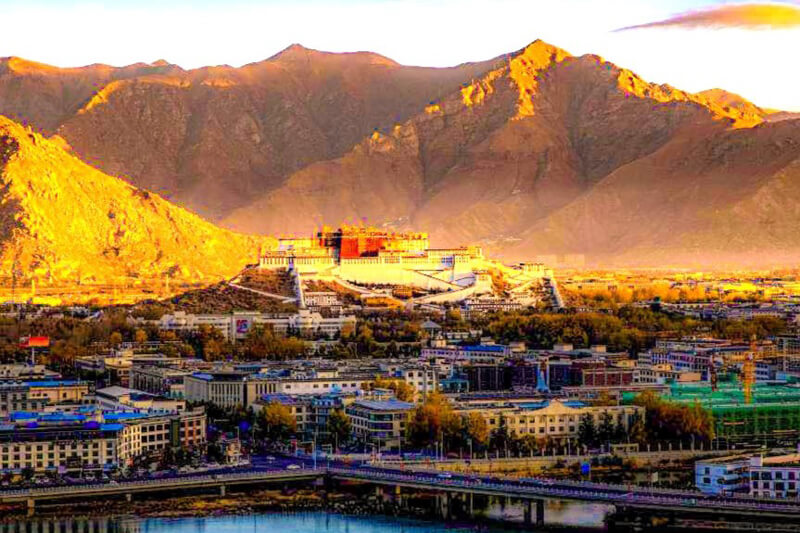
The Potala Palace , a UNESCO World Heritage site in Lhasa, Tibet, invites you to embark on a spiritual and architectural journey like no other. Perched on the Red Hill, this iconic palace is a testament to Tibetan culture, history, and the enduring legacy of Buddhism.
You must visit here to explore this symbol of Tibetan Buddhism and a reflection of Tibet’s rich heritage. It’s not only an architectural masterpiece but also a pilgrimage site for Buddhists worldwide. Visiting here is an opportunity for you to immerse yourself in the spiritual and cultural heart of Tibet!
The main attractions within the Potala Palace include the White Palace, the Red Palace, and the sacred chapels and shrines. The murals, sculptures, and ancient artifacts provide you a glimpse into Tibetan history and artistry.
Best Time To Visit The Potala Palace: The best time to visit is during the spring or early autumn when the weather is relatively mild, and the skies are clear. Be aware that the palace has limited daily visitor slots, so it’s advisable to book your tickets well in advance.
7. Emperor Qinshihuang’s Mausoleum Site Museum

The next amazing place to visit in China is the Emperor Qinshihuang’s Mausoleum Site Museum . Located in Xi’an, China, it is an archaeological wonder that invites you to journey back in time to the ancient Chinese empire. This UNESCO World Heritage site is a testament to the First Emperor’s grandeur and the rich history of the Qin Dynasty.
You must visit here as this museum is home to the renowned Terracotta Army, an army of life-sized clay soldiers and horses that were buried alongside the First Emperor to protect him in the afterlife. It’s also a remarkable display of ancient craftsmanship and an extraordinary historical artifact.
The main attraction within the museum is, of course, the Terracotta Army, but it also includes various other artifacts and exhibits that provide you insights into the life and times of Emperor Qin Shi Huang. The Bronze Chariots and Horses Exhibition Hall is a must-see addition.
Best Time To Visit Emperor Qinshihuang’s Mausoleum Site Museum: The best time to visit is during the spring or autumn when the weather is comfortable, and the crowds are less overwhelming. Be sure to arrive early to avoid the peak visitor hours.
8. The Bund

The Bund , a historic waterfront promenade in Shanghai, is another gorgeous place for you to experience the city’s rich past and vibrant present. This iconic destination is a testament to Shanghai’s evolution from a trading port to a modern metropolis.
You must visit here to experience this captivating juxtaposition of old and new. On one side, you’ll find a collection of colonial-era buildings showcasing European architecture, while on the other, you’ll be greeted by the futuristic skyscrapers of Pudong.
The main attractions along The Bund you can visit include the Peace Hotel, Customs House, and the Bund Sightseeing Tunnel, which takes you beneath the river to Pudong. The area comes to life at night when the buildings are illuminated, creating a breathtaking urban spectacle!
Best Time To Visit The Bund: The best time to visit is in the evening, as the Bund truly comes alive with its dazzling lights and stunning skyline views. The months of spring and autumn offer the most pleasant weather for exploring this iconic waterfront.
9. Leshan Giant Buddha

The Leshan Giant Buddha is another perfect place to visit in China. Located near Leshan City in Sichuan, It is a monumental masterpiece of ancient art and engineering that calls you to explore its serene majesty. This UNESCO World Heritage site is a captivating symbol of Buddhism’s enduring influence and a testament to human ingenuity.
You must visit here to see the largest stone Buddha statue in the world, standing at a towering 71 meters (233 feet) in height. Carved into the cliffside during the Tang Dynasty, it’s not just a testament to religious devotion but also an incredible engineering marvel. Visiting here offers a profound sense of reverence and appreciation for both history and culture!
The main attraction is, of course, the Giant Buddha itself, which you can explore from various vantage points, including a boat ride on the river. The surrounding area also includes temples, shrines, and stunning natural scenery, providing a well-rounded experience.
Best Time To Visit Leshan Giant Buddha: The best time to visit is during the spring or autumn when the weather is pleasant and the crowds are relatively smaller. Plan your visit in the morning to avoid the midday rush.
10. Chengdu Research Base of Giant Panda Breeding

The last, but certainly not the least, best place to visit in China is the Chengdu Research Base of Giant Panda Breeding , nestled in the heart of Sichuan. It offers you a unique opportunity for panda enthusiasts and nature lovers to witness the world’s most beloved endangered species up close. This renowned research facility is a sanctuary for giant pandas and is dedicated to their conservation and breeding.
You must visit here and get a rare chance to observe giant pandas in a semi-wild environment. As the leading center for panda research and breeding, it plays a crucial role in preserving these iconic creatures. Your visit not only supports their conservation but also offers a remarkable educational experience!
Of course, The main attraction is the giant pandas themselves. You can watch them roam, play, and even eat bamboo, which is their favorite food. The base is also home to other wildlife species, including red pandas, which adds to the experience.
Best Time To Visit Chengdu Research Base of Giant Panda Breeding: The best time to visit is during the morning when the pandas are most active and before the crowds arrive. Spring and autumn are ideal seasons, as the weather is comfortable, and the pandas are often more active.
The Best Part of China to Visit
China, a diverse and culturally rich country, offers a range of regions for you to discover, tailored to your preferences as a traveler.
- Coastal Cities:
- Shanghai : A modern hub where you can enjoy shopping and vibrant nightlife.
- Beijing : Immerse yourself in history at the Forbidden City and Great Wall.
- Hong Kong : Experience a unique blend of eastern and western influences in this bustling city.
- Scenic Natural Landscapes:
- Guilin : Delight in picturesque karst landscapes and explore ancient villages.
- Zhangjiajie : Hike among the breathtaking “Avatar Hallelujah Mountain.”
- Jiuzhaigou Valley: Find serenity in crystal-clear lakes and cascading waterfalls.
- Historical and Cultural Sites:
- Xi’an : Discover the Terracotta Army and walk along the ancient city wall.
- Chengdu : Experience history, culture, and savor delicious Sichuan cuisine.
- Pingyao : Step back in time in a well-preserved walled city from the Ming and Qing dynasties.
- Ethnic Minority Regions:
- Yunnan : Immerse yourself in unique cultural experiences and explore ethnic diversity.
- Tibet : Embark on a spiritual and adventurous journey to discover Tibetan culture and high-altitude landscapes.
In conclusion, the best part of China for you to explore depends on your specific interests as a traveler.
How Much Does It Cost to Visit China
The cost of visiting China can vary widely depending on your travel style, preferences, and the cities you plan to explore. Here’s a breakdown of typical expenses for a trip to China:
- Accommodation: Accommodation costs vary from budget to luxury options. In major cities like Beijing and Shanghai, a mid-range hotel might cost $80 to $100 per night, while luxury hotels can exceed $200. Budget travelers can find hostels or guesthouses for $30 to $50 per night.
- Food: Chinese cuisine is diverse and budget-friendly. Street food and local restaurants offer affordable meals for as little as $5, while dining in upscale restaurants can cost $20 or more. A daily food budget can range from $15 to $40, depending on your preferences.
- Transportation: Transportation in China is efficient and budget-friendly. Subway and bus rides are usually under $1, while long-distance bullet train tickets range from $50 to $200. Domestic flights cost $100 to $300, but consider economical high-speed trains for city-to-city travel when budgeting.
- Activities: Entrance fees to popular tourist sites vary, with some costing $10 to $30, and others being free. Cultural activities, shows, and guided tours may add to your expenses. Budget an extra $10 to $30 per day for activities.
Budgeting tips:
- Opt for local street food and eateries to save on food costs.
- Consider using public transportation and walking to explore cities.
- Plan your trip during the shoulder seasons to find better deals on accommodation and flights.
- Purchase a local SIM card or use Wi-Fi to avoid international data roaming charges.
China offers a wide range of options to suit different budgets, from affordable backpacking to luxurious travel. Careful planning and research can help you make the most of your budget and have a memorable experience in this diverse and culturally rich country.
China offers everyone a wide array of attractions, each steeped in history and culture. Planning a trip to China involves thoughtful consideration of expenses and preferences. From choosing accommodations to savoring the diverse culinary scene and utilizing efficient transportation, you can personalize their experiences to match their budgets and interests.
With all the incredible wonders and experiences China has to offer, doesn’t the charm of this country call out to you?
If you enjoyed reading about ways to make the most of your China trip, do check out our other travel inspiration blogs. If you have your own adventurous stories to share, we would love to hear from you.
Frequently Asked Questions (FAQ’s)
What are five fun things to do in china.
Five fun things to do in China include exploring the Great Wall, visiting the Terracotta Army, enjoying traditional tea ceremonies, experiencing vibrant street markets, and trying authentic Chinese cuisine.
Is China cheap or expensive?
China’s cost can vary, but it’s generally considered an affordable travel destination, offering both budget and luxury options.
What is China unique for?
China is unique for its rich history, diverse cultures, stunning natural landscapes, and the Great Wall, one of the world’s most iconic landmarks.
Is China tourist friendly?
China is generally tourist-friendly, with many English-speaking services and a growing tourism infrastructure.
Who visited China the most?
China’s most visited by tourists from within Asia, with countries like South Korea, Japan, and the United States also contributing significant numbers.
What is a popular activity in China?
A popular activity in China is practicing Tai Chi in parks, a traditional martial art that promotes health and relaxation.
What is China’s favorite food?
Popular Chinese foods include dishes like Peking duck, dumplings, and various regional cuisines, with rice and noodles being staples.
Related Posts
Maldives travel guide: tourist places, culture & budget breakdown to plan a trip to maldives, top 25 best countries to visit: your ultimate travel destination guide, the 20 best things to do in medina: make your pilgrimage even more satisfying, the top 13 highest motorable roads in the world: dangers & route details.
Save my name, email, and website in this browser for the next time I comment.
This site uses Akismet to reduce spam. Learn how your comment data is processed .
Type above and press Enter to search. Press Esc to cancel.
- Guilin & Yangshuo
- Yangtze River Cruises
- Yellow Mountain
- Zhangjiajie
- Jiuzhaigou National Park
- China Multi-city tours
China Destinations: 100+ China Tourist Destinations
With over 100 destinations to choose from, China offers a vast array of options for foreign travelers. Whether you prefer the grandeur of the Great Wall as it snakes through rugged landscapes or the tranquil allure of Hangzhou's West Lake, each step in this remarkable country unveils a new facet of its beauty and culture. Which destination in China captures your imagination?
In Beijing , the imposing Forbidden City stands as a testament to imperial grandeur, its opulent halls echoing with stories of emperors past. Journey to Xi'an and witness the awe-inspiring Terracotta Army , an army frozen in time, guarding the eternal legacy of the Qin Dynasty. For a taste of cosmopolitan China, venture into the vibrant heart of Shanghai . Its neon-lit skyline paints a mesmerizing backdrop to a city pulsating with energy and creativity. And in Chengdu , immerse yourself in the culinary delights of Sichuan cuisine, while encountering the beloved Giant Panda in its natural habitat.
Nature enthusiasts are rewarded with surreal landscapes that defy imagination. Marvel at the towering limestone pillars of Zhangjiajie , the inspiration behind the floating mountains of "Avatar." Seek solace amidst the mist-laden peaks of Huangshan , a painter's dream come to life.
At Asia Odyssey Travel, we have dedicated teams in multiple destinations, ready to provide you with first-hand travel information tailored to each location. Whether you're planning a trip to Beijing, Xian, Guilin, Shanghai, or any other destination, we are here to ensure you have the most up-to-date and reliable guidance for your China Tour .
(Updated Travel Guide in Each Destination with Tailor-made Experiences)
Top 8 China Destinations for First-timers
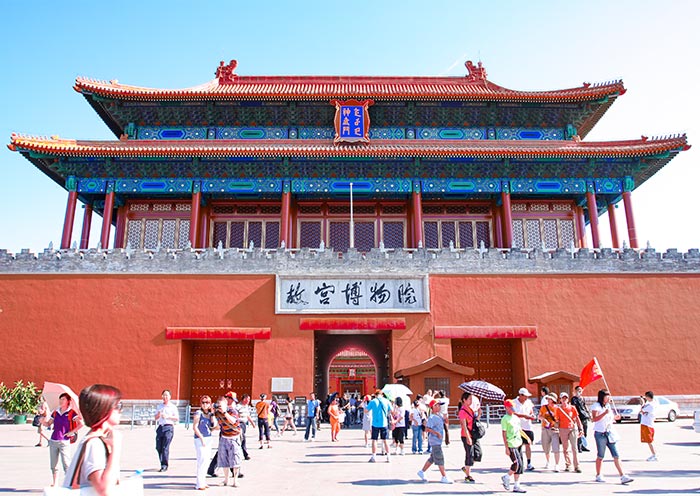
Find Tours on China Destinations Map
View china destinations by region.
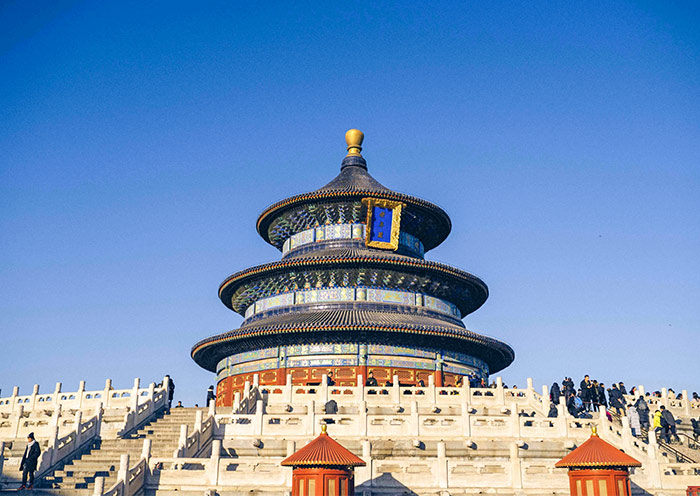
Recommended China Tours with Hot Destinations
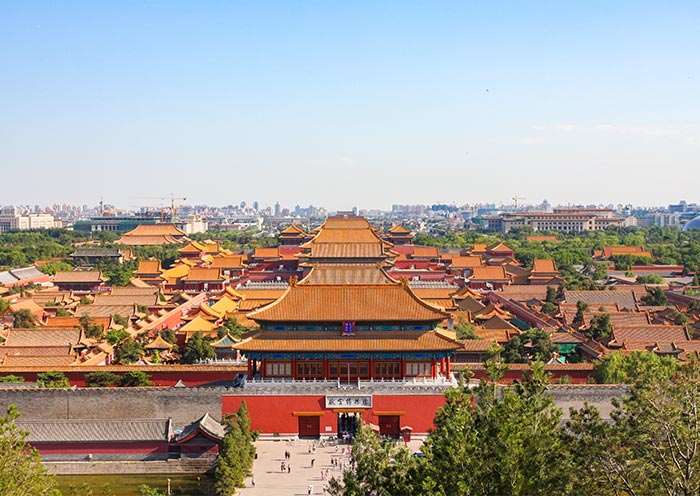
China Destinations from A to Z
- Fujian Tulou
- Great Wall of China
Useful Travel Articles for Hot Destination in China
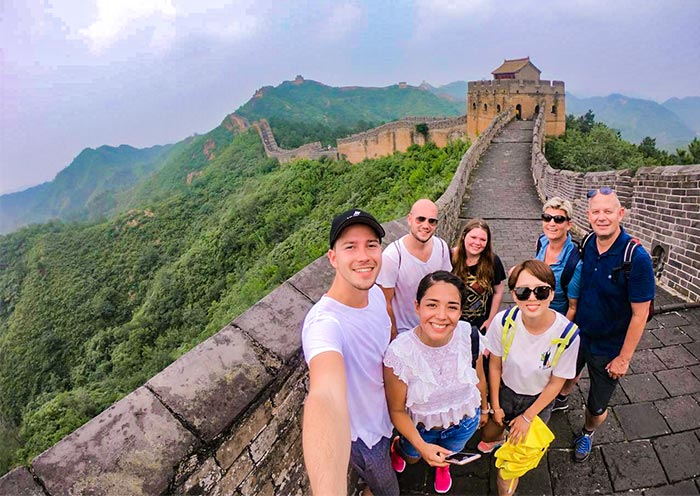
China Destinations FAQs - Plan Your China Destinations Worry-Free
How many days to spend in Beijing for a tour? The ideal length of time to explore in Beijing depends on your interests, schedule, and budget. However, to get a good feel for the city and see the major attractions, we would recommend to spend at least 2-4 full days in Beijing .
During this time, you can visit iconic landmarks such as the Great Wall, Forbidden City, Summer Palace, and Temple of Heaven, discover historic neighborhoods like the Hutongs, sample delicious food (such as Beijing Duck & dumplings) at local eateries and markets, and experience the vibrant culture and nightlife of the city. Of course, there are many other interesting sites to explore in and around Beijing, such as the Confucius Temple (Guozijian), Lama Temple (Yonghegong), and the Olympic Park (Birds' Nest & Water Cube), among others.
When you have 5 or more days , you can travel to another city like Xian by high speed train after touring Beijing .
The Great Wall of China is a vast and complex system of fortifications that stretches across several Chinese provinces. While some of the most popular and well-known sections of the wall are located near Beijing, there are many other sections of the wall that are worth visiting and can be accessed from other cities. Here are the places to visit the Great Wall of China :
1.Great Wall of Beijing : The most popular and well-known sections of the wall are located near Beijing, such as the Mutianyu Great Wall , Jingshanling Great Wall , Simatai Great Wall , Jiankou Great Wall , and Badaling Great Wall.
2. Great Wall of Shanhaiguan: This section of the Great Wall is located in Qinhuangdao, a coastal city in Hebei province. It is known for its unique architecture and stunning coastal views.
3. Great Wall of Jiayuguan: This section of the Great Wall is located in Jiayuguan, a city in Gansu province. It is known for its western-style fortifications and desert landscapes.
4. Great Wall of Dunhuang: This section of the Great Wall is located in Dunhuang, a city in Gansu province. It is known for its colorful murals and stunning desert landscapes.
5. Great Wall of Henan Province: There are several sections of the Great Wall located in Henan province, including the Yuntai Mountain section and the Yinxu section, which is known for its ancient ruins.
6. Great Wall of Inner Mongolia: There are several sections of the Great Wall located in Inner Mongolia, including the Hulunbuir Grassland section and the Hohhot section, which is known for its unique architecture.
The amount of time you should spend in Xian depends on your travel plans and interests. A typical itinerary includes 2 to 3 days to visit the major attractions in Xian , but it is possible to spend more time if you want to explore the city and its surrounding areas in more depth.
Terracotta Warriors and Horses Museum Layout
The T erracotta Warriors and Horses Museum , which houses the main pits containing the warriors, is divided into three sections: Pit 1, Pit 2, and Pit 3 .
Pit 1: The largest and most impressive of the three pits, Pit 1, houses the main army formation, with over 6,000 figures (2,000 are currently on display). The pit covers an area of approximately 14,260 square meters, equivalent to the size of an airplane hangar.
Pit 2: This pit is notable for its complex layout and variety of military figures, including standing and kneeling archers, cavalry, charioteers, and infantry. Despite being smaller than Pit 1, Pit 2 offers a richer diversity of the army, providing further insights into ancient military strategy and the mysteries of the army array.
Pit 3: Known as the command center, Pit 3 is the smallest but considered the most important pit due to its perceived role as the army's "headquarters."
Our Recommended Visiting Route: Pit 1 – Pit 3 – Pit 2 - Exhibition Hall
Begin with Pit 1 as it's the largest and most stunning, offering a grand first impression. Spend ample time here observing the soldiers' intricate details and formations. Next, move on to Pit 3, where you will see the army's "headquarters." Then, proceed to Pit 2, where you will encounter a more diverse array of military figures. Finally, conclude your visit at the Exhibition Hall, where you can marvel at the history of the Terracotta Warriors and Horses.
Suggested Visiting Time: 2-3 hours
The Longji Rice Terraces are primarily inhabited by the Zhuang and Yao ethnic minority groups. These two ethnic groups have a long history in the region and have played a significant role in the cultivation and preservation of terraces.
The Zhuang people are the largest ethnic minority group in China and have a strong presence in Guangxi Zhuang Autonomous Region, where the Longji Rice Terraces are located. They have their own unique language, culture, and traditions, and are known for their agricultural practices and skilled craftsmanship.
The Yao people , also known as the Mien or Iu Mien, are another ethnic minority group that resides in the Longji Rice Terrace area. They have their own distinct language, customs, and clothing, and are known for their expertise in herbal medicine and traditional embroidery.
Visitors to the Longji Rice Terraces have the opportunity to interact with the local Zhuang people in Ping’an Village and Yao people in Dazhai Village and Huangluo Yao Village , learn about their cultural heritage, and appreciate their contributions to the preservation of the terraces. The ethnic minority villages in the area offer insights into their traditional way of life, including their unique architecture, festivals, and traditional clothing.
The number of days you need in Guilin depends on your travel preferences and the depth of exploration you desire. Usually, it is suggested to spend at least 2 days in Guilin and Yangshuo to experience the main highlights. It allows you to visit popular attractions such as the Li River , Elephant Trunk Hill, Reed Flute Cave, and explore the picturesque Yangshuo countryside.
However, if you wish to delve deeper into the region and immerse yourself in its natural beauty, culture, and activities, it is recommended to allocate 3 to 6 days or more. You can have in-depth exploration of attractions like the Longji Rice Terraces, Yangshuo's karst landscape, Xingping Town on the bank of the Li River, ethnic minority villages, cycling or hiking adventures, and leisurely river cruises.
You can check more on: How to Plan a Guilin Tour | Ultimate Guilin Planning Guide >>
Zhangjiajie is a small city but has many things to see and do. Travelers are highly recommended to spend at least 3 days in Zhangjiajie , and most of them prefer to spend 4 days, while some may even plan for 5 days in this Avatar destination.
The number of days to spend in Zhangjiajie depends on your interests and the activities you wish to engage in. However, to fully explore the highlights of Zhangjiajie and its surrounding areas, a recommended duration is around 3 to 5 days. This timeframe allows you to visit popular attractions such as the Yuanjiajie Avatar Mountains (Zhangjiajie National Forest Park in Wulingyuan), Tianzi Mountain, Zhangjiajie Grand Canyon, and Tianmen Mountain.
Within 2 to 3 days , you can immerse yourself in the stunning natural landscapes of both Wulingyuan (world heritage) and Tianmen Mountain. Within 4 to 5 days , you can also explore other nearby attractions, such as the glass bridge at Zhangjiajie Grand Canyon and the charming Fenghuang Ancient Town. Of course, if you have more time available, you can extend your stay to further immerse yourself in the region's beauty and delve deeper into the local culture.
A Yangtze River Cruise can last from 4 to 11 days, the most common options are 4-5 night cruises between Chongqing to Yichang that cover key attractions such as the Three Gorges, Three Gorges Dam.
Chongqing to Yichang Downstream: 4 Days and 3 Nights
Yichang to Chongqing Upstream: 5 Days and 4 Nights
Wuhan to Shanghai Downstream: 7 Days and 6 Nights
Shanghai to Wuhan Upstream: 7 Days and 6 Nights
Chongqing to Shanghai Downstream: 11 Days and 10 Nights
Shanghai to Chongqing Upstream: 11 Days and 10 Nights
The number of days you should spend in Shanghai depends on your interests, the activities you plan to undertake, and the pace at which you prefer to explore the city. However, a suggested duration for a well-rounded visit to Shanghai is around 1 to 5 days. This time frame allows you to experience the city's major attractions, delve into its rich culture, and also have some time for day trips to nearby destinations. Contact us to tailor your Shanghai Tour according to your interests and the experiences you seek.
Here's a sample itinerary to give you an idea: Day 1: Explore the Bund, visit Shanghai Museum, wander along Nanjing Road, and enjoy the vibrant atmosphere of the city center. In the evening, take a Huangpu River cruise to admire the illuminated skyline. Day 2: Discover the traditional side of Shanghai by visiting Yu Garden, City God Temple, and exploring the charming alleys of Tianzifang or Xintiandi. Indulge in local cuisine and experience Shanghai 's vibrant street food scene. Day 3: Take a day trip to a nearby water town such as Suzhou or Zhouzhuang, where you can experience the classical gardens, historic architecture, and tranquil canals. Day 4: Visit modern landmarks like the Shanghai Tower, Shanghai World Financial Center, and the Shanghai Urban Planning Exhibition Center to gain insight into the city's futuristic development. Explore the trendy district of Jing'an or French Concession for shopping and dining. Day 5: If you have an extra day, consider another day trip to Hangzhou to visit the stunning West Lake, and Lingyin Temple, and experience the famous Longjing tea culture.
Of course, you can adjust this itinerary based on your preferences and the specific attractions you wish to prioritize. Shanghai has a lot to offer, including museums, art galleries, markets, parks, and a vibrant nightlife scene. So, the more time you have, the more you can explore and immerse yourself in the city's diverse offerings.
Hong Kong offers a range of attractions worth exploring, including Victoria Peak (太平山顶), Hong Kong Disneyland (迪士尼), Ocean Park (海洋公园), Tian Tan Buddha (天坛大佛), Hong Kong Museum of History (香港历史博物馆), Avenue of Stars (星光大道), and the bustling markets like Temple Street Night Market (庙街夜市) and Ladies' Market (女人街).
Recommended China Tours


Beijing Travel Guide
Attractions
- Top 10 Things to Do
Transportation
Travel tips.
- 1 Day Tours
- 2 Days Packages
- 3 Days Sightseeing
- 4 Days Best Beijing
- 6 Days Beijing Xi'an
- 6 Days Beijing Shanghai
Being capital of the People's Republic of China, Beijing is the nation's political, economic, and cultural center. Located in north China, close to the port city of Tianjin and partially surrounded by Hebei Province, it also serves as the most important transportation hub and port of entry. As one of the six ancient cities in China, Beijing has been the heart and soul of politics throughout its long history and consequently there is an unparalleled wealth of discovery to delight and intrigue travelers as they explore the city's ancient past and exciting modern development. Now it has become one of the most popular travel destinations in the world, with about 140 million Chinese tourists and 4.4 million international visitors in a year.
Recommended Guided Tours
Travel planning.
- Top 10 Places to Visit
- How to Plan a Trip to Beijing Step by Step
- Where to Stay - 10 Best Areas
- Top 10 Historical Sites You Should Not Miss
- 12 Free Things to Do
- 10 Fun Things to Do with Family
- Travel to Beijing with Kids - 11 Things to Do
- 9 Most Romantic Places for Couples
- Top 10 Cool Things to Do for Youngsters
- 8 Interesting Places You May Not Know
- 7 Unusual Things to Do for Return Visitors
- Top 10 Things to Do in Winter
- 15 Wonderful Places to See Snow
- 10 Non Touristy Things to Do
- Weekend Trips
- Capital Airport
- Beijing - Shanghai Train
- Daxing Airport
- Beijing - Xi'an Train
- Nanyuan Airport
- Beijing - Hong Kong Train
- Capital Airport Shuttle Bus
- Daxing Airport Shuttle Bus
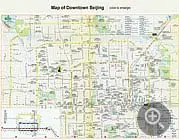
- Western Restaurants
- Vegetarian Restaurants
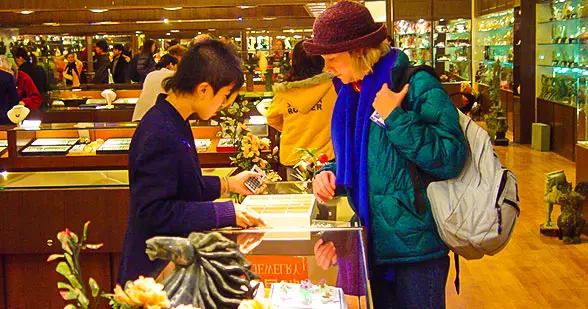
- Peking Opera
- Performance
- 8 Things to Do at Night
- Embassies & Consulates
- 144-Hour Visa-Free Transit
- Hospitals & Clinics
- Area Code & Zip Code
- Useful Phone Numbers
- Famous Universities
- International Schools
- Libraries & Book Bars
You May Like
- Top 10 China Destinations for First Time Travelers
- 10 Places to Visit in China for a Trip of a Lifetime
- 10 Best Places to Visit in China for Return Visitors
- 8 Major Cities in China for Enthusiastic Shoppers

How To Apply For China's Tourist Visa: Easy Step-By-Step Guide
I had never been as frustrated with travel planning as when I was applying for my 10-year tourist visa to China this year.
I didn’t blame the fact that China required a visa, I blamed the confusing process of how to apply. The lack of a step-by-step guide for people in the USA mixed with the confusing lawyer-like language used in the China Embassy’s official documents = pure confusion on what to do.
After scouring the web to piece together the full process, I finally set out to apply for the 10-year tourist visa. In less than a week of applying online , I picked up my visa and was good to travel for the next 10 years!
Looking back on it, I’m glad I got it over with early on in my travel planning process. I would’ve hated to have to deal with all of this 1-2 weeks before my trip!
For reference, I applied for the 10-year tourist visa in April, but my trip wasn’t until November.
Once you figure out HOW to apply and actually submit your application, it’s really not too bad. Especially since I’ve created this easy-to-understand guide to walk you through all the steps you need to apply for your very own China tourist visa.
NOTE: This guide is for US citizens applying for the tourist visa (L) within the USA. I don’t have experience with any other countries/nationalities, thanks!
Before Applying For The China Tourist Visa: Things You Need To Know
- The first and most important thing I need to mention: there is no way of applying for a China visa completely online . You will need to physically provide your passport to a visa office at some point. There’s no way around this, and that’s because they need to stick your new China visa onto one of the pages in your passport.
- You must start by completing a visa application form to apply for a China visa. This can be done online or on paper.
- You’ll then need to submit your visa application form + supporting documents to a China Visa Application Service Center (this is a physical place). These are going to be at a Chinese embassy or consulate somewhere in the USA. There are multiple locations.
- You can’t just choose any location you feel like. You have to go to the one that services your state/area. More on this later.
- a recently-taken color photo behind a white wall (can be uploaded digitally if filling out the application online, or a physical photo if applying on paper application)
- a valid passport
- printed out visa application + confirmation letter
- other supporting documents (more on this later)
- You’ll need to visit the visa office twice: first to submit your application, then again in 3-4 days to pick up your passport (with your brand new China visa inside).
- You can apply in person for yourself, have someone else turn in the forms for you / pick up your visa for you, or pay a travel agency to do it all for you.
- That’s the general overview of the process. Let’s dive into the details a bit more.
Step 1: Find a consulate location that services your area.
The first thing you’ll want to do is locate which Consulate General location you’ll have to go to in order to apply for (and pick up) your visa. You can use this link to see all the current locations.
You CANNOT pick one randomly, you can only go to the one that services your area.
So how do you know which consulate you have to go to? Locate where you live on this list or this list . Your state/region will be listed under one of the consulates. That’s the one you’ll need to go to.
For example, I live in Northern California, so I had to go to the Consulate General in San Francisco . If you live in Utah, your assigned location is the Embassy in Washington DC.
Also, note that the area formerly serviced by the Houston consulate is temporarily being serviced by the Embassy in the United States (DC location) as the one in Houston closed down.
Step 2: Fill out the COVA application
Start your online application . Go to the China Online Visa Application (COVA) and fill out the application using your information.
You’ll be asked all kinds of questions: personal information, the type of visa you’re applying for, how long you want it for, names of family members (parents), work history, emergency contact info, where you’re going to be traveling to in China and on what dates, where you’ve traveled to in the last 12 months, etc.
I would allot 30 minutes of your time to fill out the whole application. It felt like forever when I was applying, but I think it took me about 30 minutes. You can always save your progress if you need to look up information and revisit the application process at a later time.
Just be sure to note your application ID so you can pull it up later.
I’ll give you some pointers on how I filled out my application because some questions were quite confusing.
- One of the first things you need to do is upload your passport photo. I took a selfie against a wall and used Lightroom to turn my gray background white. The system accepted the photo. (Background must be white!)
- For Given name(s), it should include your first name followed by any middle name(s). It needs to match the name on the passport.
- For National ID number, I applied with N/A
- For Type of Visa, I selected (L) Tourism. Here are the rest of the visa types for reference.
- For Visa Duration, I entered 120 months with a maximum stay of 60 days. I also chose “multiple” for the number of entries.
- For Itinerary information, I ballparked my travel dates from city to city (Hong Kong – Xi’An – Chengdu – Chongqing) as I had not yet booked my flights, but I gave the best estimate I could based on where we were in the trip planning process.
- Since they are no longer requiring flight confirmations and hotel confirmations, the trip itinerary section doesn’t need to be very detailed. Addresses of hotels didn’t seem to even be required fields (I filled out half of them for the ones we had already booked).
- For Work Experience info, I did the best I could but it’s okay not to be exact. For example, I included my previous employer’s general phone number instead of my supervisor’s number. You can also provide a quick description of your job duties (my example: “blogger/travel writer”). No need to go into detail.
Normally visa applications take 3-4 days to process, but you can specify in this application to expedite it (2-3 days).
I chose not to expedite my application. I applied on a Monday and received a pick-up date of Thursday .
How quickly do you need the visa?
- If you live in the area and can get to the visa office pretty easily, no need to expedite.
- If you’re traveling from out-of-state to apply, you’ll probably want to expedite to save on an extra night’s worth of hotel costs.
- If your trip’s departure is like next week, you’ll probably want to expedite to be on the safe side!
Should you apply for a 3-month visa or a 10-year visa? The visa process is the same regardless if you apply for 3 months or 10 years. Moreover, it’s currently the same price!
My entire family and I went for the 10-year option as we knew we’d be visiting China a lot once my parents retired!
Step 3: Print out/gather all your documents.
Once you finish filling out the application, you’ll get a confirmation letter that looks like it’s got QR codes on it. You’ll have to print this out along with a few other things to bring to the visa office.
Here’s the full list that was required of me when I was applying (April 2024). Be sure to check for the latest requirements !!!
- Confirmation letter – you need to print and sign this
- Completed visa application – you need to print and sign this (on the last page)
- Your physical passport
- Photocopy of your passport’s bio page (the page that shows the photo and the document number)
- Proof of residence documentation (a photocopy of your ID, bank statement, utility bill, etc.)
- I did single-sided printing and printed pages in color just in case.
- When you print the visa application, make sure to include the confirmation page as the first page.
- I did not bring a physical copy of my photo since I had uploaded it along with my online application. This was not asked for at the visa center either.
Step 4: Show up at the visa center.
At the time of writing, you can’t make appointments online. They are taking walk-ins only.
When you are looking for the address of where to go, look for the consulate’s Visa Application Office , not the general Embassy address.
For example, I GPS’ed to the Consulate General of the People’s Republic of China in San Francisco . Once I got to the door (on Laguna St.), I saw a sign letting visa application visitors know that the Visa Application Office was on the street perpendicular to where I was (Geary Blvd.).
Depending on the time you visit, be prepared to wait.
I showed up at 9:15am on a Monday (15 minutes before they opened) and there were at least 70 people in line in front of me. Despite the crazy-sounding line, it didn’t take as long as I had anticipated! I was out of there by 10:55am.
PRO TIP: For the SF location, show up near closing time as opposed to first thing in the morning. I asked the security guard when the best time to visit was for the shortest lines, and he told me “at the end of the day, right before we close”.
This may vary by location, so take that tip with a grain of salt! But when I went to pick up my visa 3 days later, I showed up at 1:50pm (the visa office closed at 2:30pm) — and he was right — no lines! There must have been 10 people in the entire office compared to my initial visit where there were 100+ people waiting at the same time.
Once you’re there, hand all of your documents to the visa processer. He/she will look your application over (rather quickly) and make sure you have all the necessary docs. They will then take all of your documents (including your passport) for processing/approval.
If all looks good, you’ll get a slip of paper (pick-up slip) telling you exactly what date to come back to pick up your passport. You can come anytime on that date. Again, no appointment is needed.
My experience: For proof of residence, I had actually just brought my physical driver’s license instead of making a photocopy of it. The lady told me I had to go to make a photocopy of it, then go back to her window once I was done with that.
Luckily, the office had a set of photocopiers (costs $0.25 per page) as well as passport photobooths (for people who forget to bring photos for their applications). Bring quarters or some dollar bills in case you need to use the copy machine.
Step 5: Pick up your passport.
After a few days, it’s time to go back to pick up your passport. When you go to pick up your passport, you will pay for the visa at this time.
There’s a separate line that moves much faster for passport pick-ups. For my pick-up, I was in and out of the visa office in under 10 minutes.
Since a lot of people applying for China visas are from out of state, they often worry about how long it takes to pick up their passports.
Again, in general, your passport will be ready in 2-4 days, depending on if you choose expedited service.
Also, you don’t even need to be the one showing up at the visa office! Per the Los Angeles consulate site , “visa applications may be submitted in person by the applicant or someone else with the passport and all supporting documents”.
Once you flip through your passport booklet, you’ll find a brand-new visa glued to one of your passport pages. Viola ! You are ready to go to China!
Lastly, stay updated with the latest info!
The latest info/updates will always be on the China Visa Applications website . I know, it’s hard to read because of how outdated and simple the site looks, but there’s always useful info on there.
Like when I was applying, I was able to see that they had recently reduced the visa fee to $140, regardless of how long the visa’s duration is. And that at the end of 2023, they had actually simplified the visa application to not require flight confirmations, proof of hotel reservation, or invitation letters.
Meanwhile, all the other outdated websites and blog posts out there mentioned needing an invitation letter.
To be clear, as of April 2024 (when I wrote this), invitation letters are NOT required.
Always refer to the China Visa Applications website for the latest info!
Hope this step-by-step guide to applying for the China tourist visa was helpful. You can message me if you have any additional questions about applying for a tourist visa as a US citizen.
Other Posts You’ll Love:
Where to stay in osaka, japan: neighborhood guide, 23 top things to do in shinjuku, tokyo’s high-energy district, 21 fun and exciting things to do in tokyo at night, 10 best budget hotels in tokyo (near jr yamanote line), 10 other cities worth visiting near tokyo, japan, 15 best hotels in tokyo near jr yamanote line (with map).
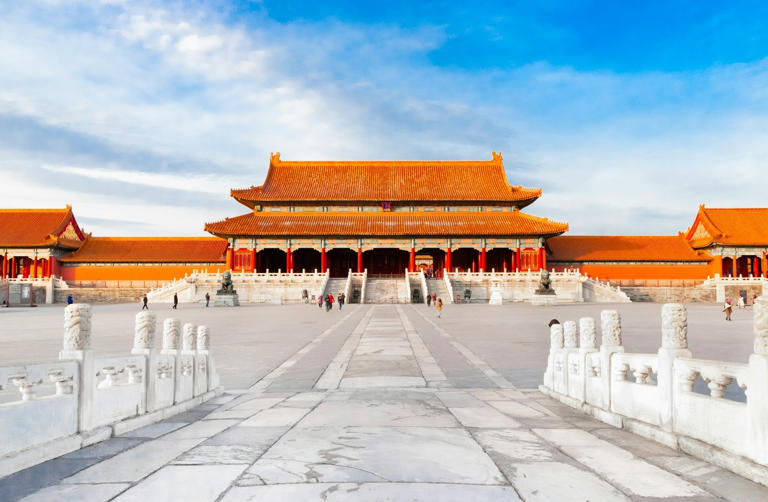
We've detected unusual activity from your computer network
To continue, please click the box below to let us know you're not a robot.
Why did this happen?
Please make sure your browser supports JavaScript and cookies and that you are not blocking them from loading. For more information you can review our Terms of Service and Cookie Policy .
For inquiries related to this message please contact our support team and provide the reference ID below.
US travel sector faces long wait for China tourism to hit 2019 highs
- Medium Text
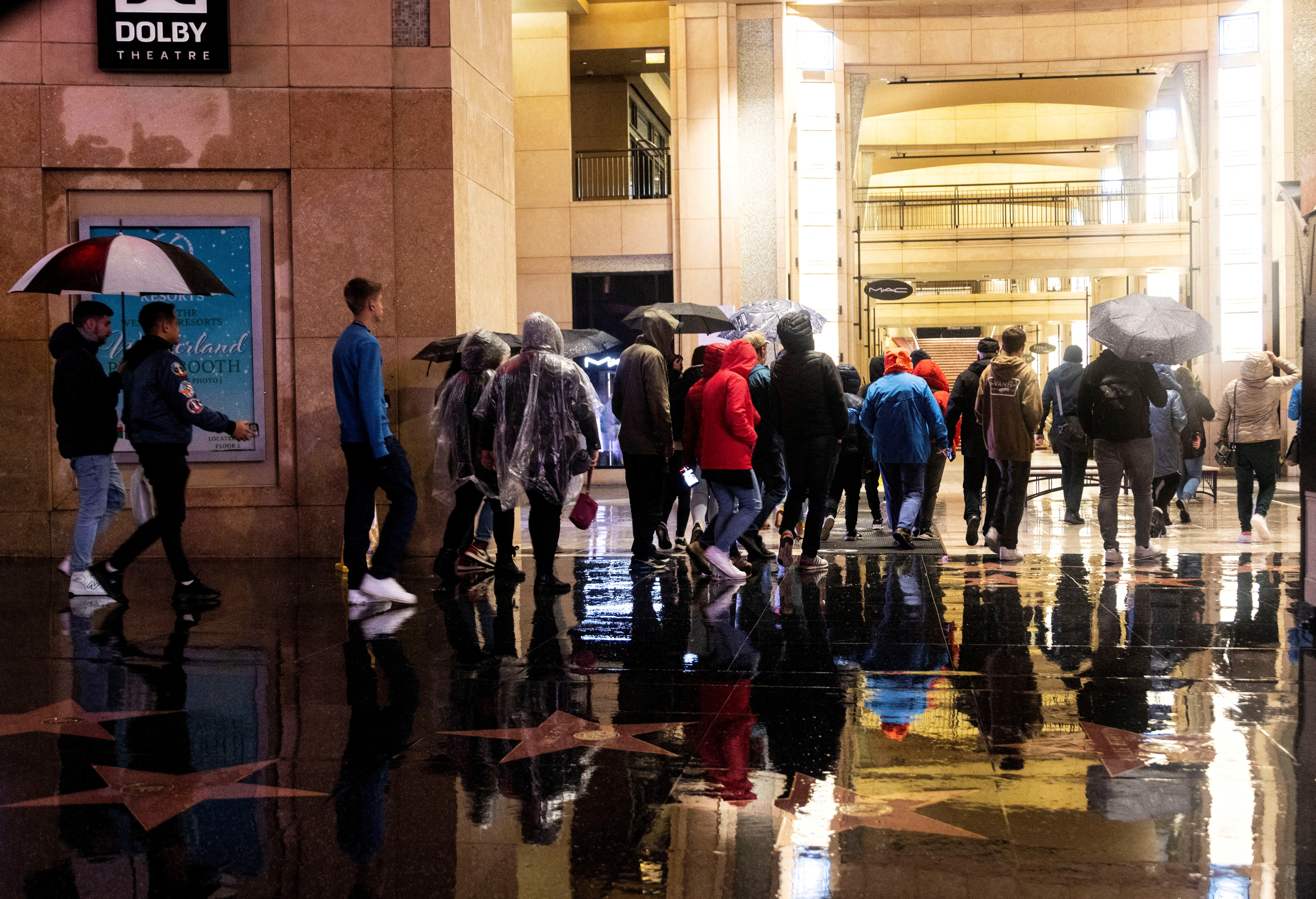
Sign up here.
Reporting by Aishwarya Jain in Bengaluru; Editing by Devika Syamnath
Our Standards: The Thomson Reuters Trust Principles. New Tab , opens new tab

Markets Chevron

Take Five: Fed straight ahead
A U.S. Federal Reserve meeting and Apple and Amazon reporting results will keep investors' focus in the days ahead on the global rates outlook and on tech earnings, while growth and inflation data from Europe and China are also coming out.

Kokoda Track in 'worst condition' in more than 30 years amid falling tourist numbers
Charlie Lynn led trekkers across the rugged Kokoda Track for three decades — guiding Australians as they paid tribute to soldiers who fought and died there in World War II.
But after his 101st trip last year, he decided enough was enough.
The mountainous 96-kilometre trail — a place of pilgrimage for tourists commemorating one of Australia's pivotal military victories — has fallen too far into disrepair, according to Mr Lynn.
"It's in the worst condition it's ever been in, in the 32 years that I've trekked across it," he said.
He described parts around Brown River, far inland on the track, as "death traps".
"You would hardly call it a track. It's about 10 metres above the river and if anybody has a misstep with their pack on … you will never find them again," he said.
Mr Lynn, the son of a WWII veteran, led one of the first Australian tourist groups across the famous track on the 50th anniversary of the battle in 1992.
Since then, it's become an important source of income for villagers along the trail, bringing in 50 million kina ($20.4 million) annually to PNG's economy.
But amid a decline in visitor numbers and concerns about the management of the Kokoda Track, PNG's tourism authority is seeking oversight of the agency tasked with managing tourist operations on the trail.
Trail has become 'the wild west'
The Battle of Kokoda is among the most celebrated Australian victories of WWII, when Australian soldiers and Papua New Guinean villagers repelled the Japanese advance on Port Moresby along the mountain trail.
It forged an enduring bond between Australia and Papua New Guinea, which is now symbolised by the track — something that Prime Minister Anthony Albanese will mark as he walks part of it on Anzac Day after arriving in PNG on Monday.
At its tourism peak in 2008, about 5,600 trekkers crossed the Kokoda Track.
Since then, Mr Lynn says, numbers have dropped 46 per cent, and some believe the trail is not fulfilling its tourism potential.
Mr Lynn said the experience for tourists had suffered as management of the trail had declined.
"There's not one decent toilet across the trail for them," he said.
"What you'll have is two or three groups of 50-60 arriving at a campsite that only has capacity for 25 and they'll be having heated arguments for who stays there that night.
"It's become the wild west."
Another trekking operator, Mick O'Malley, isn't as critical and says he has seen improvements.
"We are head and shoulders above where we used to be when I first started trekking," he said.
"I agree … it would be great to have amazing toilets but, by the same token, toilets in Australia aren't run by the government. It's private enterprise.
"It's not the government's responsibility to make sure toilets and guest houses are clean and up to standard."
Researchers Kyline Koroka and Shahar Shalom Yadin, who published a paper on the Kokoda Track in the Journal of South Pacific Law, are calling for authorities and tourism operators to consult more with local communities that host the trail.
A 'semitrailer in a sedan car park'
The Kokoda Track Authority (KTA), established about 20 years ago, oversees tourism operations on the trail and sits under PNG's Department of Provincial and Local-level Government Affairs (DPLGA).
However, deputy chairman of the PNG Tourism Promotion Authority, Andy Abel, said it was put in the hands of the wrong department.
"It should have been parked within the PNG Tourism Promotion Authority because Kokoda Trail trekking … is a tourism asset," he said.
"It's like parking a semitrailer in a sedan car park.
"When I realised how the tourism authority was spending millions of kina promoting the trail in Australia, but we had no control over it, I made it my business to correct it."
Mr Abel is spearheading a push to shift the management rights of the Kokoda Track Authority from the DPLGA to the PNG Tourism Promotion Authority.
He expects it to be approved within three months.
"I've met with the minister for tourism, I've met with the governor, I've met with the prime minister … so it's now just a matter of time, and not when, for that National Executive Council submission to go before cabinet and that transfer to take place."
The ABC approached the Kokoda Track Authority for comment.
KTA chief executive Julius Wargirai has previously defended the agency, saying it is working to improve transparency and grow the benefits of the track for local people.
He has also said the KTA had limited power to increase the benefits for people living on the track.
In the meantime, there are plans to encourage more tourists back to PNG by funding improvements to the Kokoda Track and building more WWII attractions in Port Moresby.
Mr Abel and Port Moresby Governor Powes Parkop have signed a memorandum of understanding with Canada Bay Council in Sydney and not-for-profit organisation Network Kokoda to make the improvements.
Mr Parkop said under the plan, historic sites such as Paga Hill, Wardstrip and Sabama would undergo development for new memorials.
He said he would like memorial sites built in the Central and Oro provinces as well.
"The plan from our city is to also encourage tourism in the area of war pilgrimage," he said.
Mr Parkop said the National Capital District government (Port Moresby) would work with Network Kokoda and memorial designers to come up with ideas for installations.
One idea included placing WWII aircraft at Wards Airstrip, which was used by heavy bombers and transport planes during the conflict.
And Mr Parkop wants to extend the tourism market beyond Australia.
"There is a very big gap in the market," he said
"I think the potential for us to get more numbers here than Gallipoli is there, but the government hasn't really developed and harnessed this potential to create the facilities.
"And of course, the other market is the Japanese and USA. We want to invite them too so they can tell their story and their version of things, so they can pay respect to lost loved ones."
- X (formerly Twitter)
Related Stories
These rusting shipwrecks are a big drawcard for divers. they're also ticking time bombs.
Bone fragments in PNG underwater wreck identified as Australian WWII crew
Inside this brightly coloured pod is white slimy gold. Tiny PNG villages are cashing in
Two Australian businessmen bought a casino in a tropical paradise — only to shut it down
- Foreign Affairs
- Papua New Guinea
- Tourism and Leisure Industry
- Travel Health and Safety
- Travel and Tourism (Lifestyle and Leisure)
- World War 2

IMAGES
VIDEO
COMMENTS
With its wide-ranging cultural heritage and convenient travel amenities, China is also an outstanding choice for family vacations. From the iconic Great Wall to Shanghai's soaring skyscrapers, all the way up to the "Roof of the World" and beyond, a trip to China guarantees an unforgettable, once-in-a-lifetime experience.
See our comprehensive guide to common tourist traps in China and how to avoid them. 19. Avoid budget tour groups. In order to save costs and maximize profits, budget tour groups are generally large, noisy, and very rushed, with lots of time-wasting lining up, and getting on and off buses for commission shop stops. Avoid this option if you want ...
China Travel Guide. China, situated in east Asia, is the third largest country in the world, with stunning natural scenery, five millennia of history and an old continuous civilization. There are a lot to consider before, during and after your China tour. You need to do some itinerary (destinations, attractions and featured activities) planning ...
The best of China: 14 places you won't want to miss. Feb 21, 2024 • 5 min read. Ancient Buddhas? Ultra-modern cities? Tasty dim sum? Baby pandas? Our list of the best places to visit in China has all this and more.
Our China guide gets you closer to top travel destinations, top things to do, and a useful travel guide. We are here to make you understand China more deeply and plan a trip easier. Capital: Beijing (since 1271) Population: 1.41 billion (2021) Area: 9.6 million km² (3.7 million mi²) Location: East Asia.
It is advised to bring no more than 2kg dried mongo and no more than 400 cigarettes. China travel tips and advice for planning a China tour including things you should know before going to china such as the people, climate, visa, hotel, food, what to pack, transportation, shopping, insurance, money exchange, map, customs and more.
14. Forbidden City, Beijing. Among China's imperial sights, none can compare in size, grandeur or mystique to Beijing's Forbidden City. Built between 1406 and 1420, this sprawling palace was off-limits for 500 years until the overthrow of the last Qing emperor in 1911.
Famed as the Venice of China, this ancient water town has been around for over 1,700 years. Originating as a busy market town, today it's one of the best-preserved ancient towns in the country. We'll take you here to marvel at the historical buildings like spice stores, rice shops, banks and a Qing Dynasty post office.
The top 15 famous tourist attractions in China include the famous Great Wall, Terracotta Army, the Forbidden City, and more. See more information and photos. ... A nice trip to Beijing with a caring and knowledgeable guide . We came to China and first stop was at Beijing. Helen, the excellent guide came with a big car and a nice lady driver ...
Xian Terra-Cotta Warrior. Guilin Li River. Chengdu Pandas. Lhasa Potala Palace. Silk Road. Best China Tours for Expats in China: ☛ 3 Days Classic Zhangjiajie Natural Wonders Tour. ☛ 2 Days Leisure Chengdu Private Tour with Panda Visit. ☛ 3 Days Beijing Essential Short Stay Tour.
Zhangjiajie - a place you have to see when you travel to China. Top 5 Places to Visit in China. Mount Huangshan - the UNESCO World Heritage is one of the most scenic highlights in the world. The impressive landscape features daunting peaks, thick forests composed of oddly-shaped pine trees and dense clouds covering the sky.
China has tens of thousands of trained and licensed tour guides. Some of them may also be teachers, librarians, etc., working as guides part time, but all of them must pass a strict examination to be qualified to work as a tour guide. Hiring a tour guide can cost varying amounts, but you can expect to be paying $100-$200 per day.
Get information on China Travel Guide - Expert Picks for your Vacation hotels, restaurants, entertainment, shopping, sightseeing, and activities. Read the Fodor's reviews, or post your own.
China Travel Costs. Accommodation - Prices start at around 30 CNY for an 8-10 bed dorm in many of the smaller cities. Expect to pay closer to 85 CNY in Hong Kong and Beijing. For a private room, prices begin around 110 CNY though expect to pay almost double that in the larger cities.
Outdoor activities in China. Since 2008, when China hosted the Olympics, athletic passion has become almost a patriotic duty. But the most visible forms of exercise are fairly timeless; head to any public space in the morning and you'll see citizens going through all sorts of martial-arts routines, playing ping pong and street badminton, even ballroom dancing.
Some of the best places to visit in China during the spring include: Beijing: The Forbidden City, the Great Wall of China, and the Temple of Heaven are all must-see attractions in Beijing. During the spring, the city's parks and gardens are also in full bloom. Shanghai: Shanghai is a vibrant city with a lot to offer visitors.
China Small Group Tours 2024/2025. Join a small group tour at the lowest price and enjoy top-notch services provided by the largest online China travel agency! There are 10 itineraries covering the most popular destinations and below are the three best sales. Best of China 8 Days Beijing/ Xian/ Shanghai from.
China City Guide TravelChinaGuide.com focuses on supplying wonderful vacations in China. Detailed introduction to over 300 Chinese cities displays the destinations' tours, attractions, hotels, transportation, food, shopping, nightlife, weather, pictures, maps and travel tips.
Discover the top 8 China destinations for first-timers. Immerse yourself in the history of Beijing and Xian, encounter adorable pandas in Chengdu, cruise along the stunning Li River in Guilin, explore the vibrant city of Shanghai, hike the breathtaking Huangshan Mountain, and experience the vibrant cultures of Hong Kong and Guangzhou.
Beijing Travel Guide Being capital of the People's Republic of China, Beijing is the nation's political, economic, and cultural center. Located in north China, close to the port city of Tianjin and partially surrounded by Hebei Province, it also serves as the most important transportation hub and port of entry.
Hope this step-by-step guide to applying for the China tourist visa was helpful. You can message me if you have any additional questions about applying for a tourist visa as a US citizen.
Data from China's National Immigration Administration showed 141 million total exits and entries in the first quarter of 2024. Foreign nationals accounted for 13 million of those, roughly a ...
The return of China's travelers has long been awaited in the travel industry, which is expected to surpass pre-pandemic levels this year by contributing $11.1 trillion to the global economy. The ...
China gradually began lifting travel-related restrictions from January 2023 and fully lifted group tour restrictions in August last year, but the resultant rise in Chinese arrivals to nearly 1.1 ...
PNG's tourism promotion authority is pushing to gain oversight of the agency managing tourist operations of the track, and there are plans to create more wartime attractions around the country.